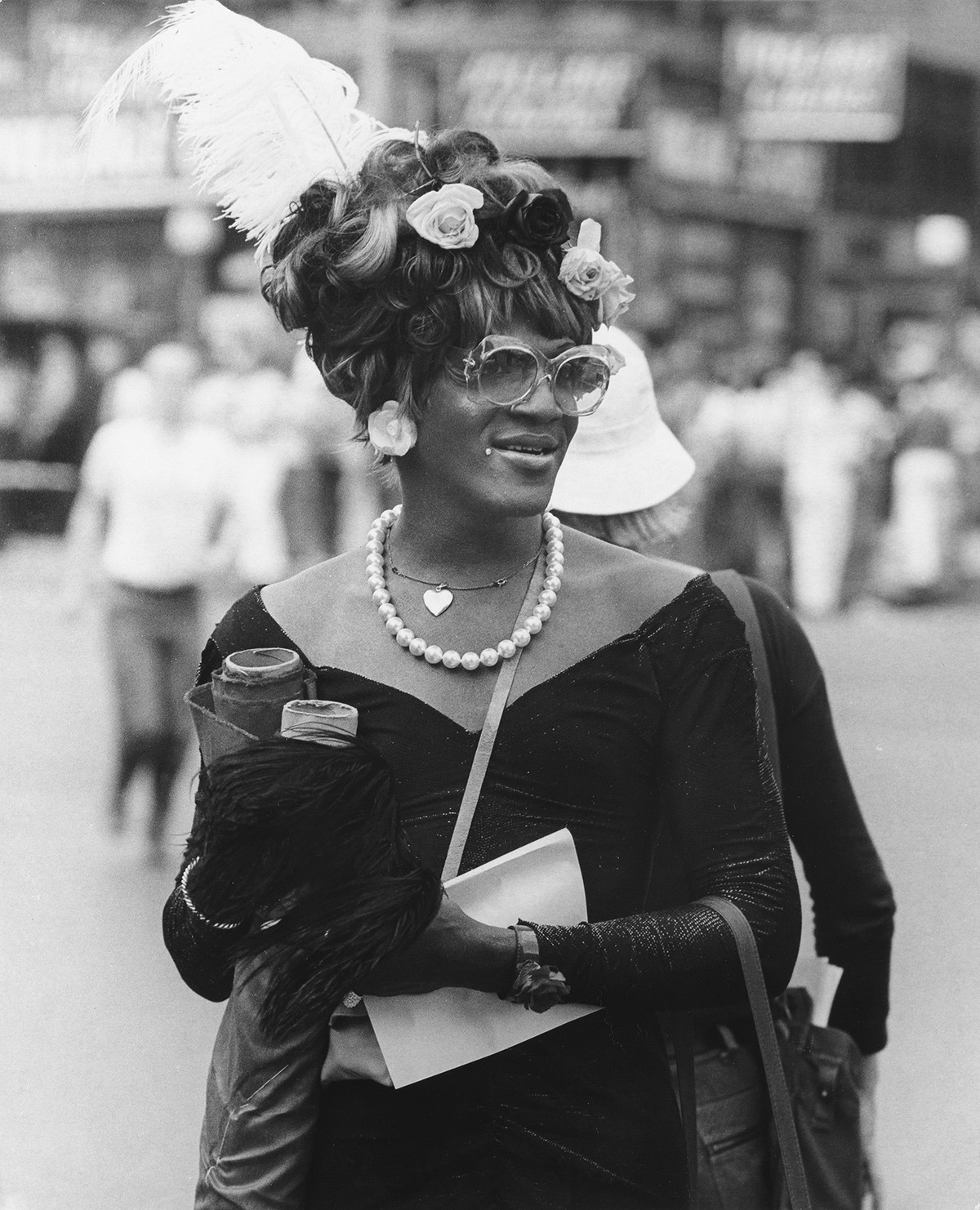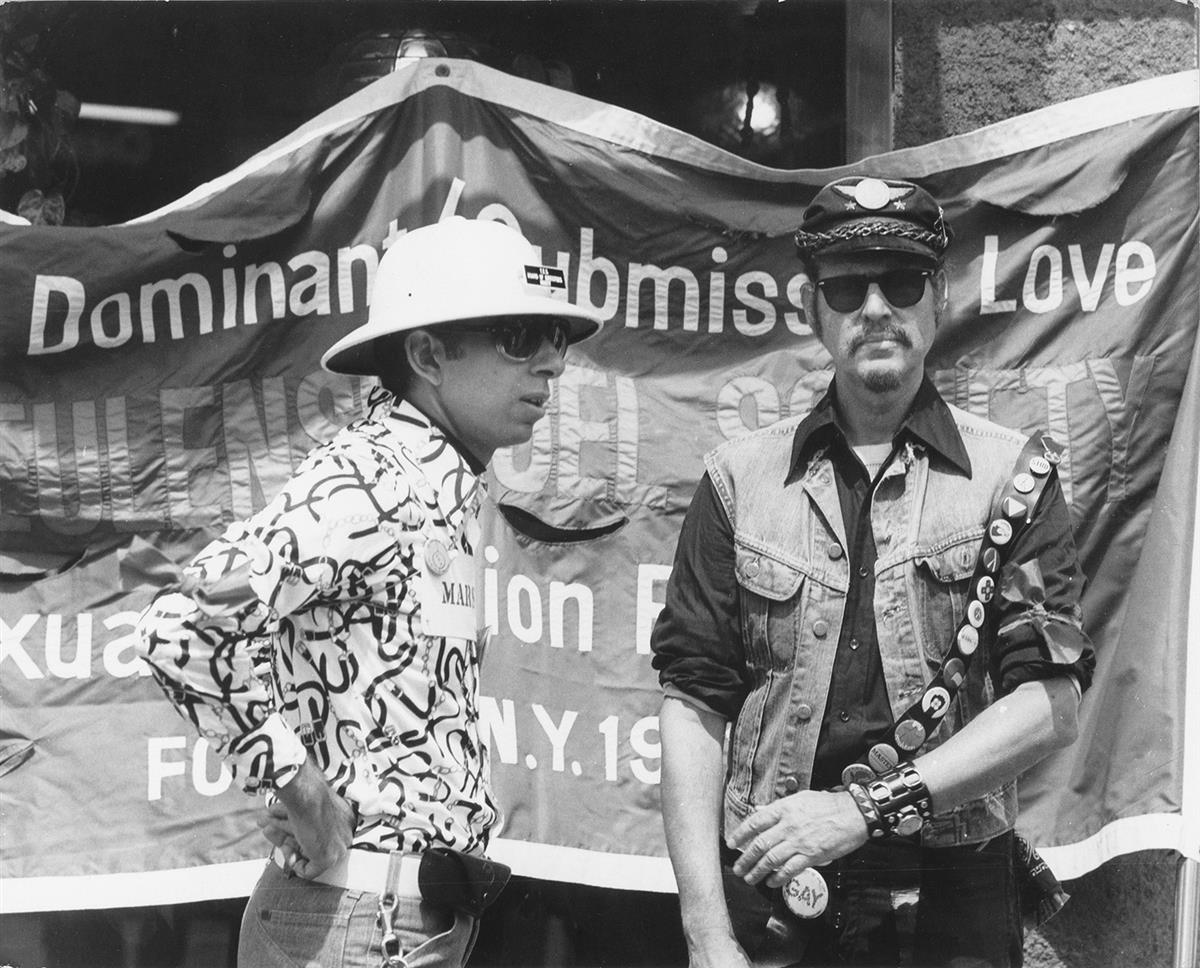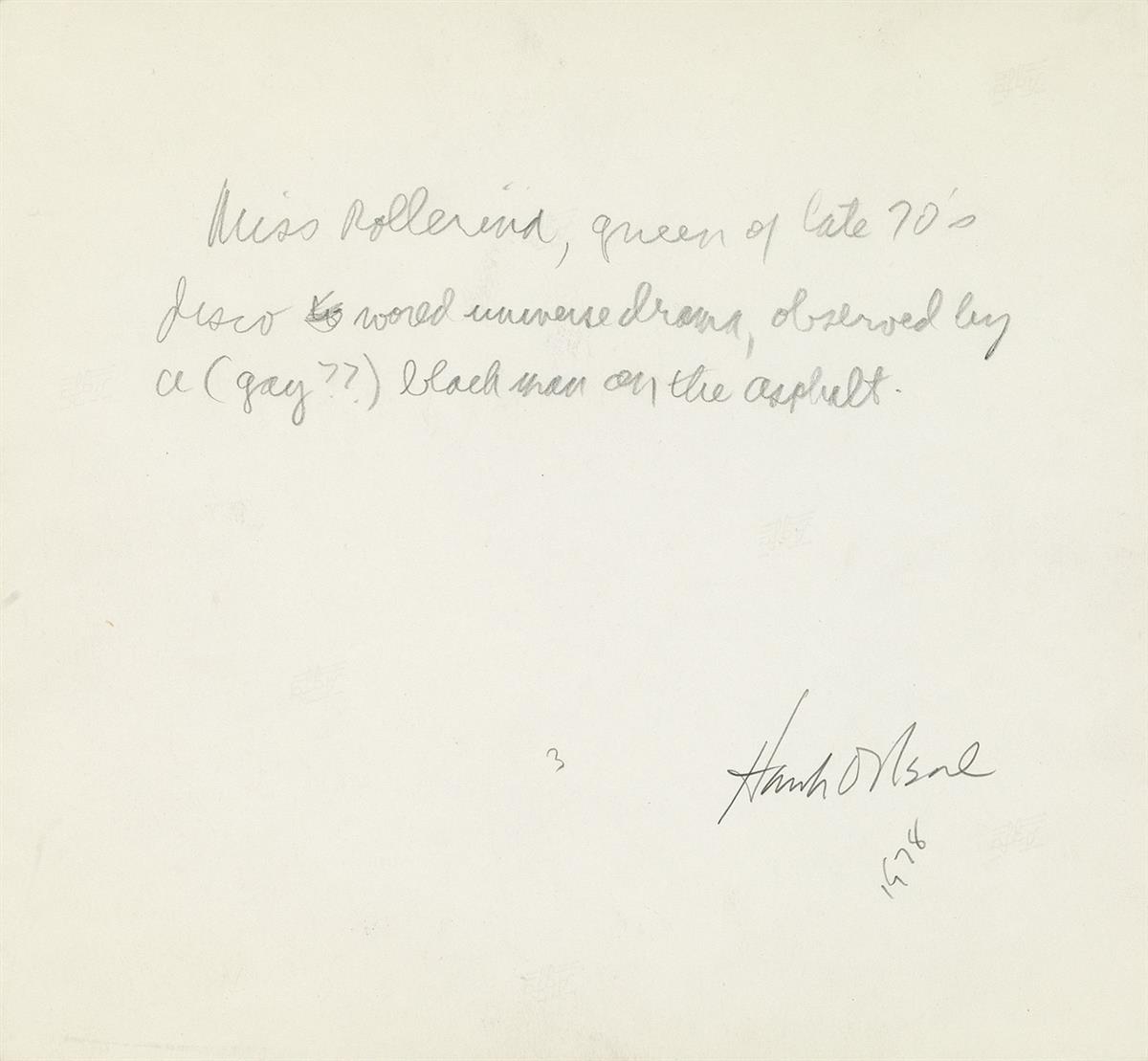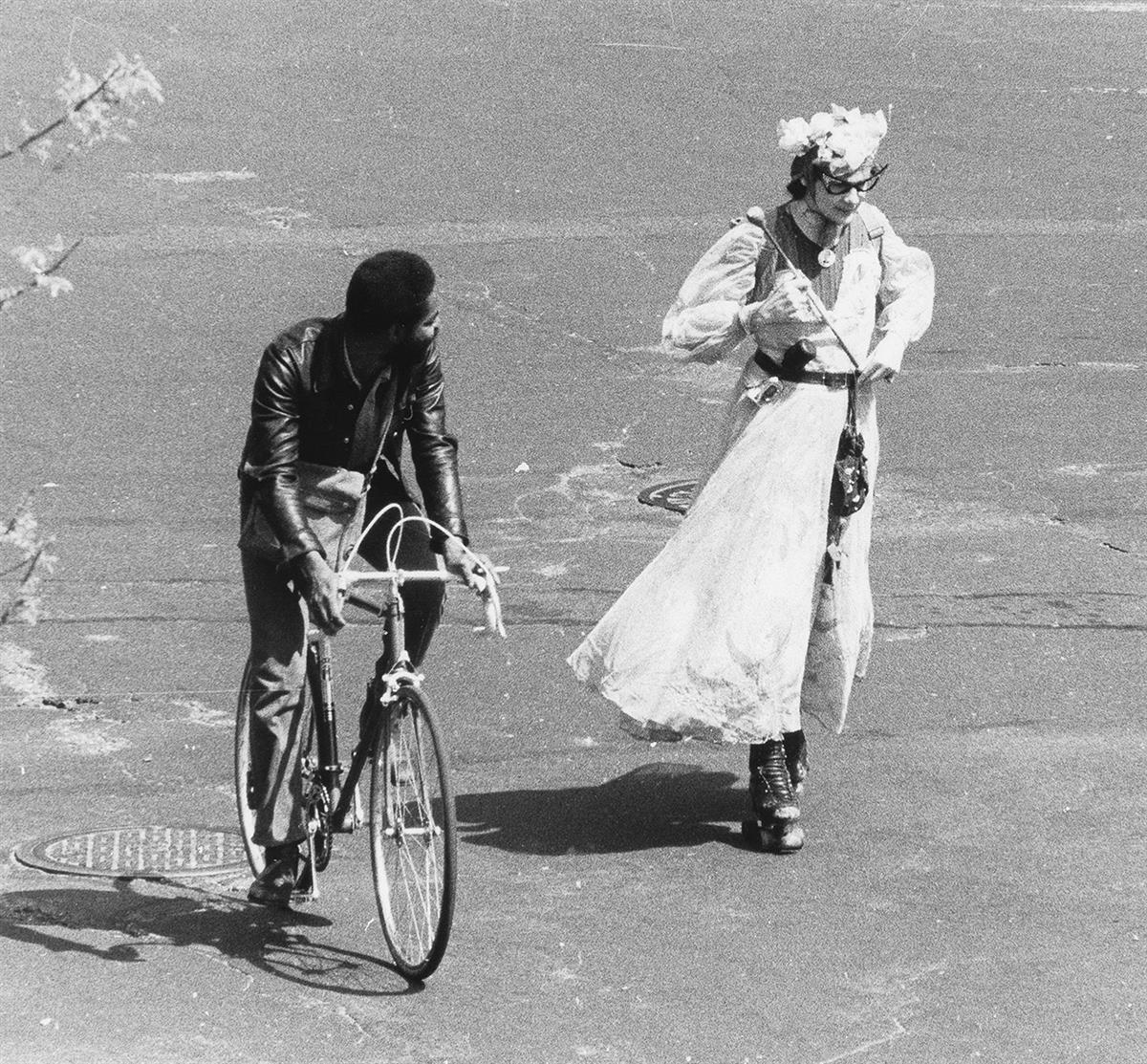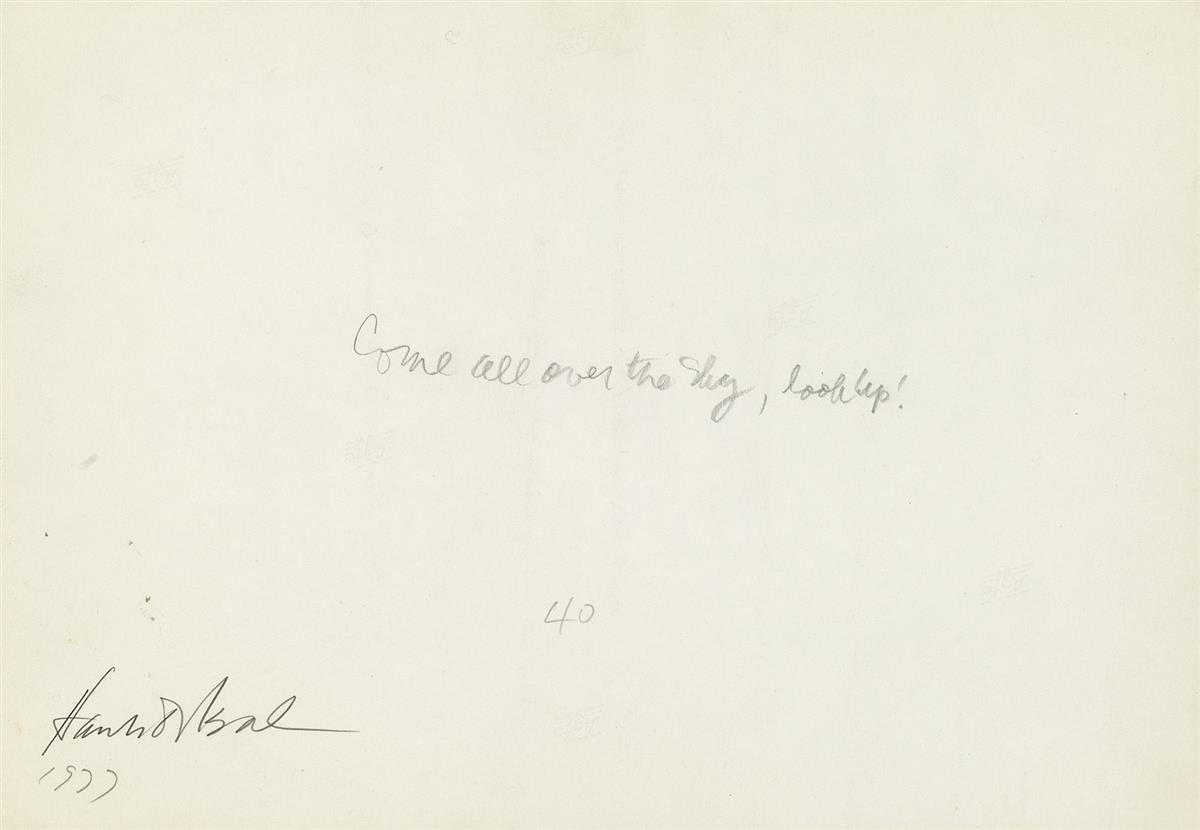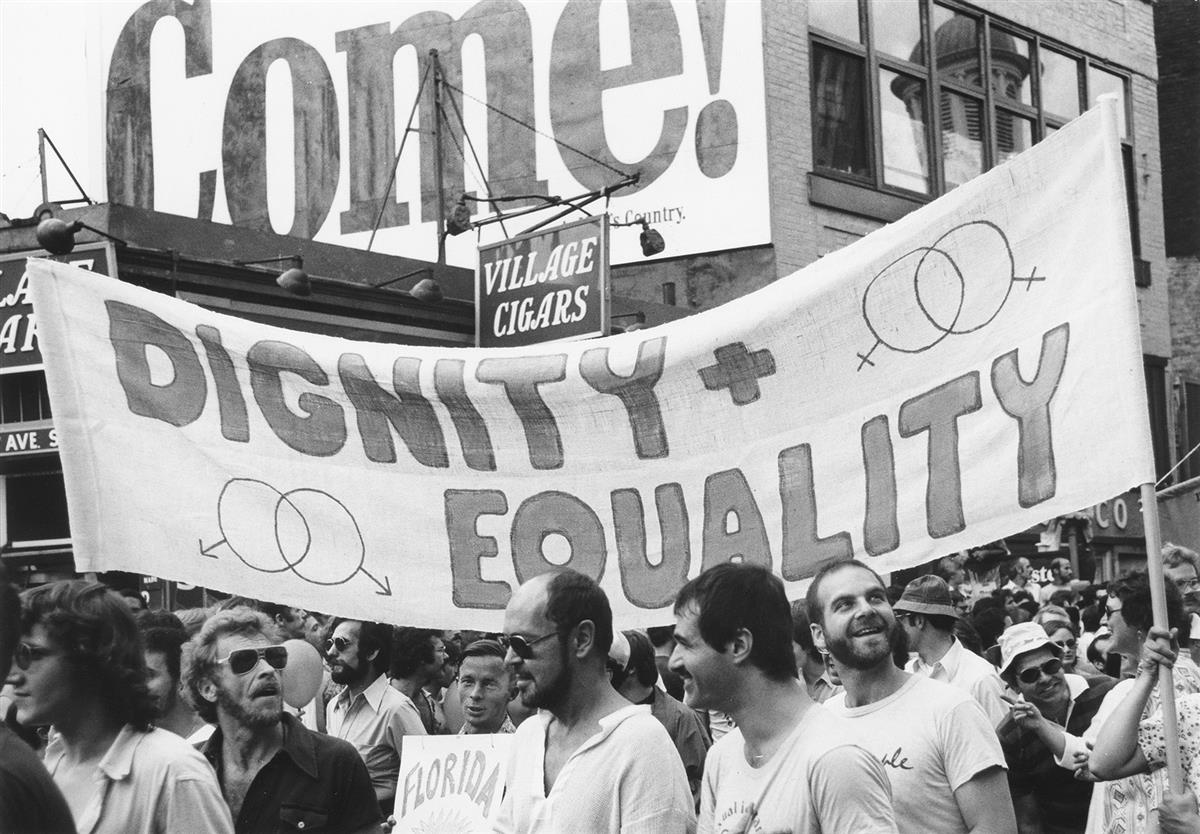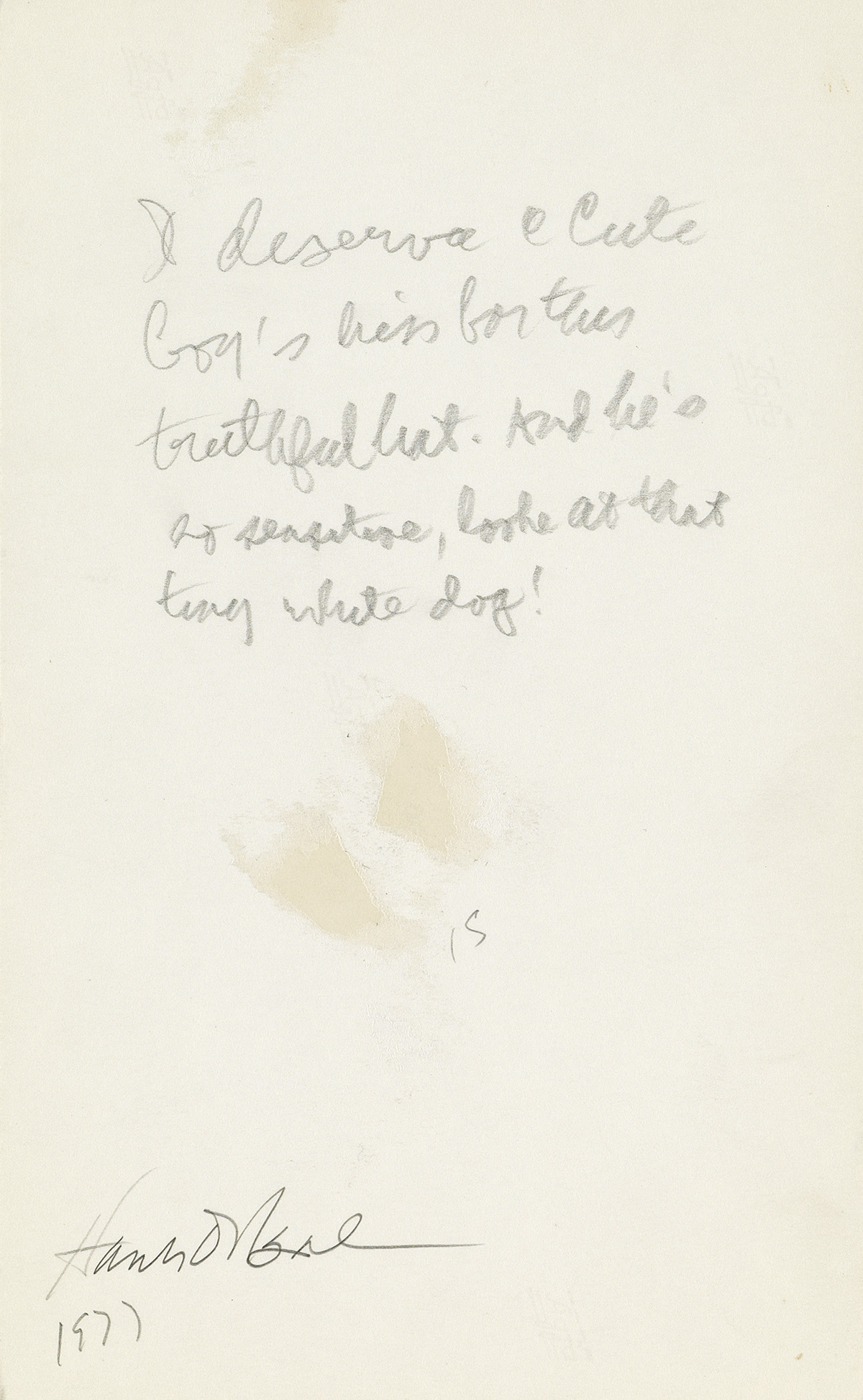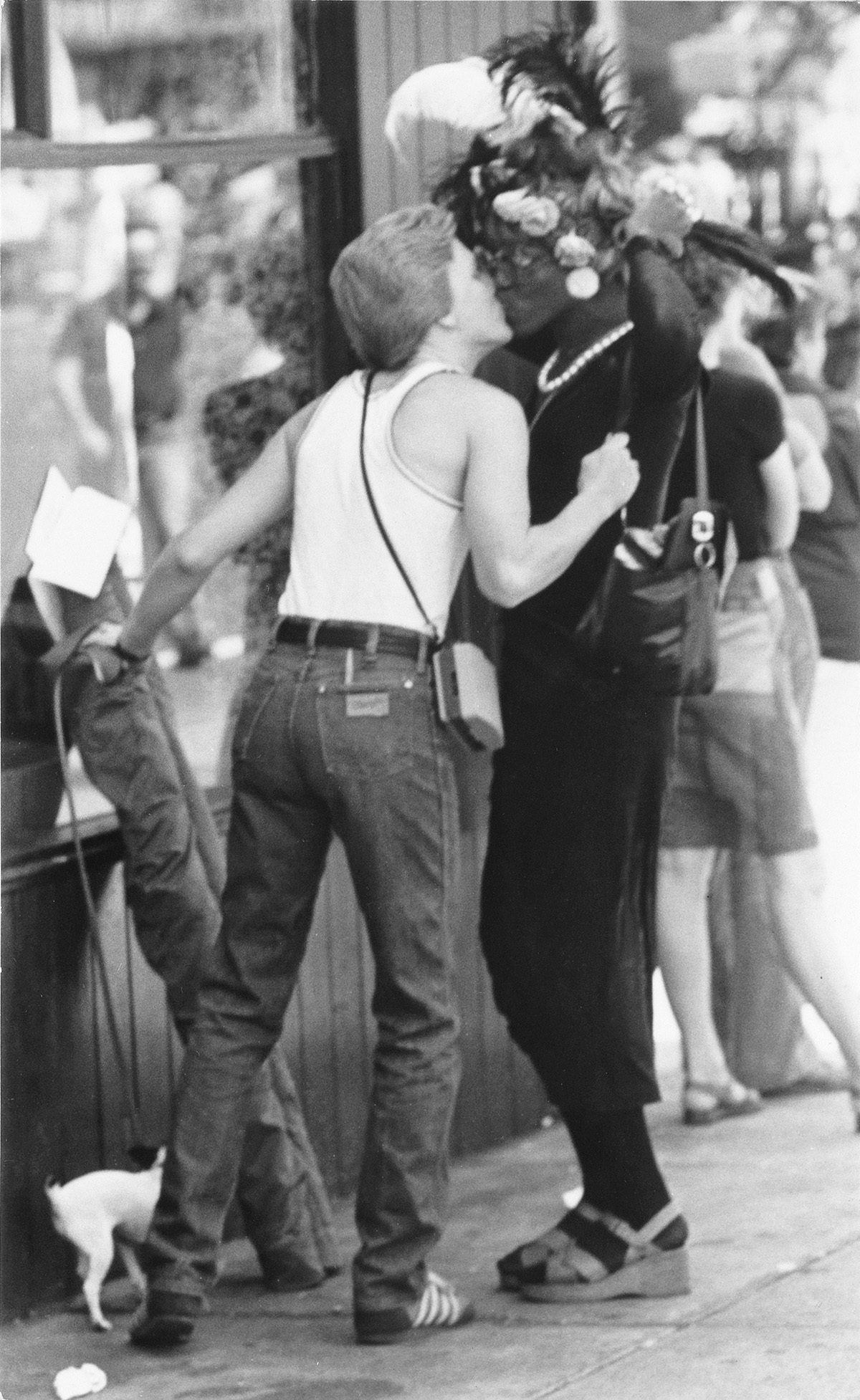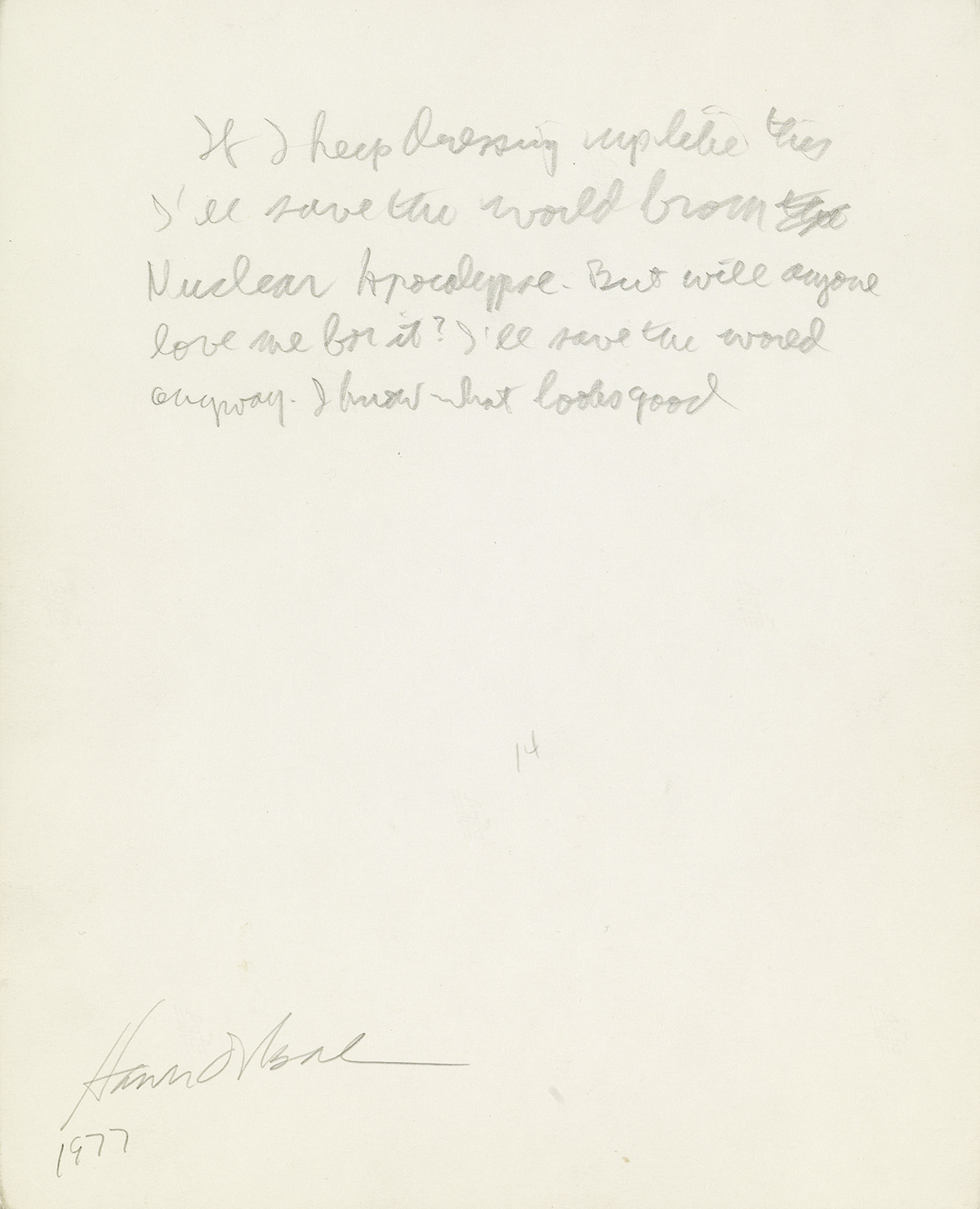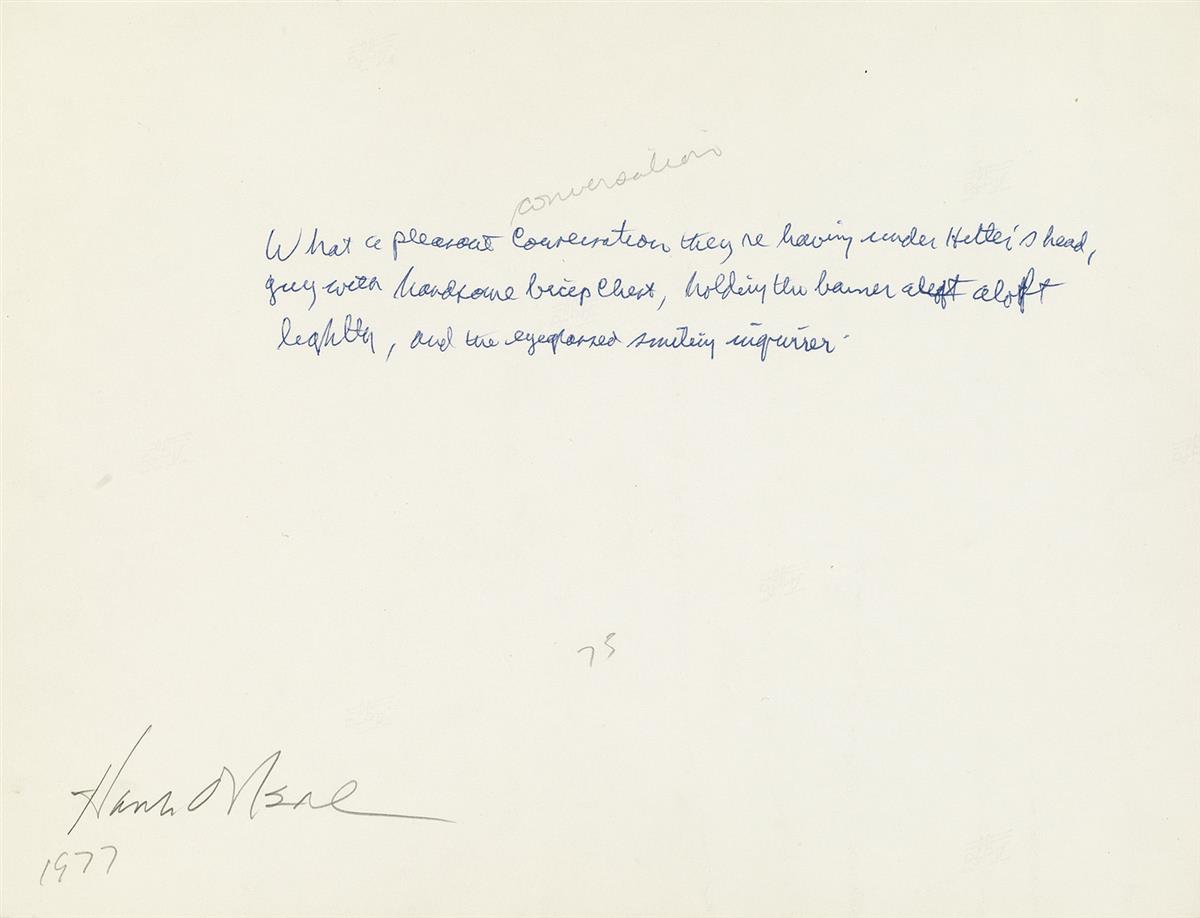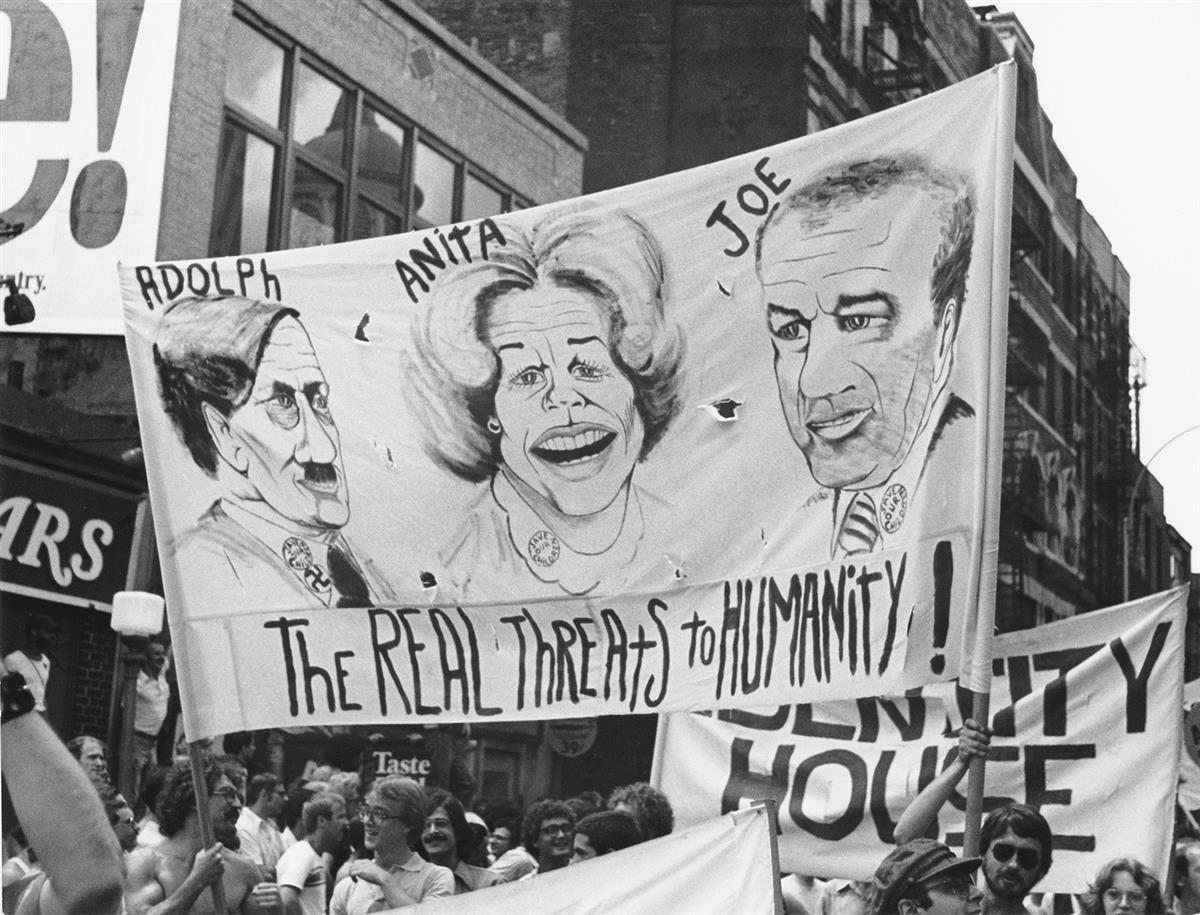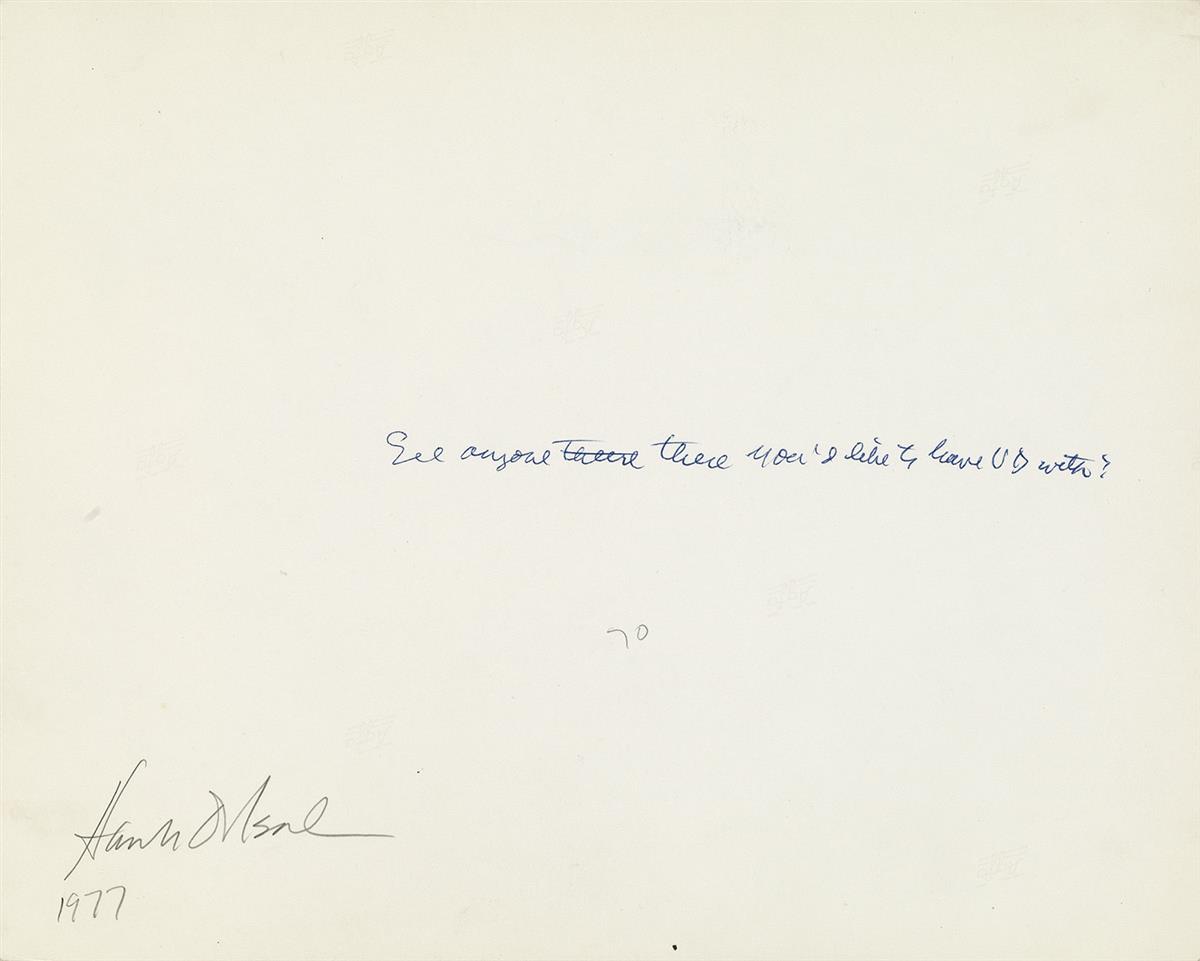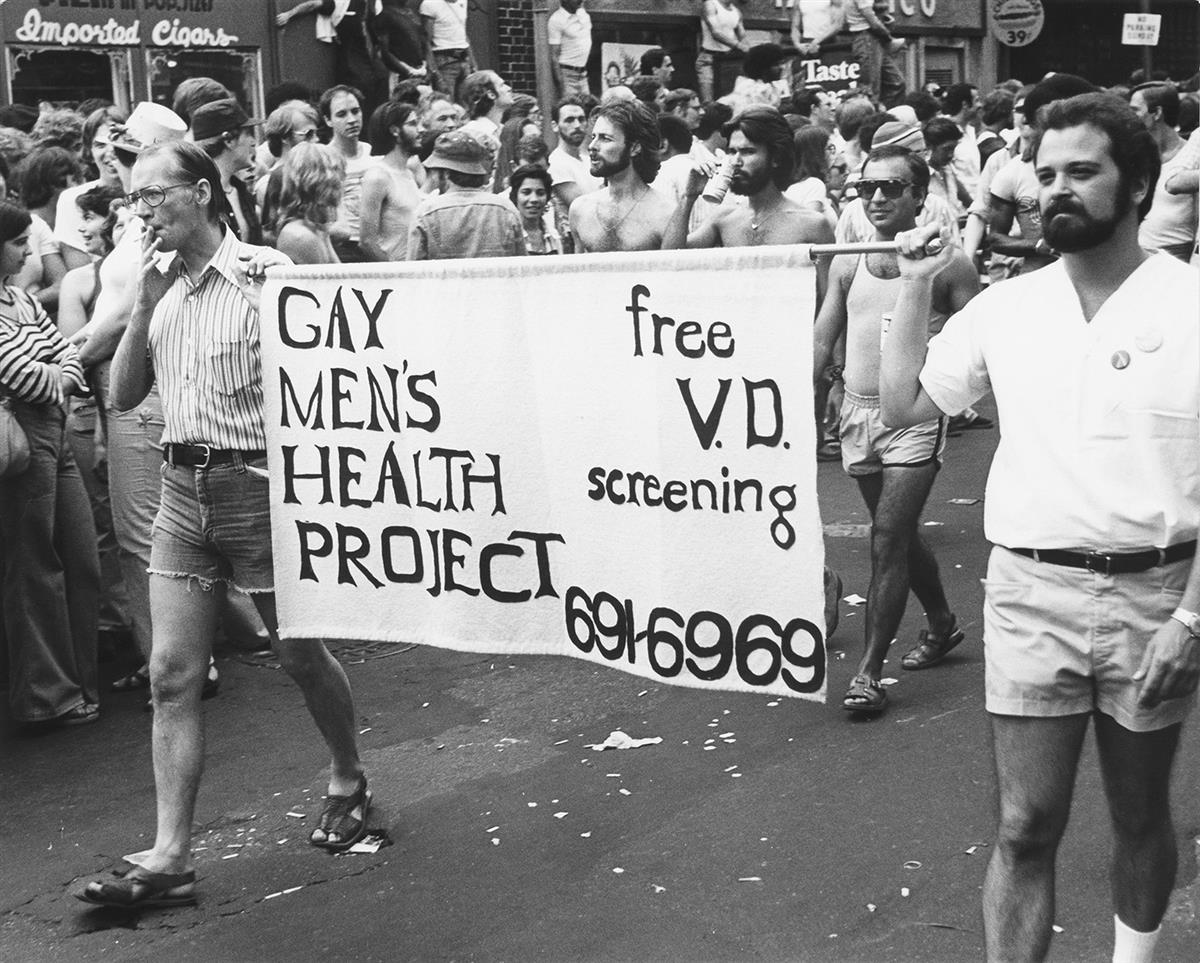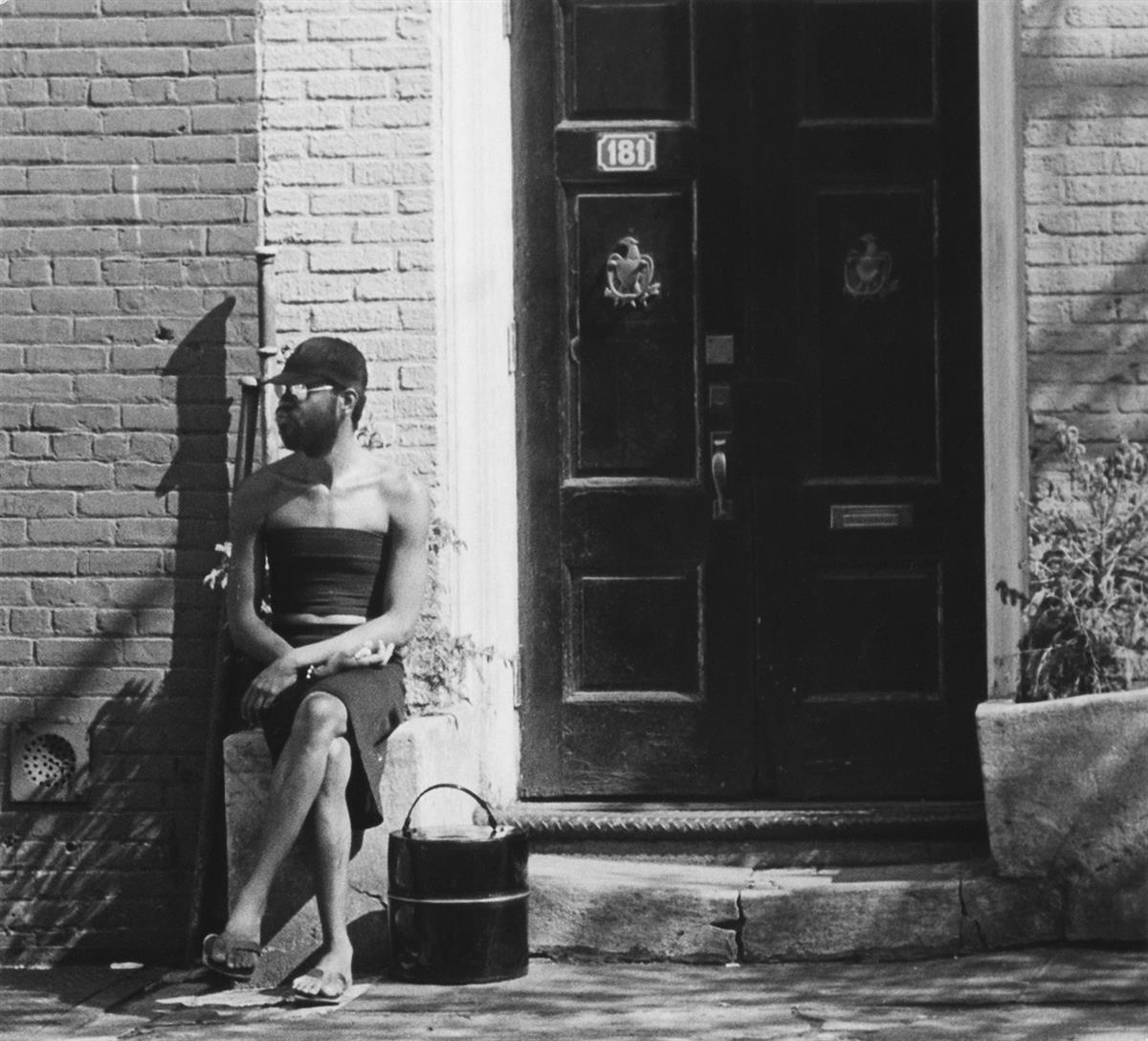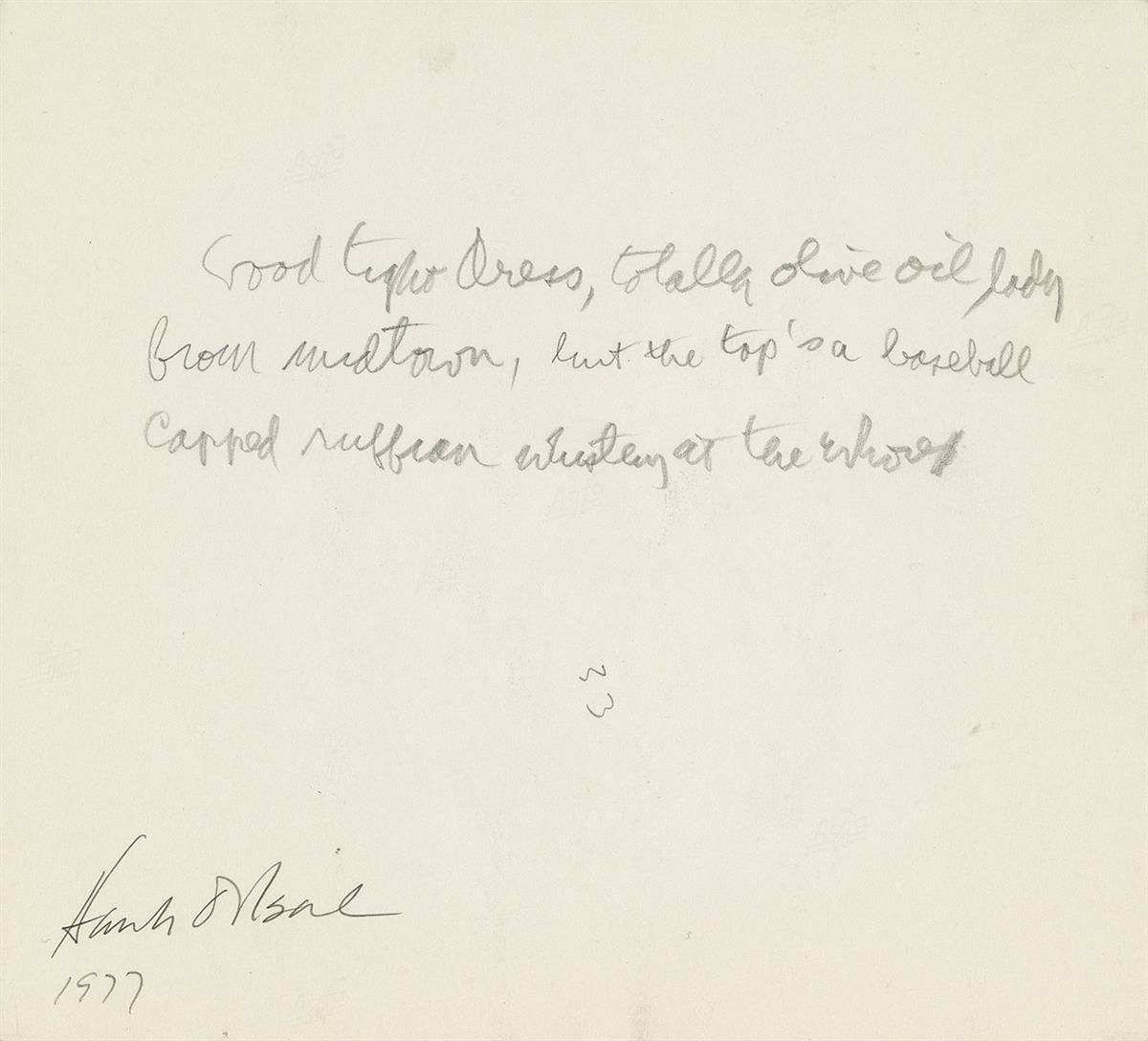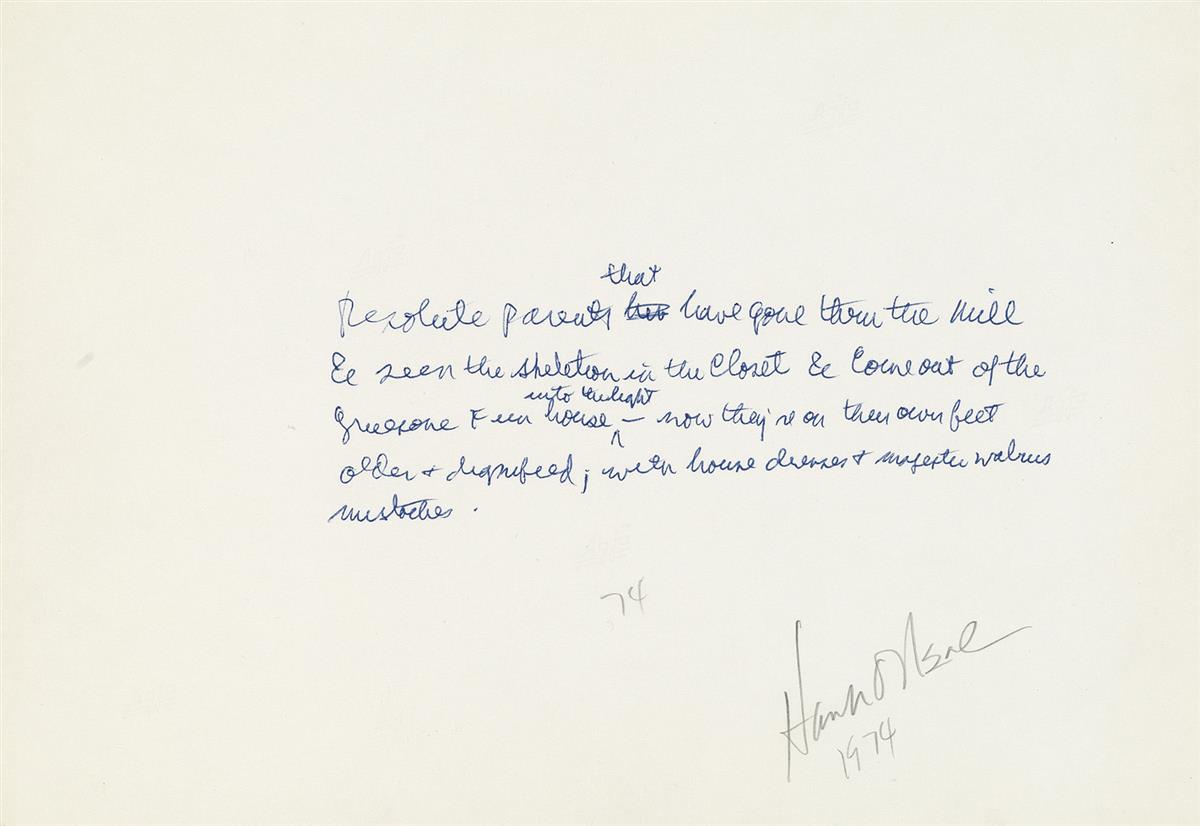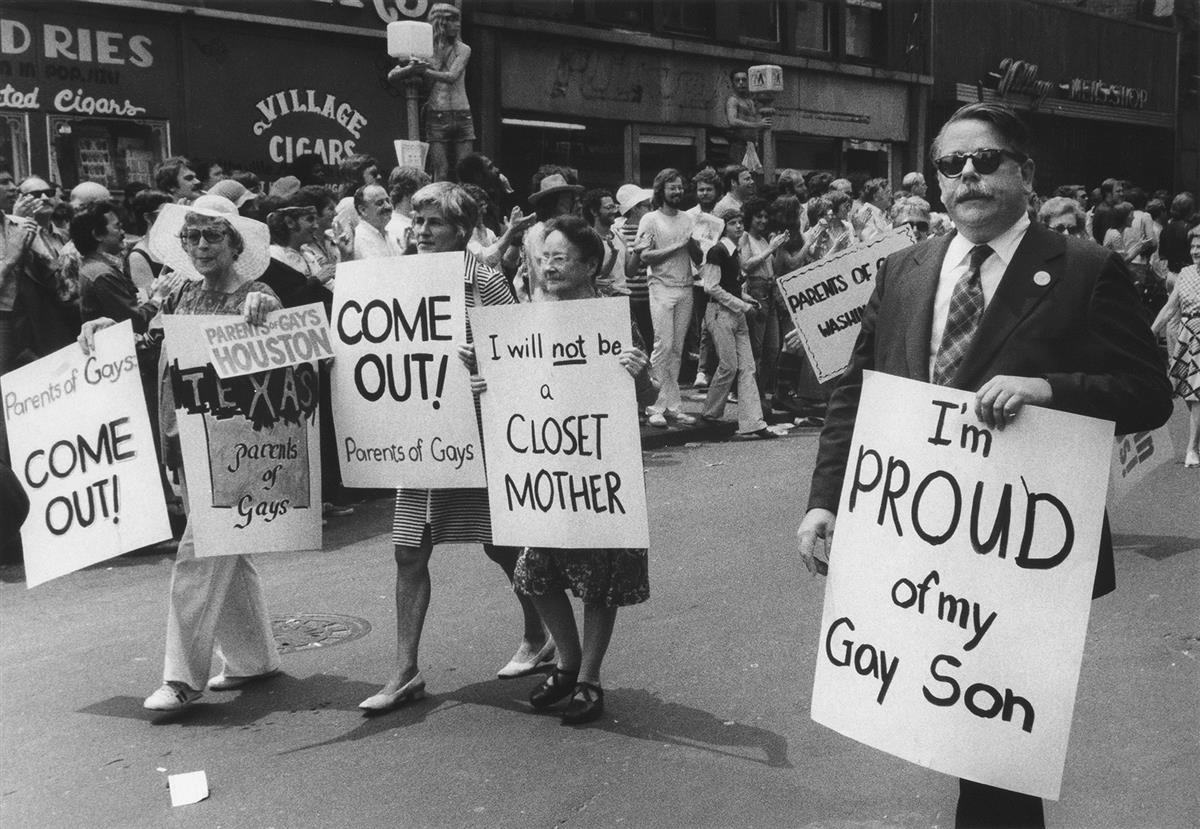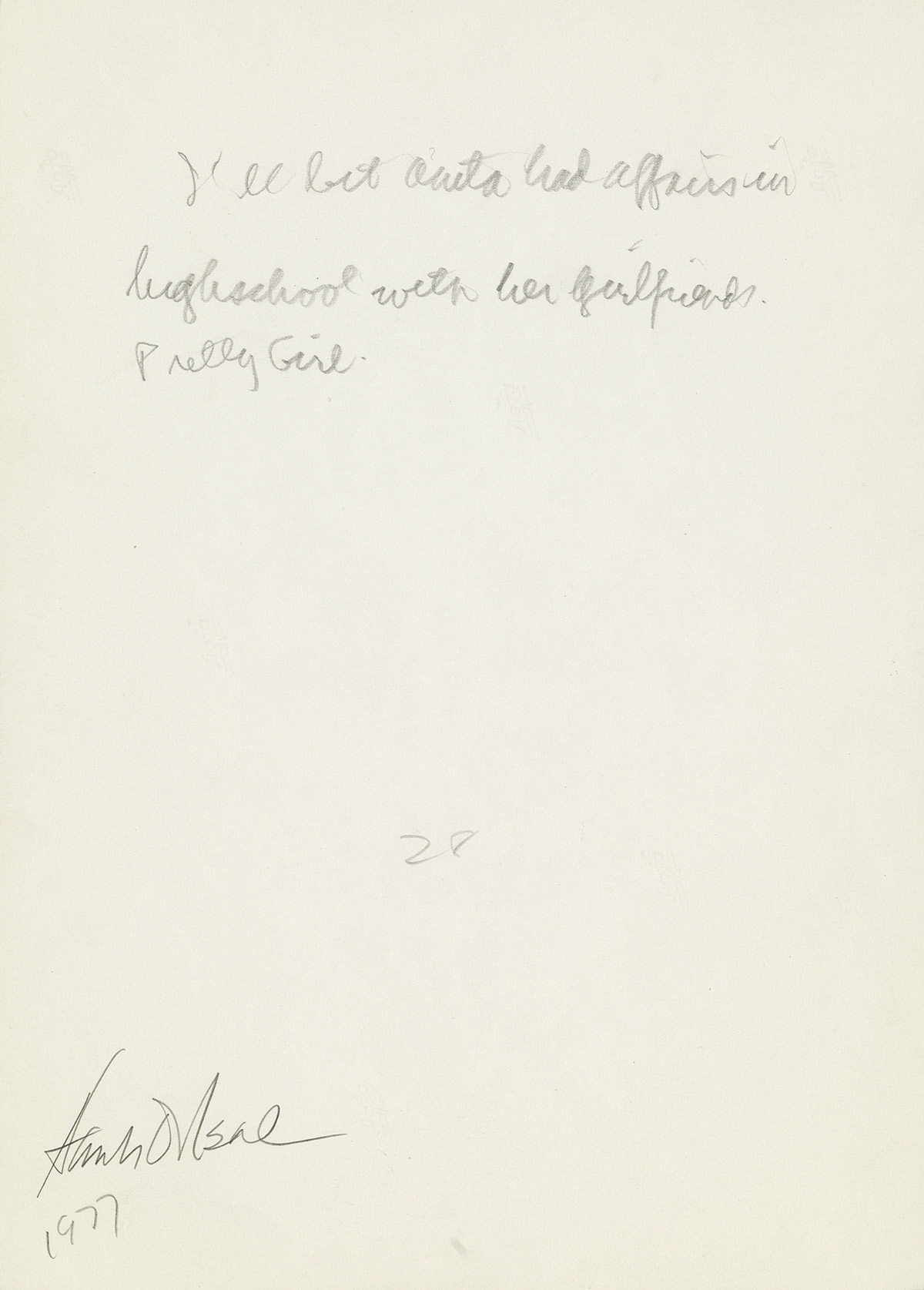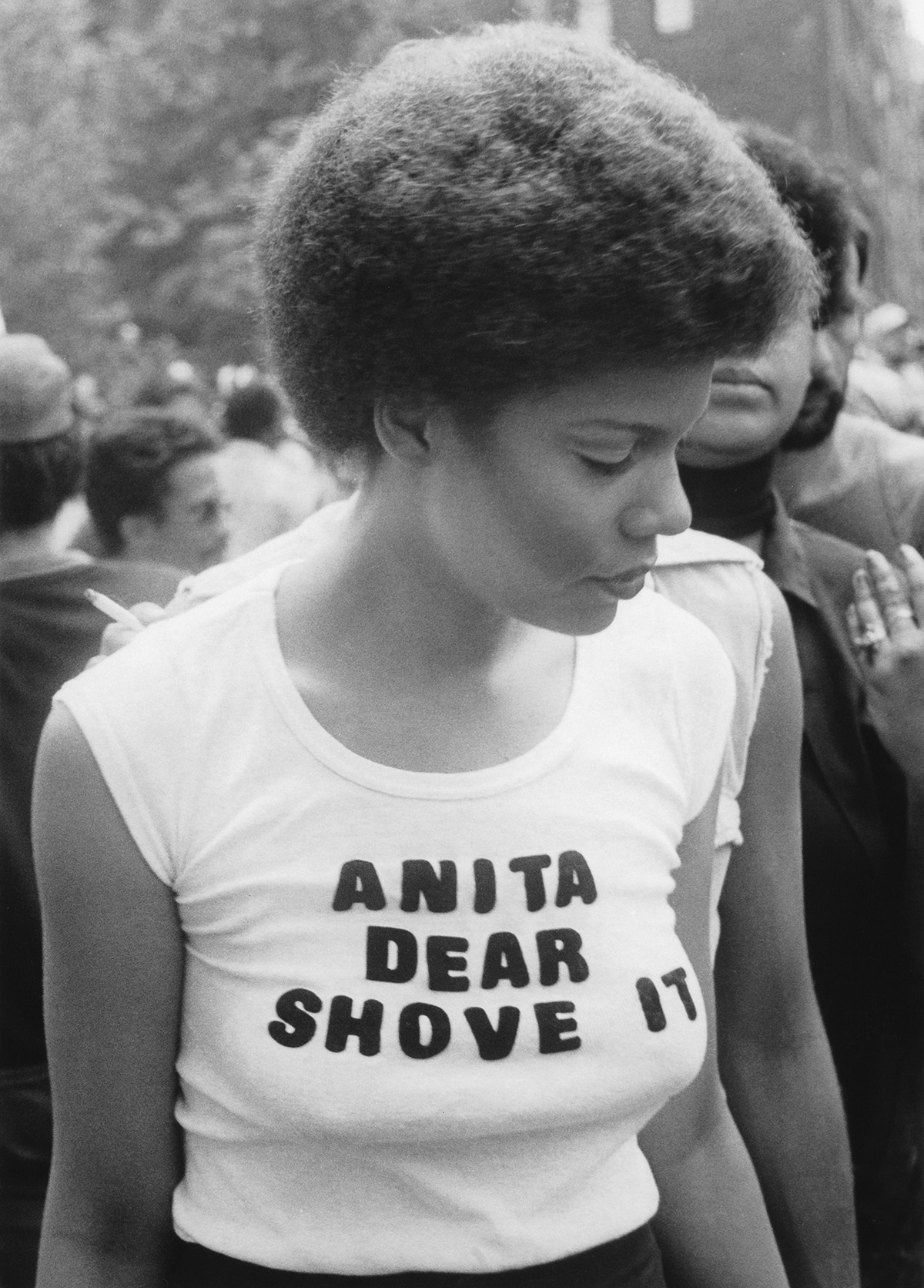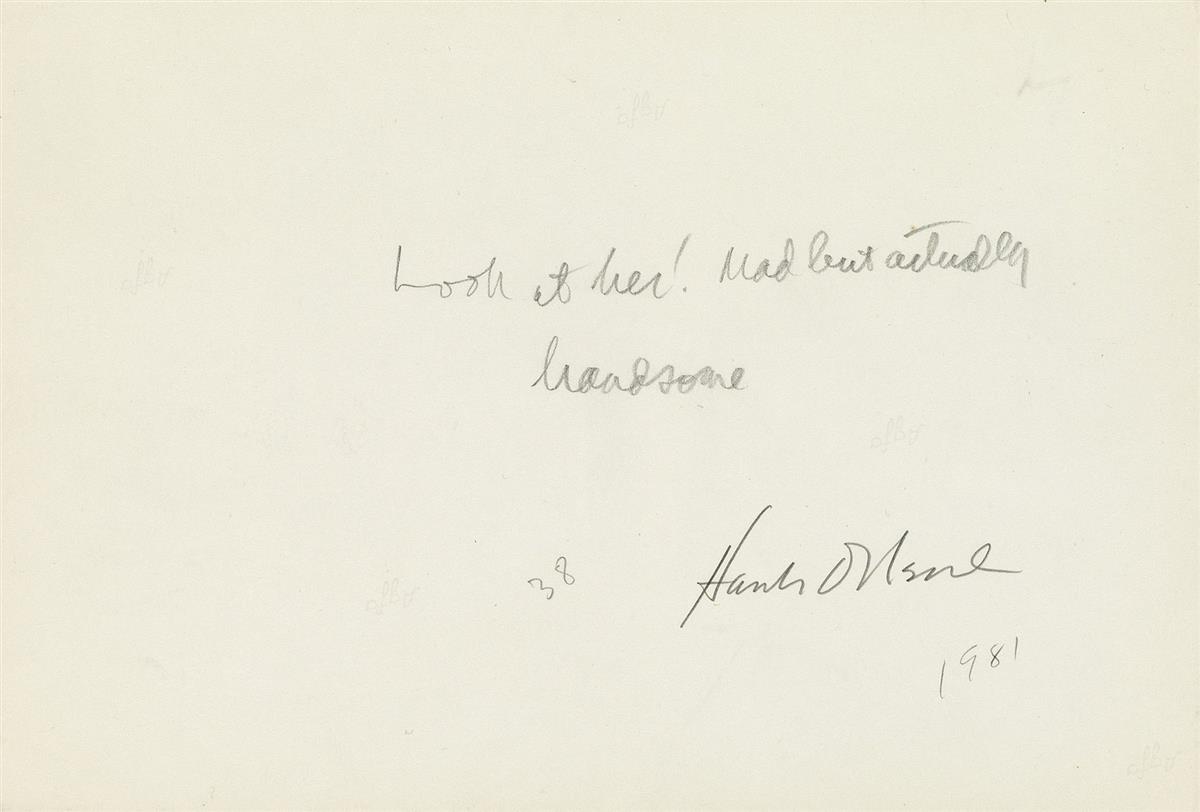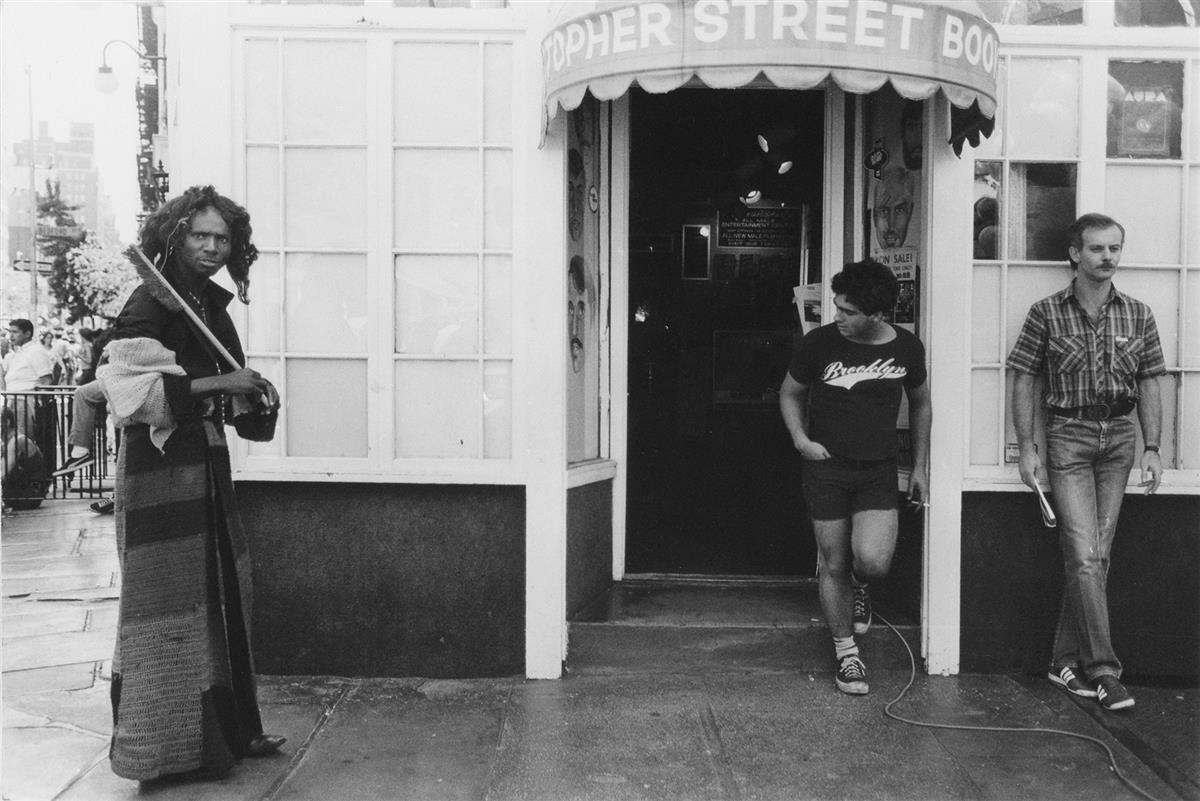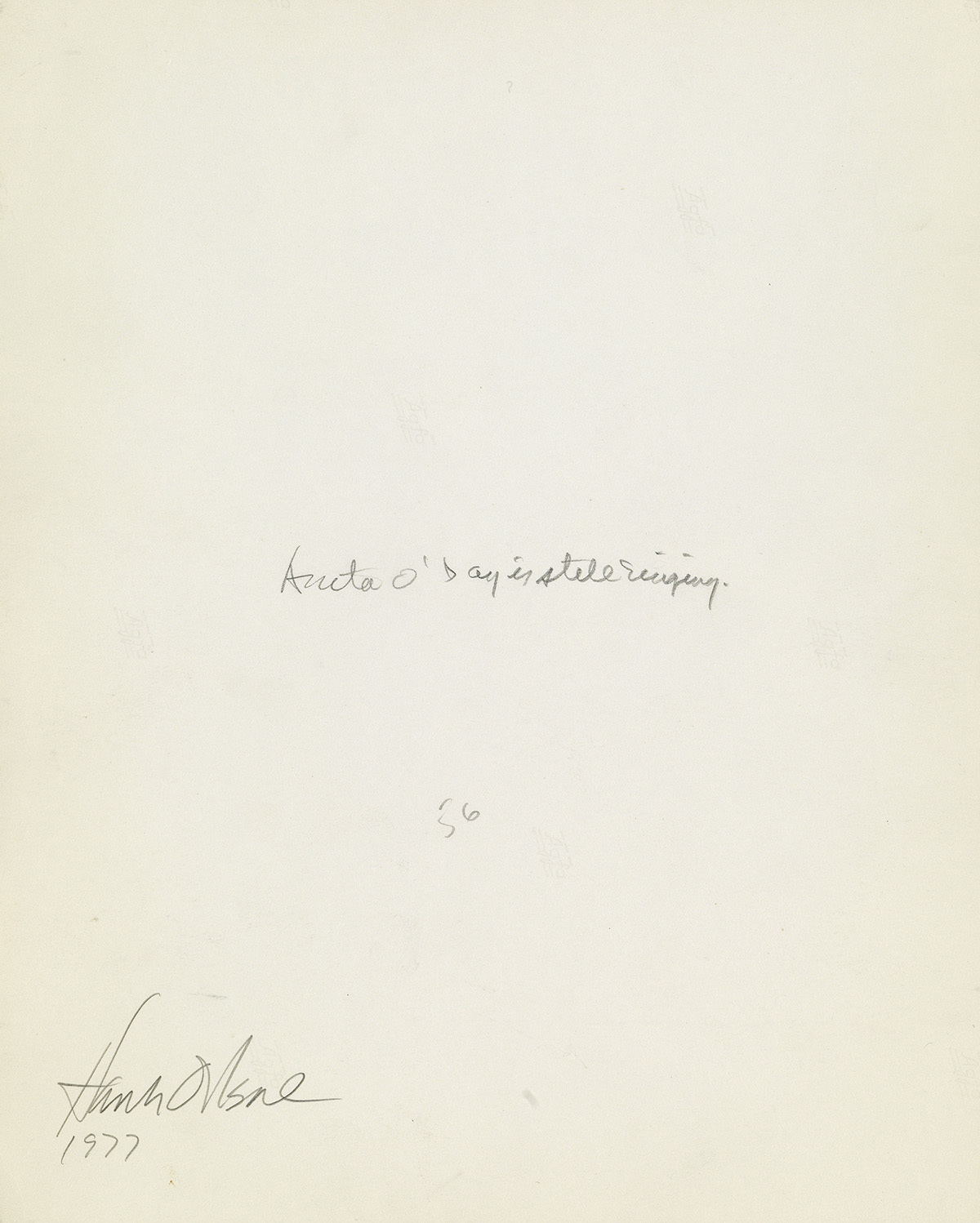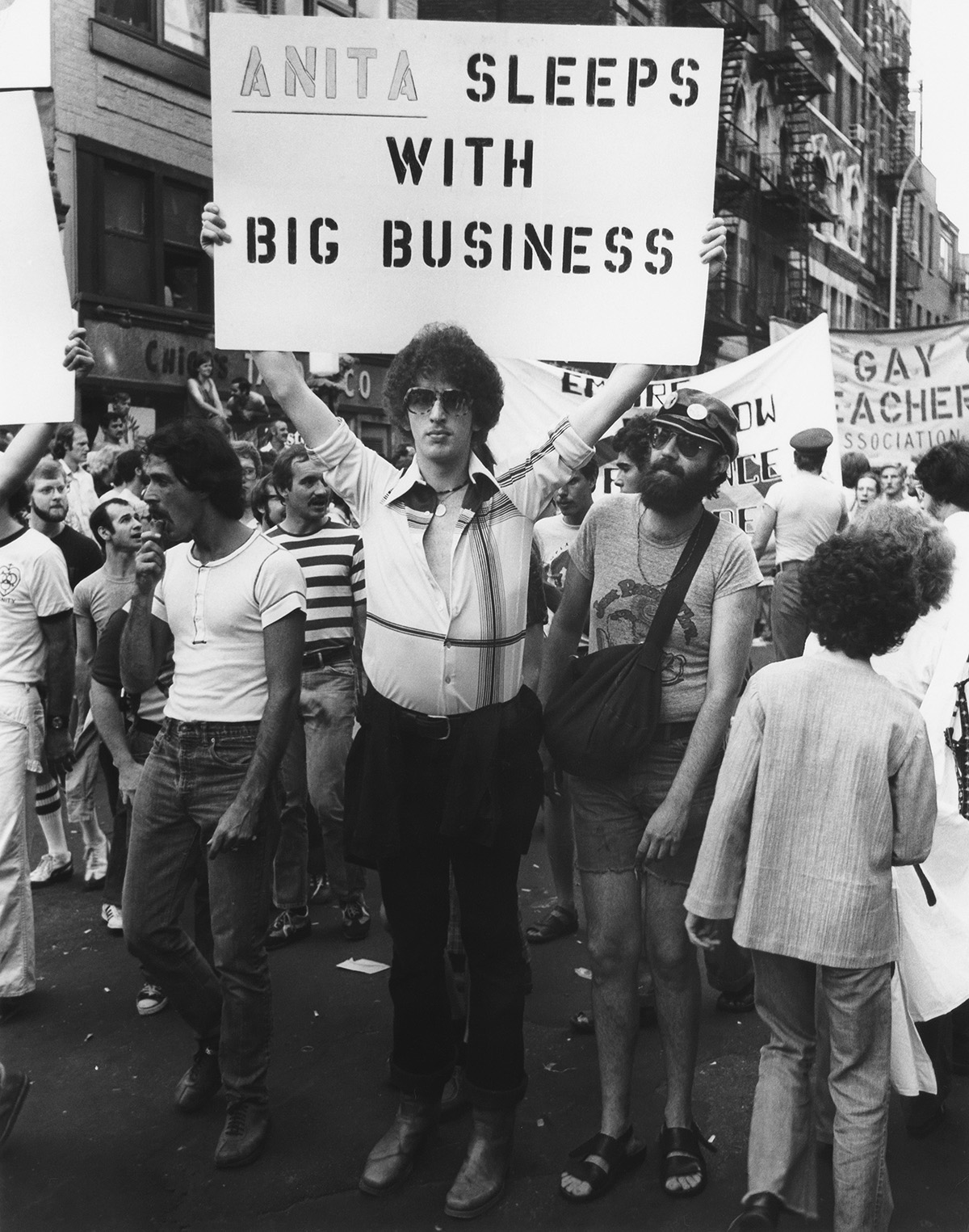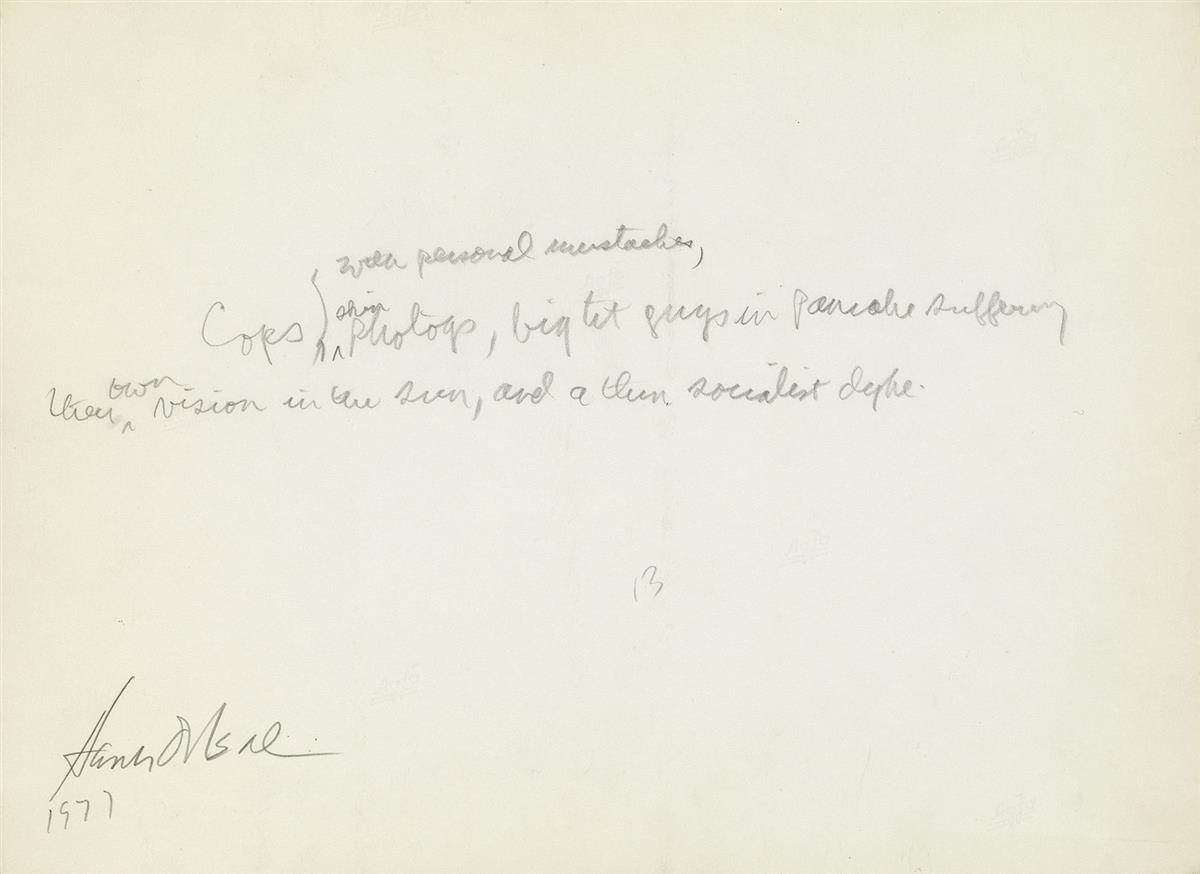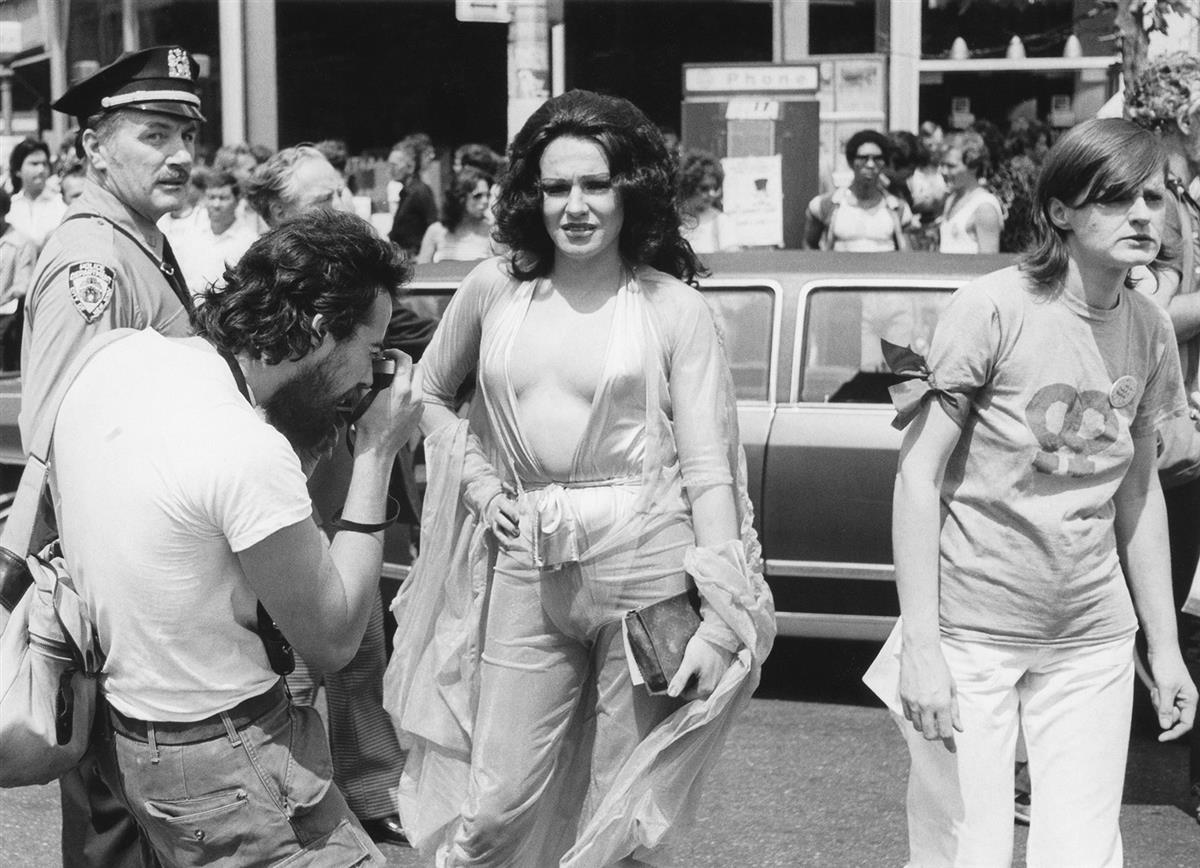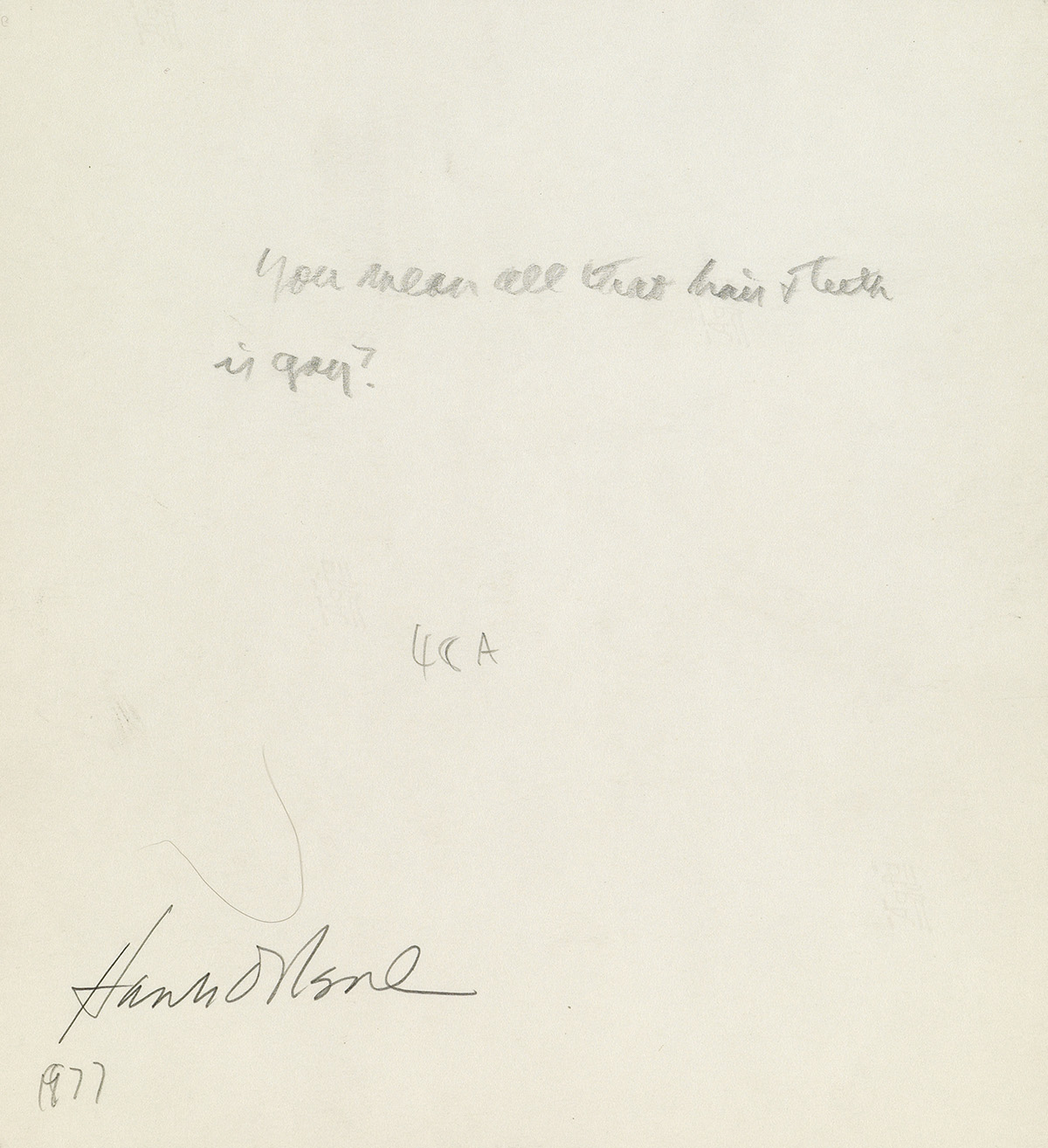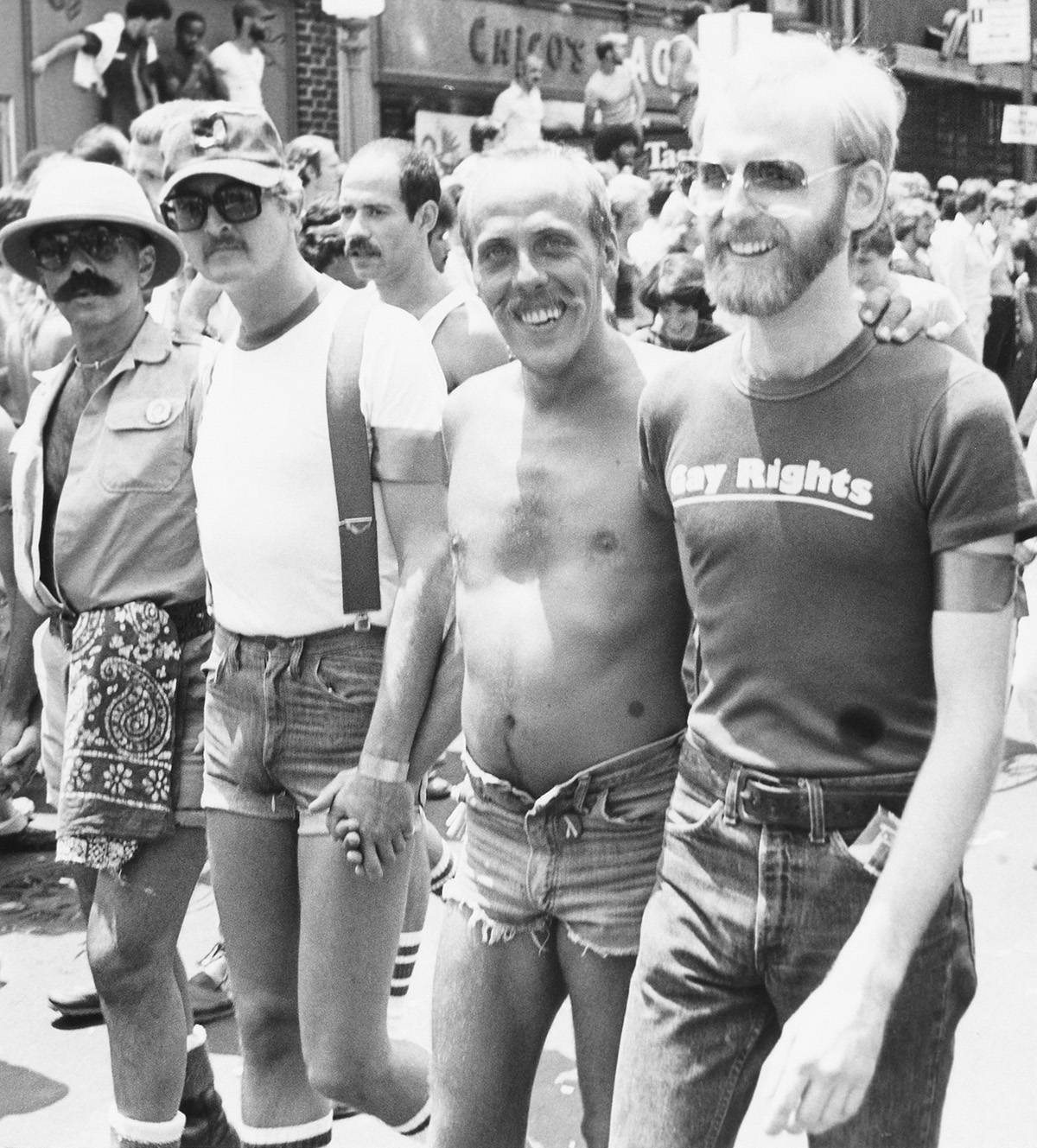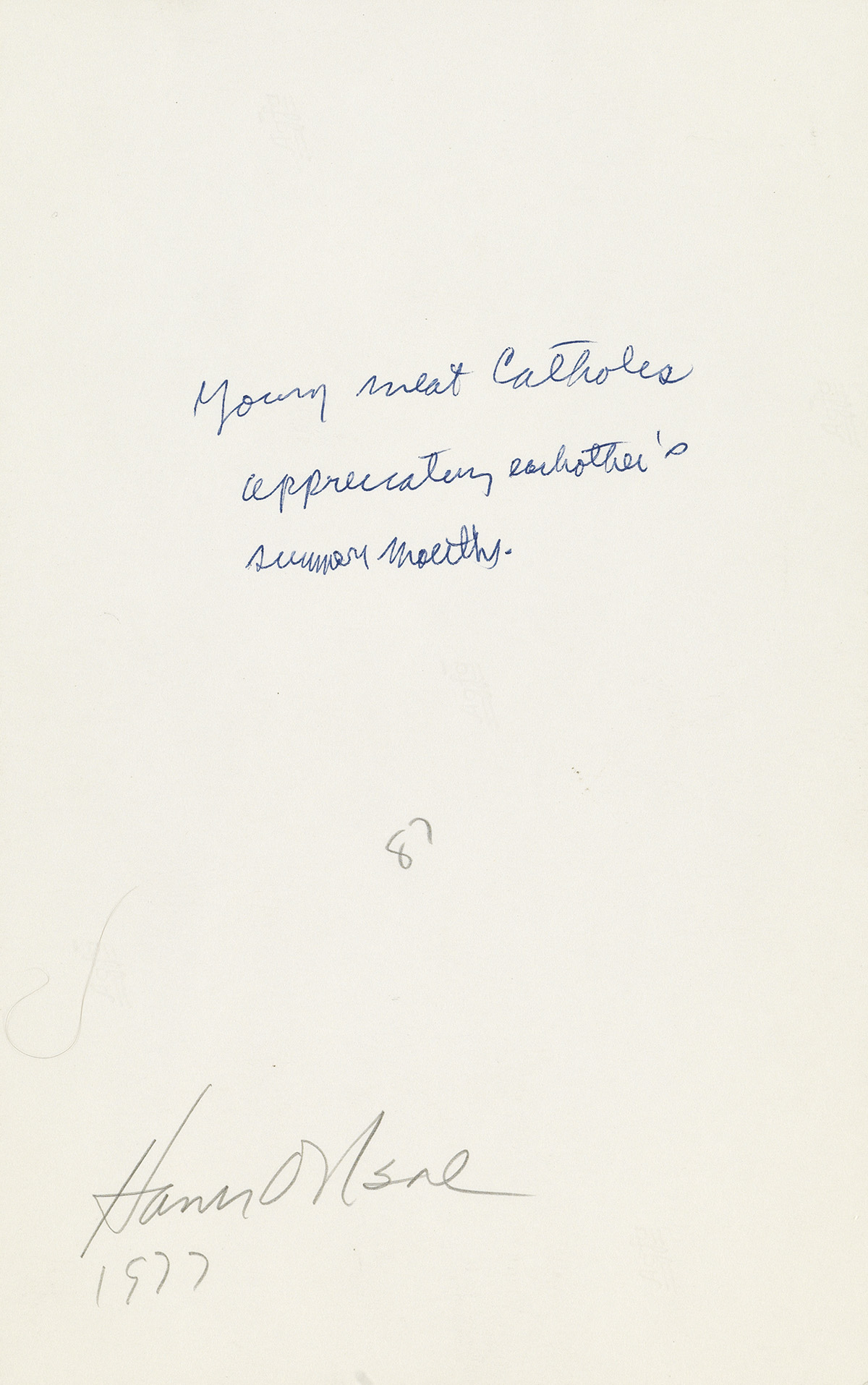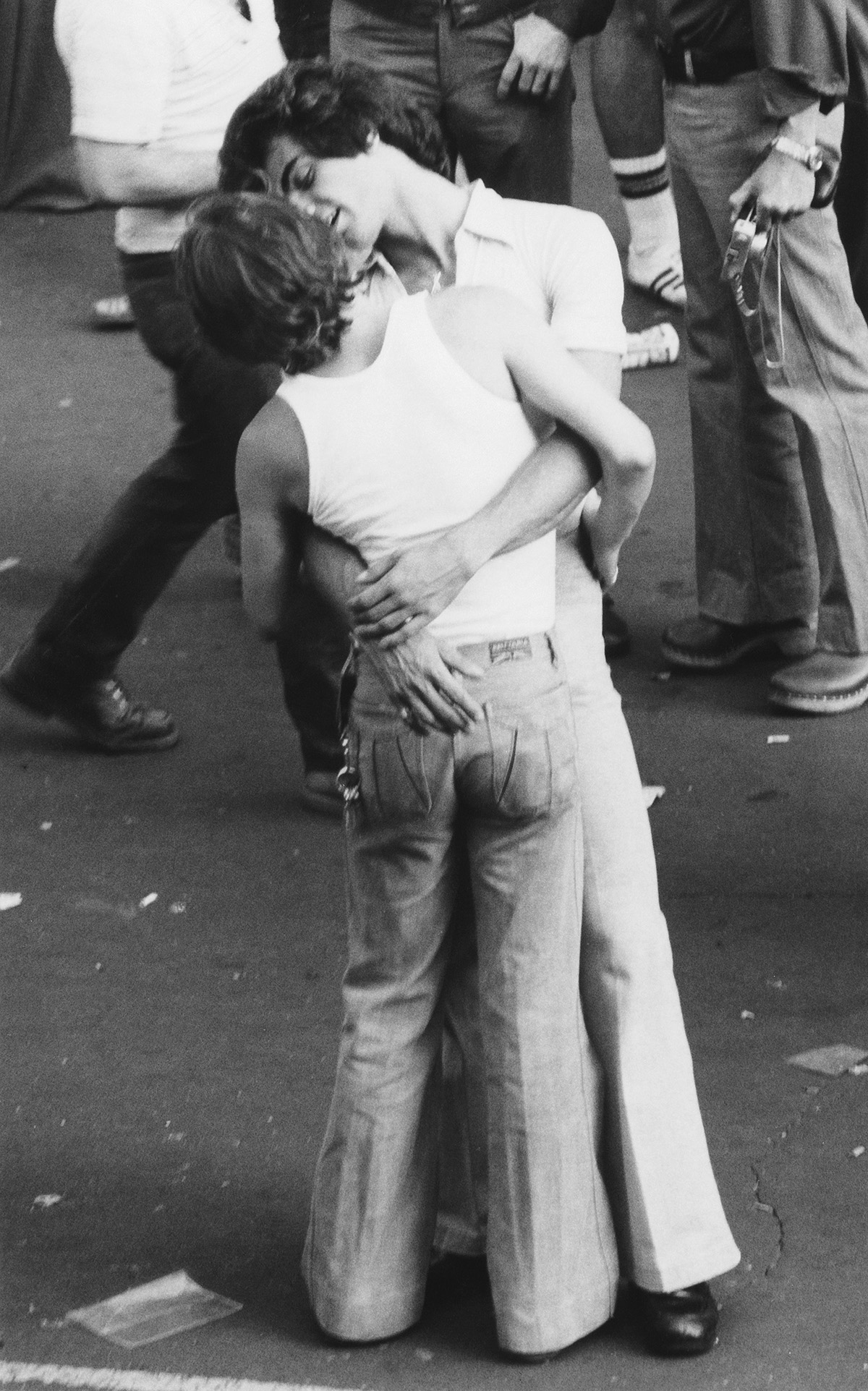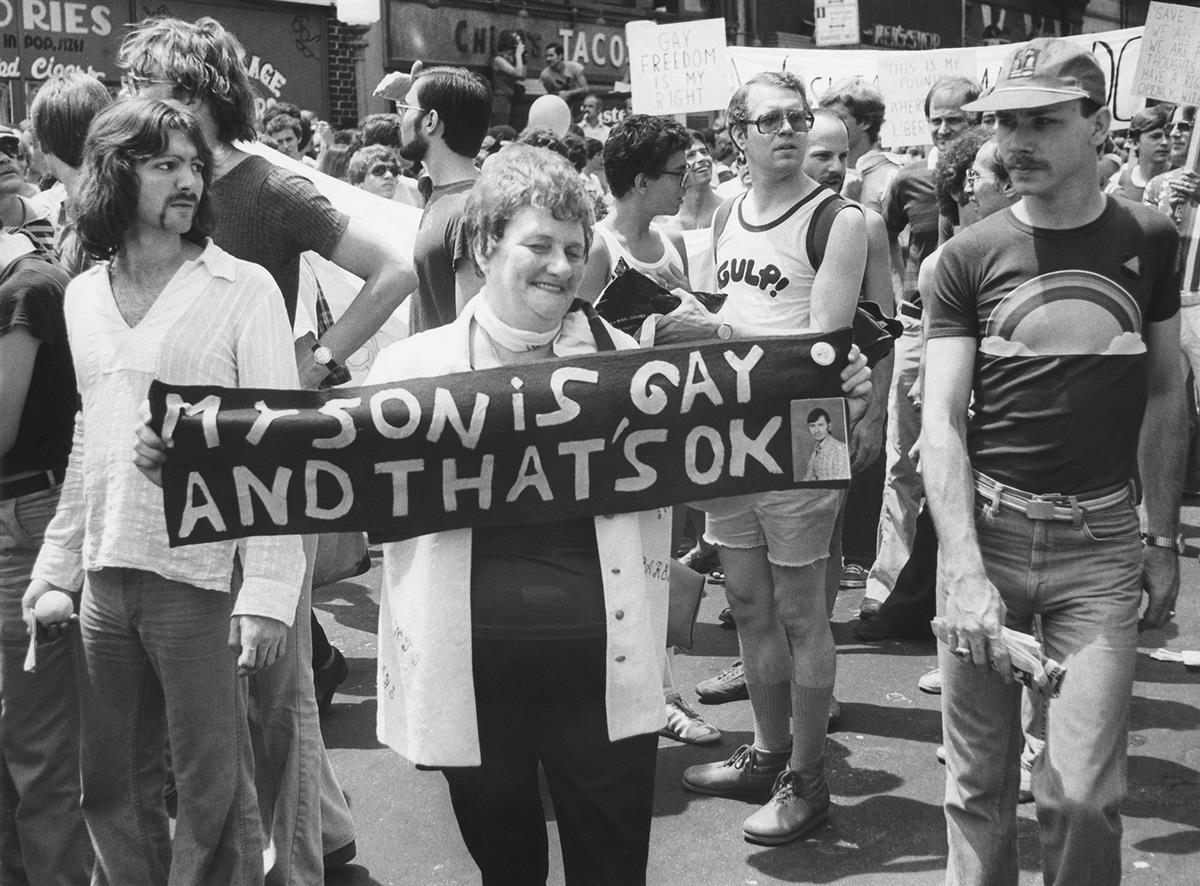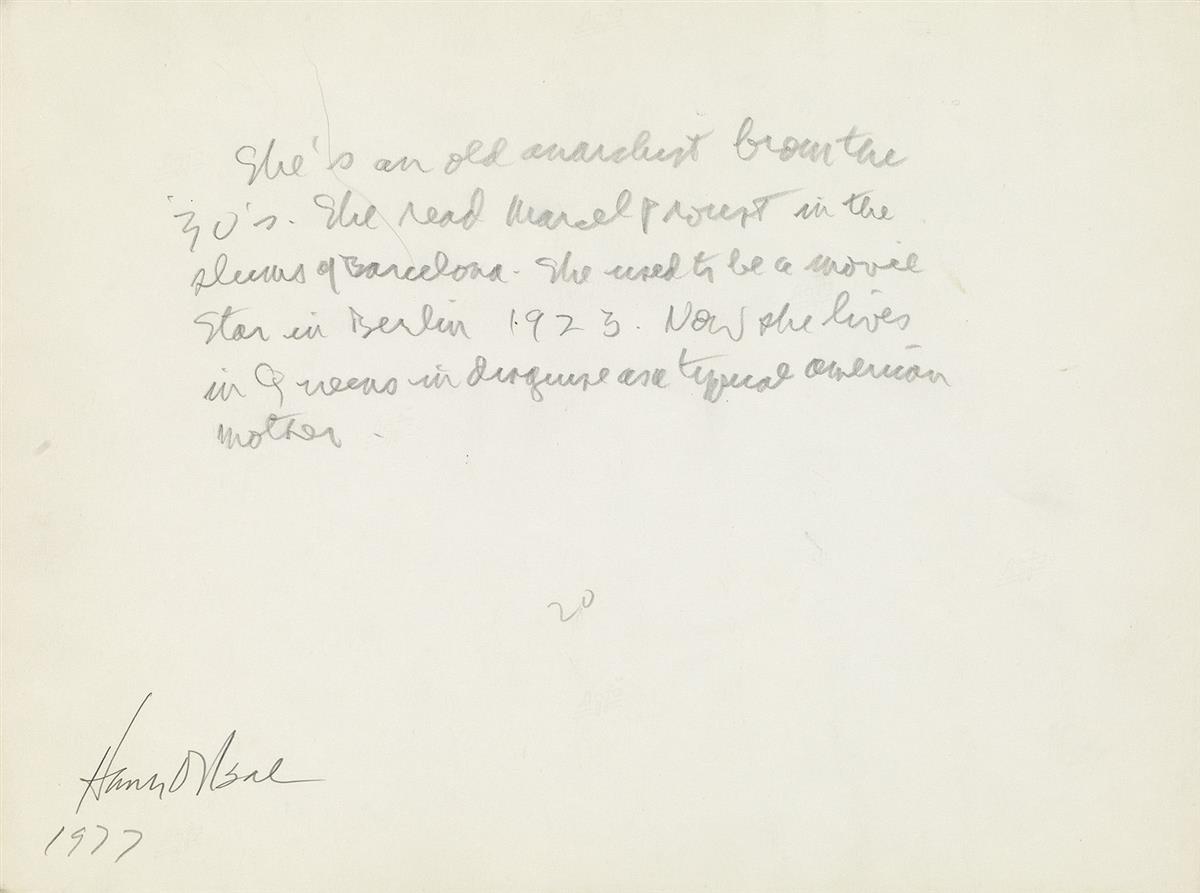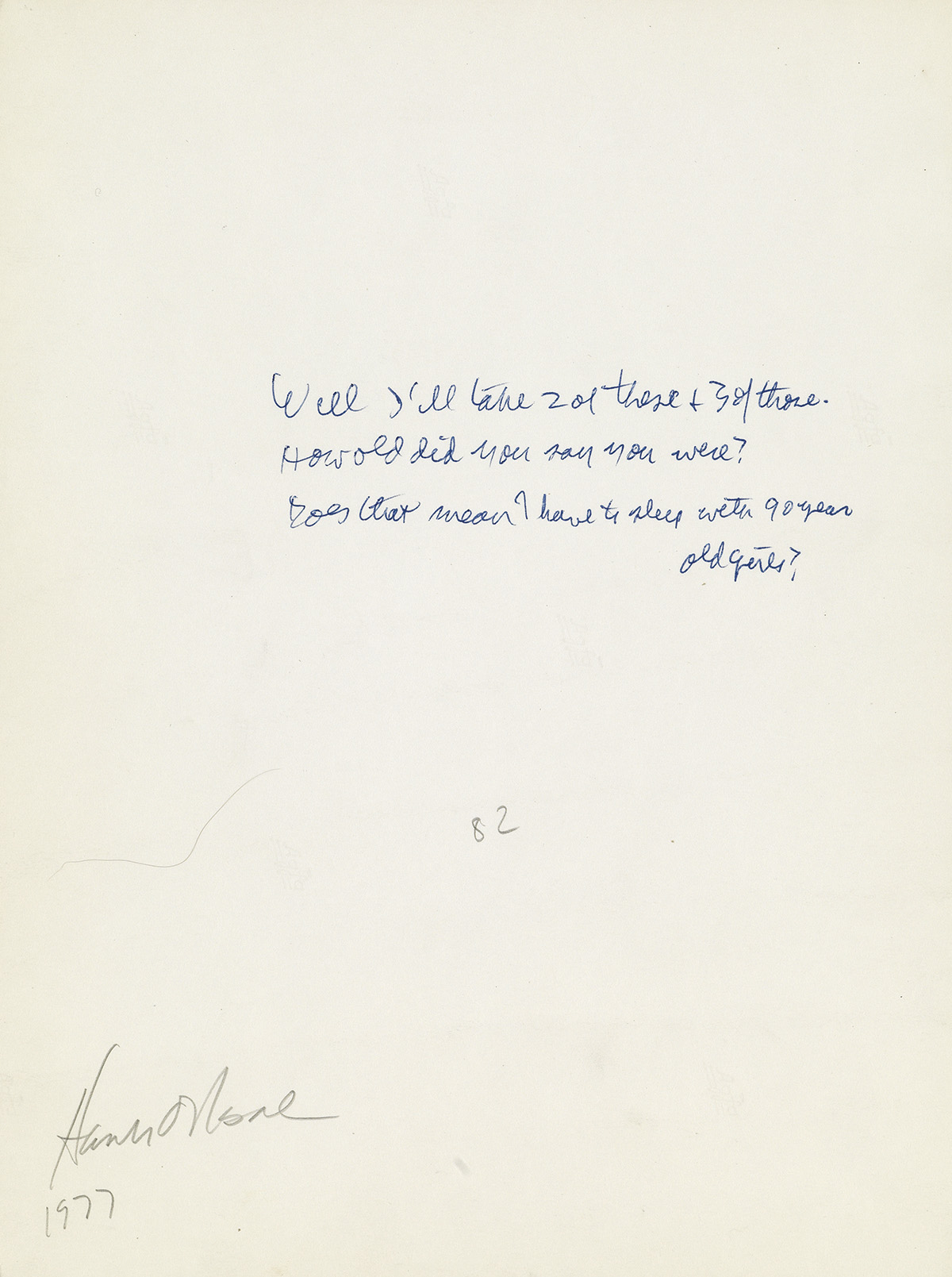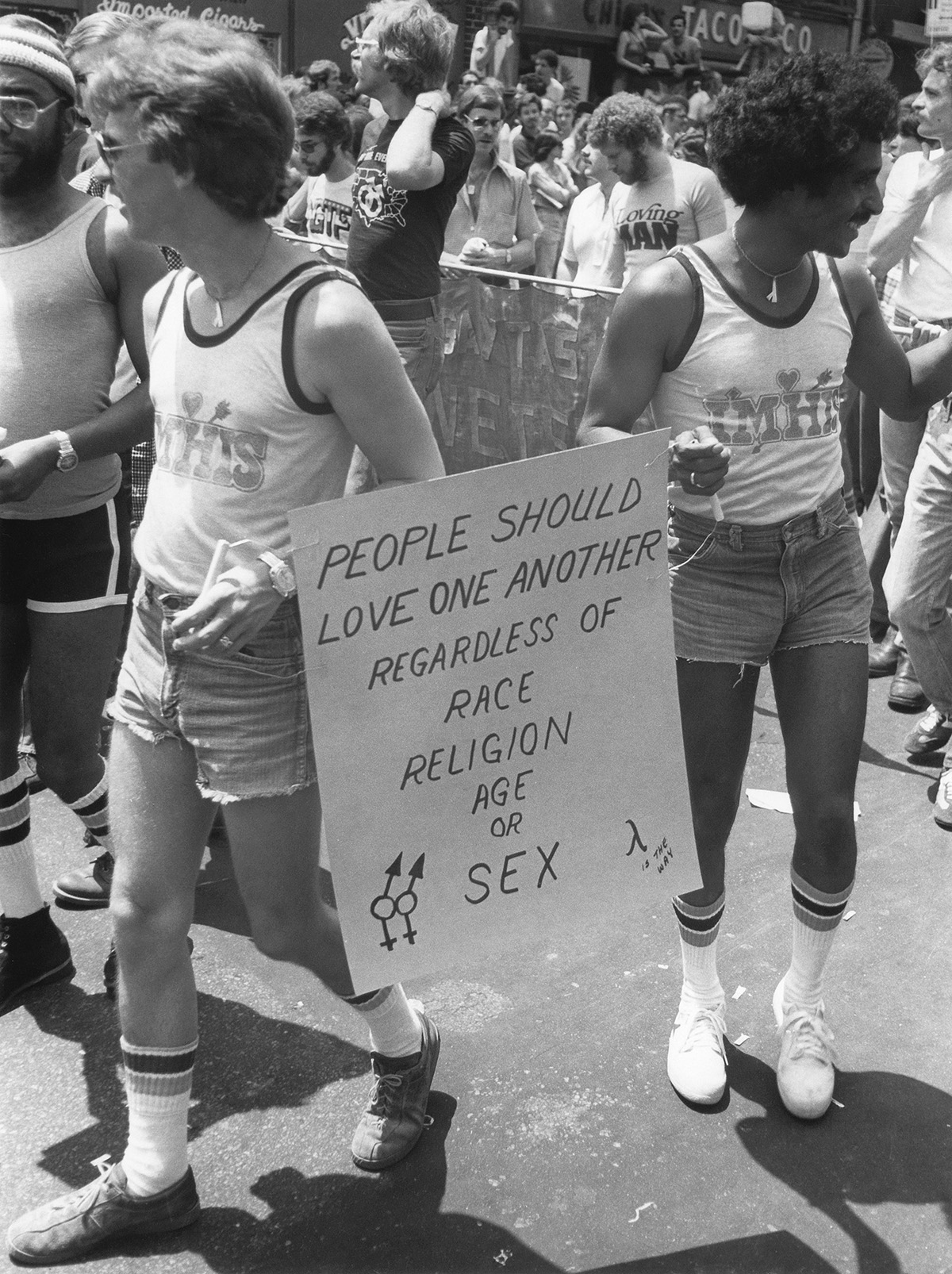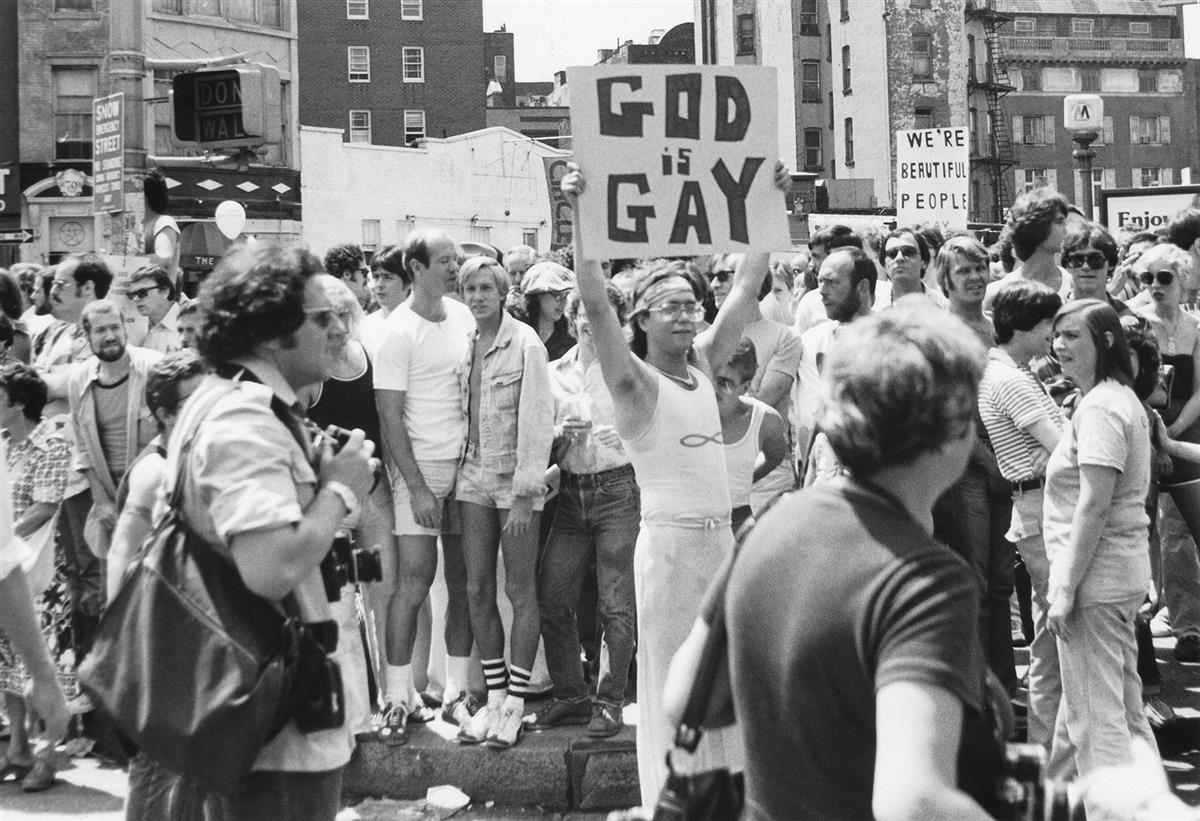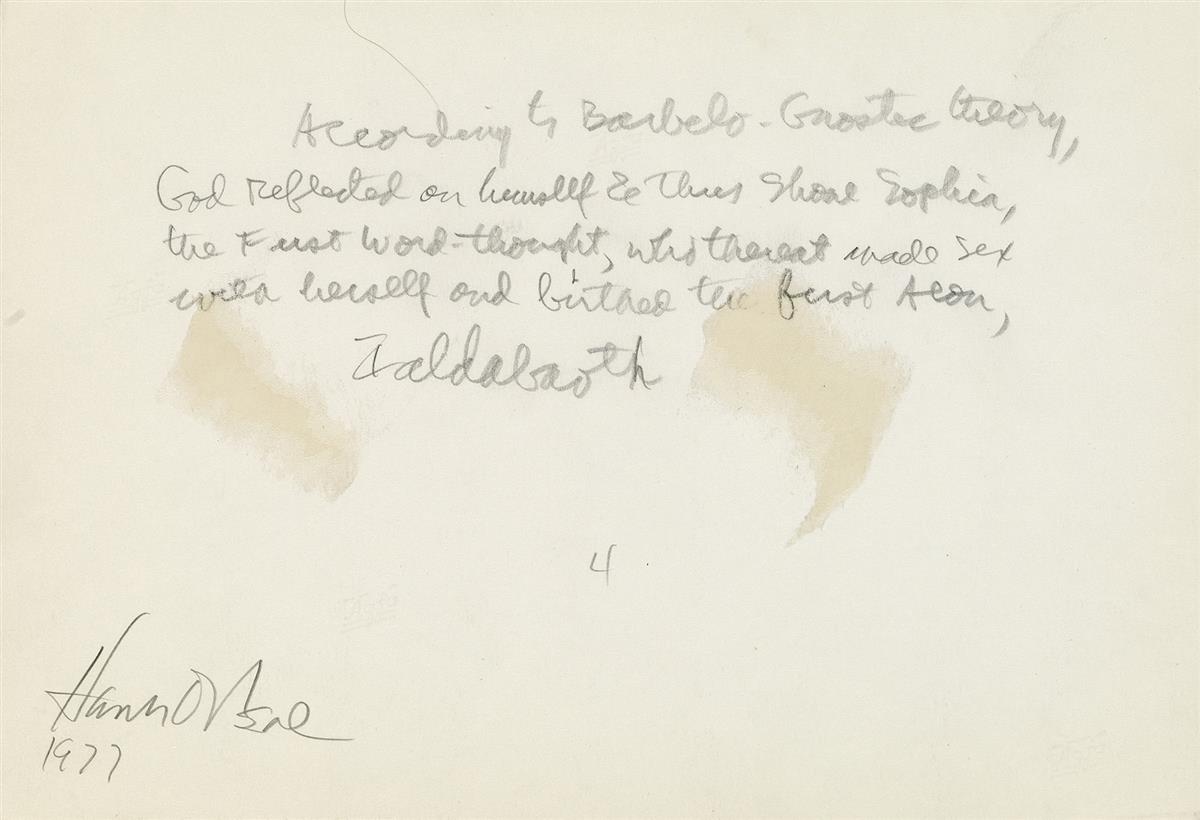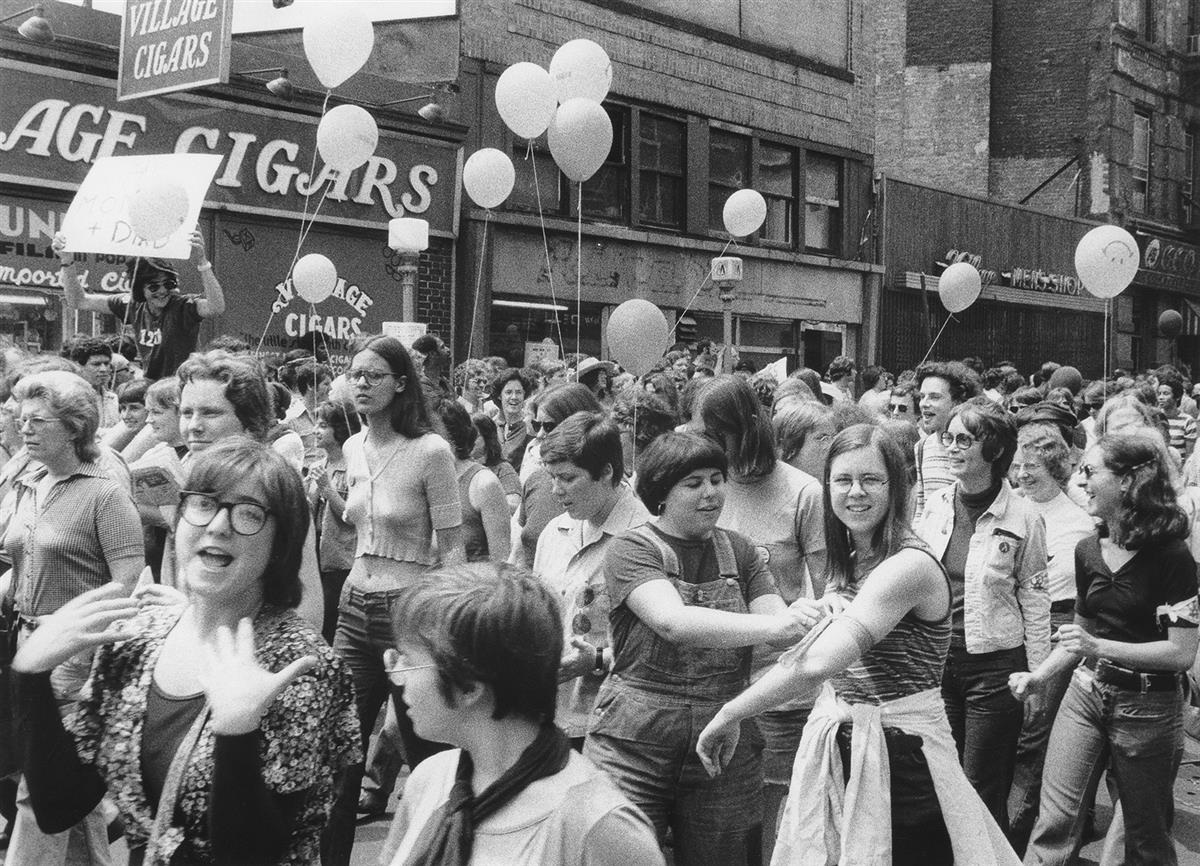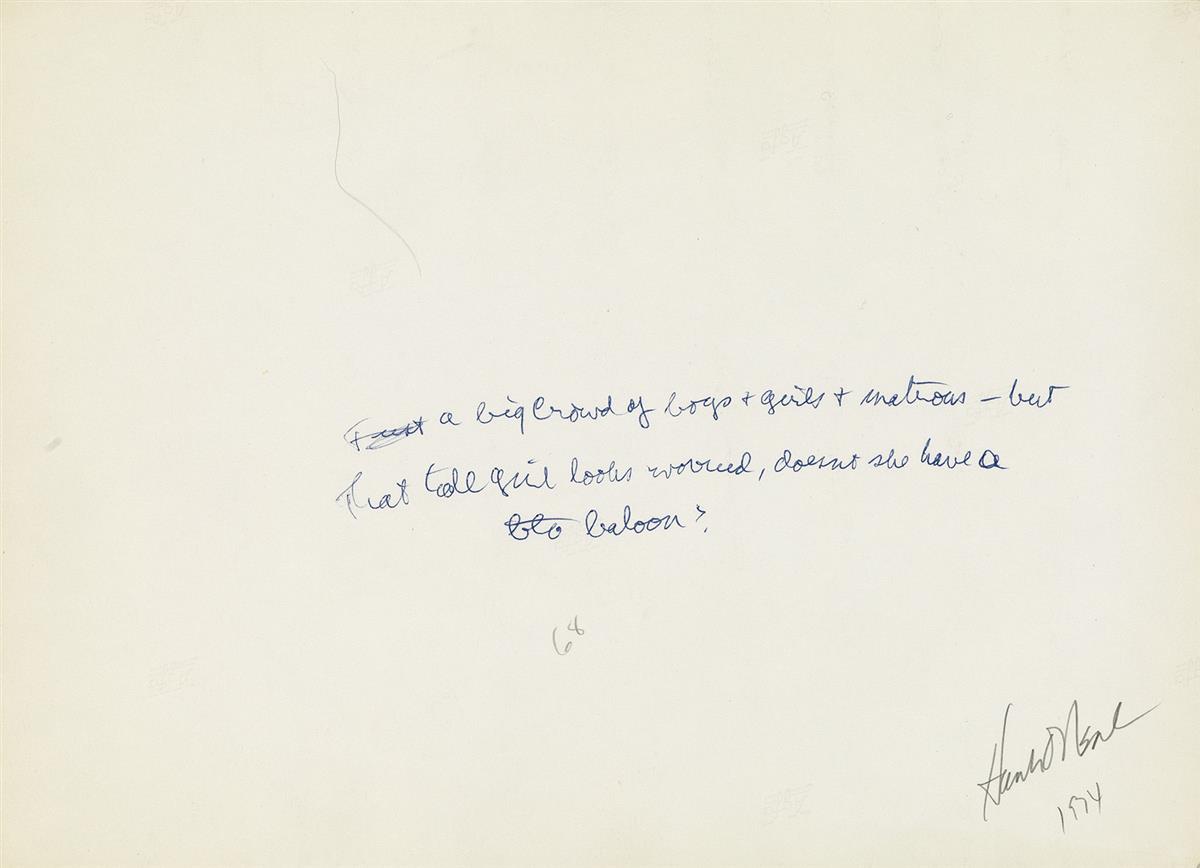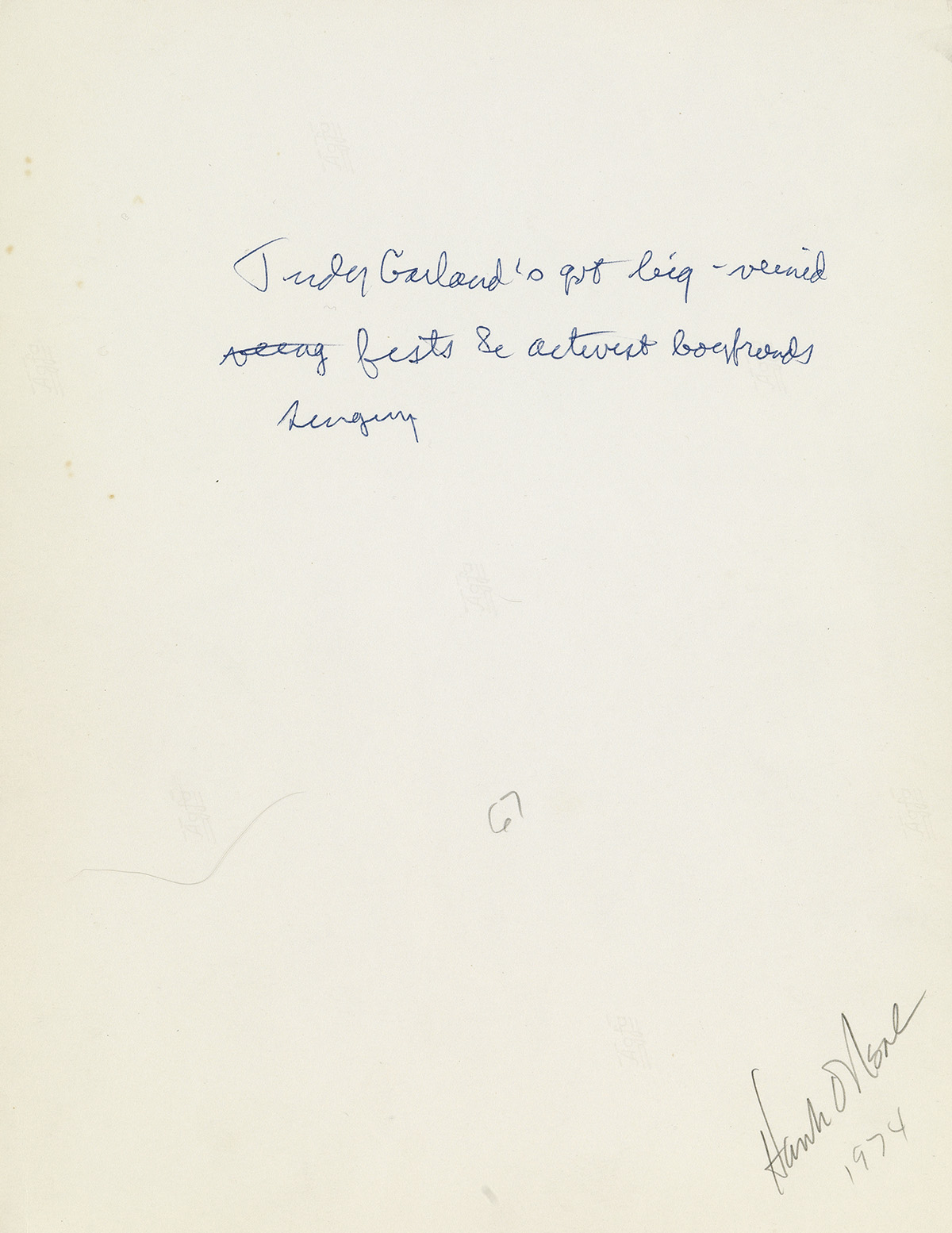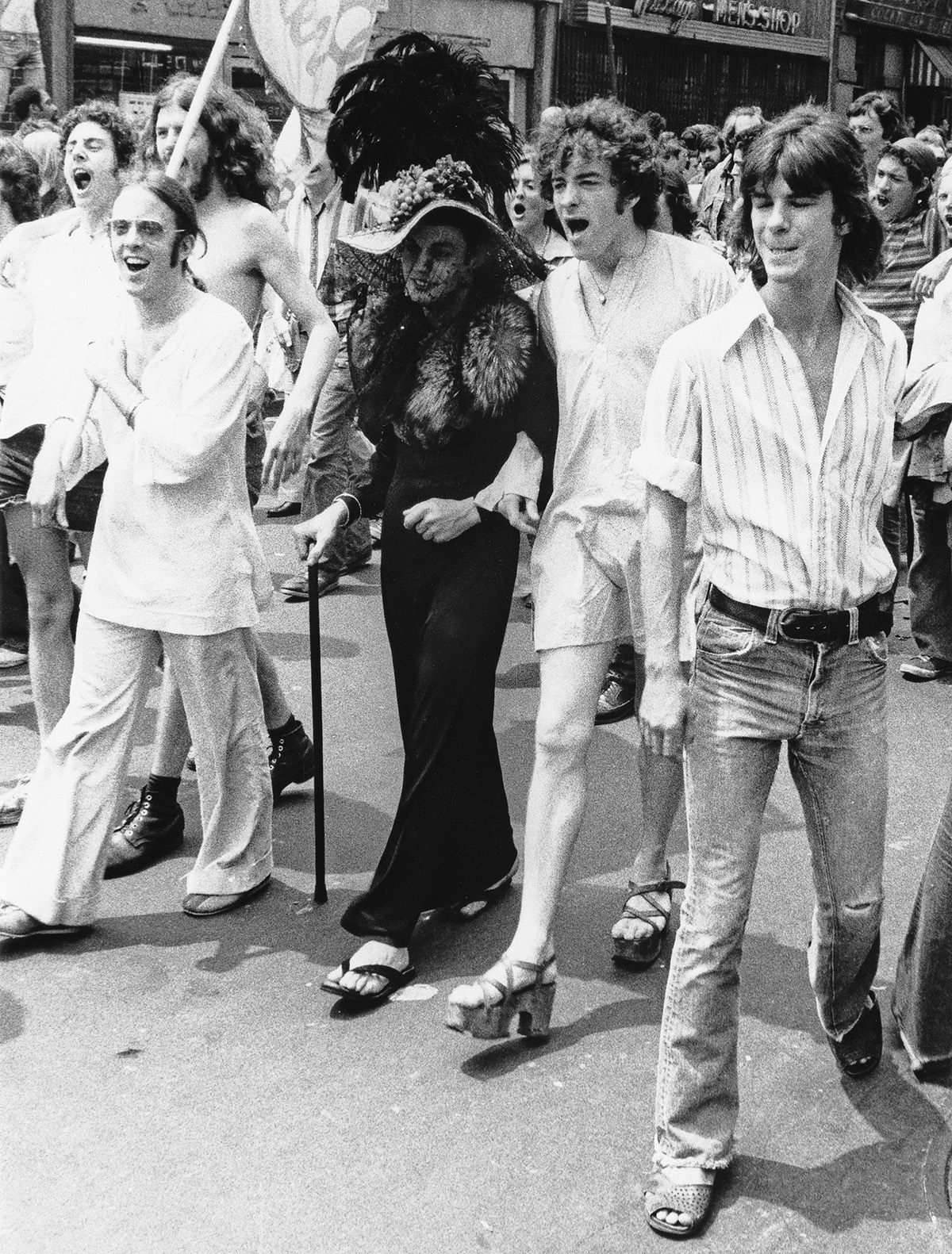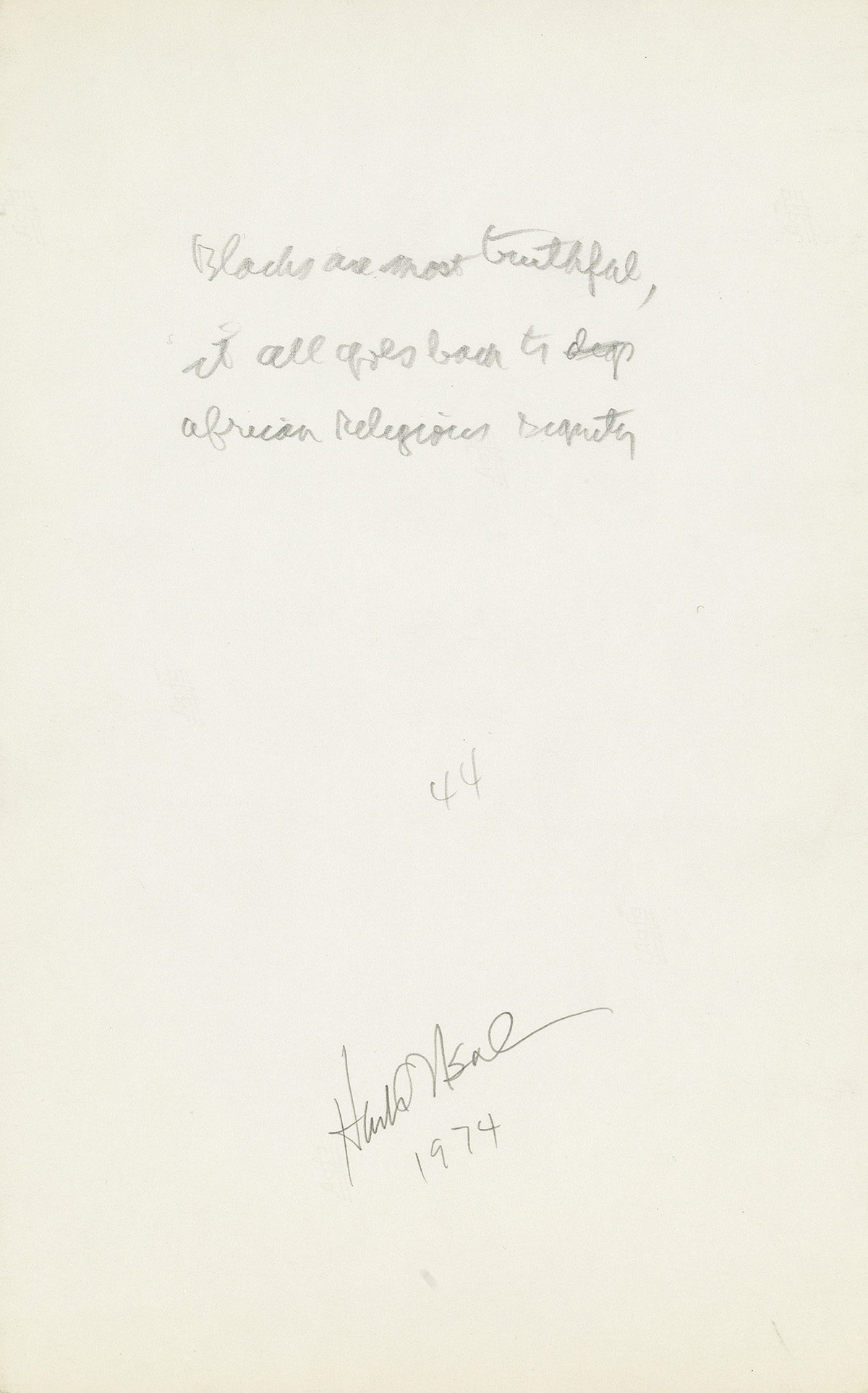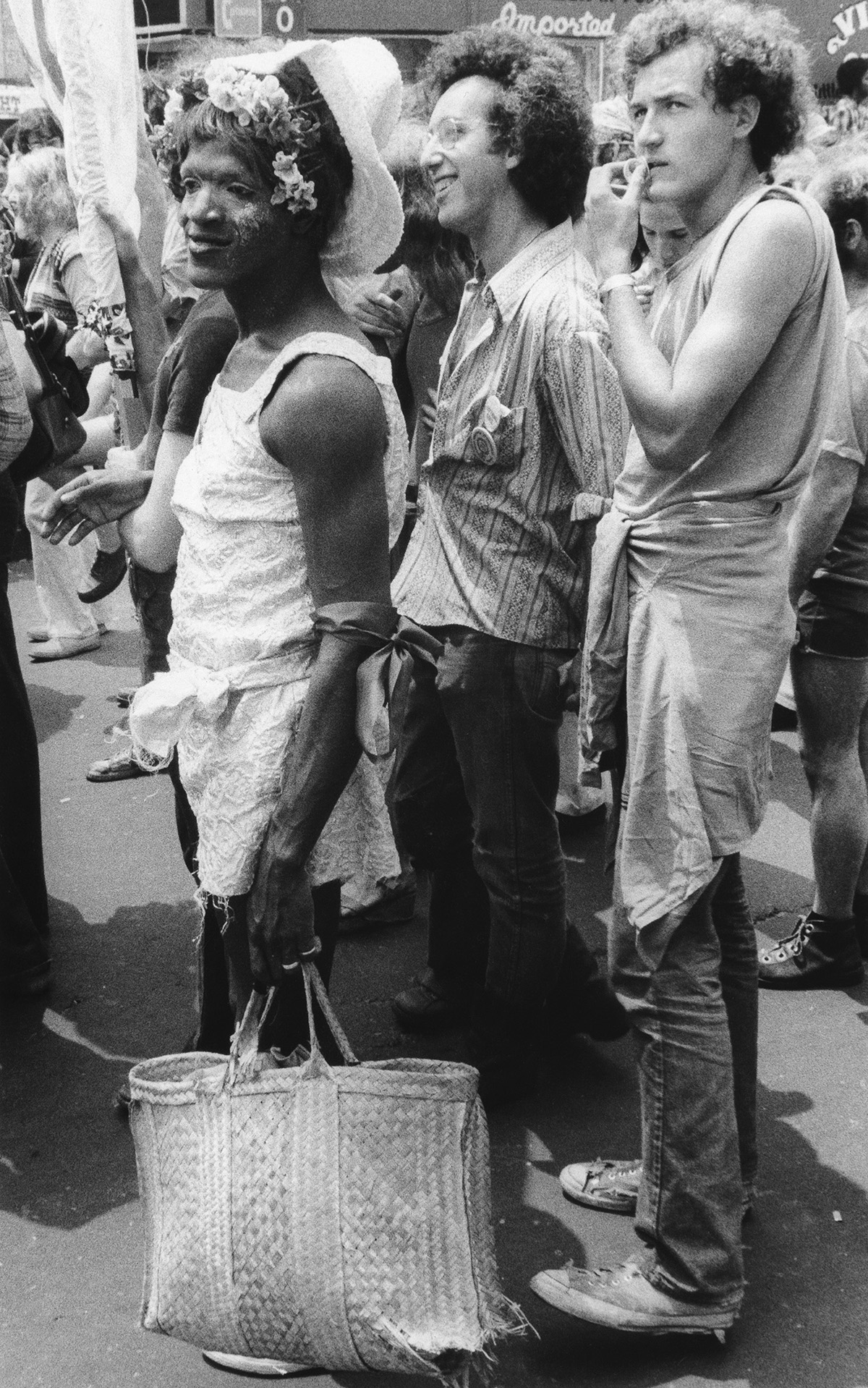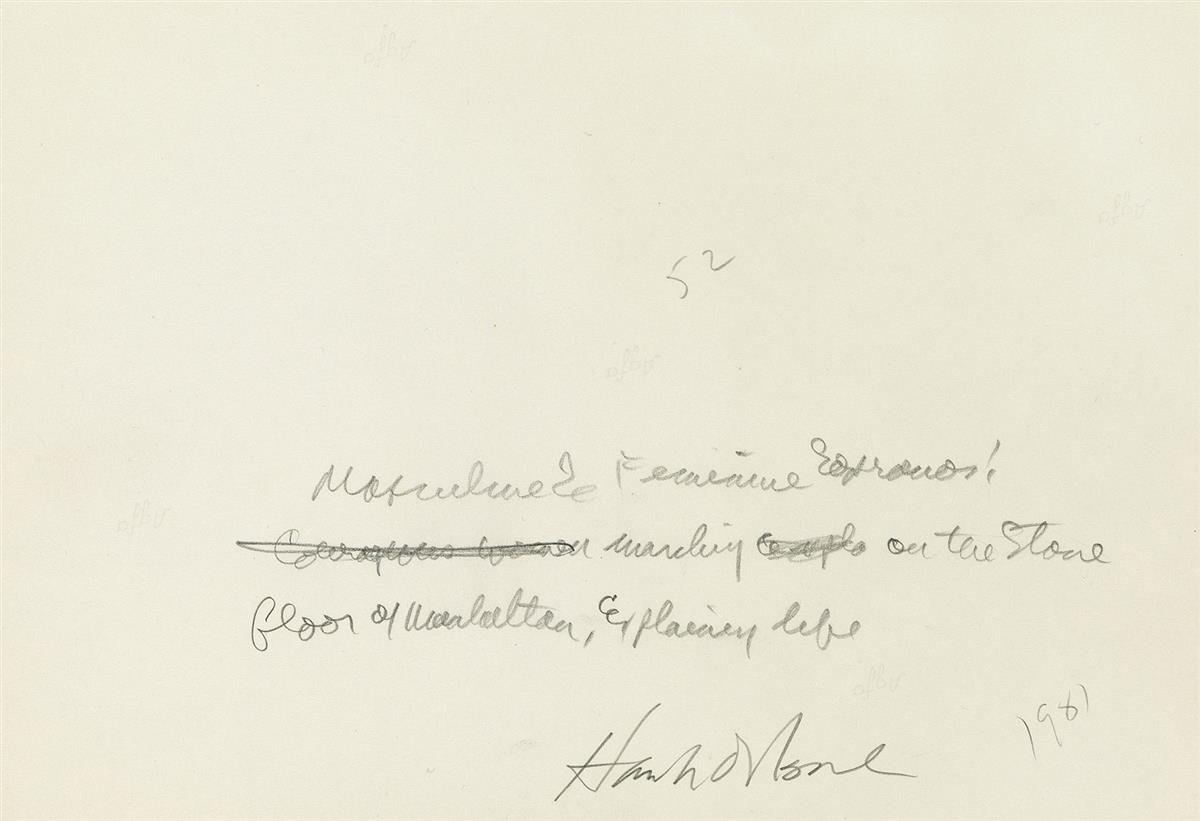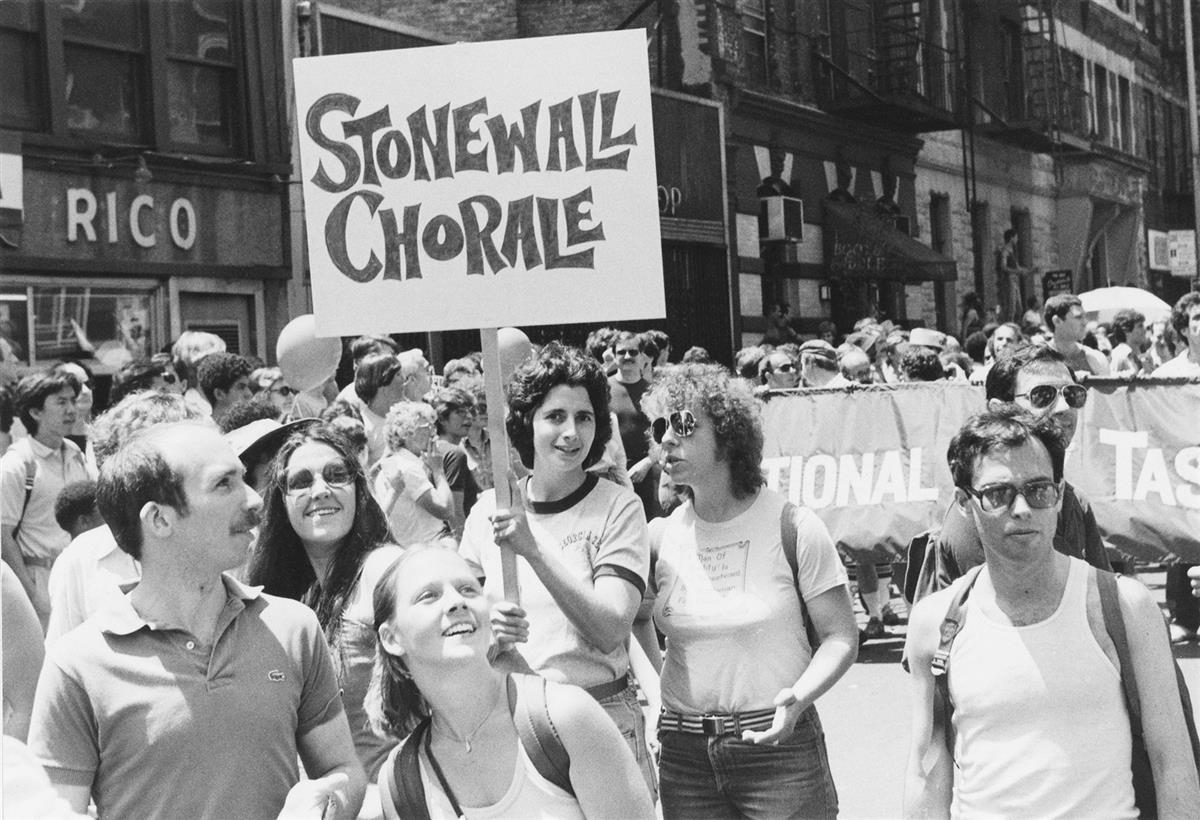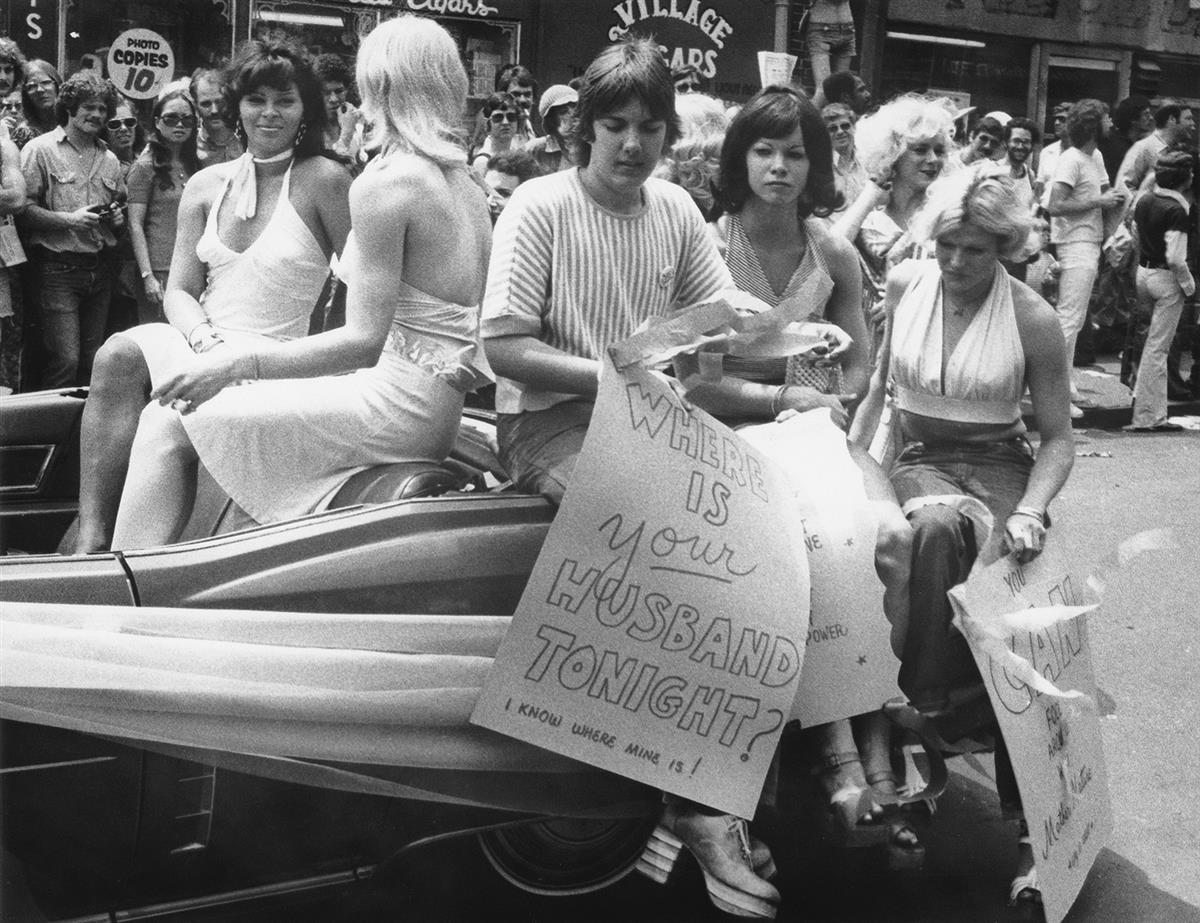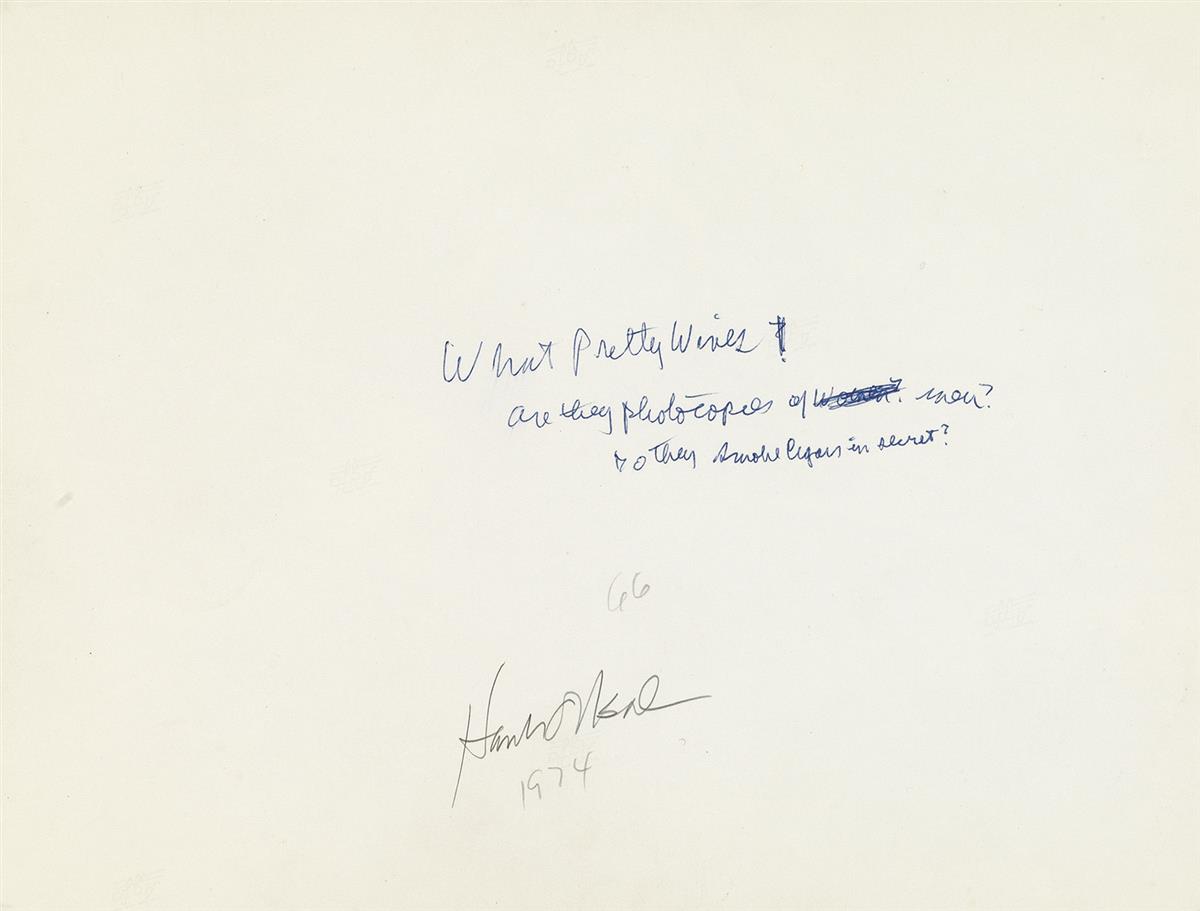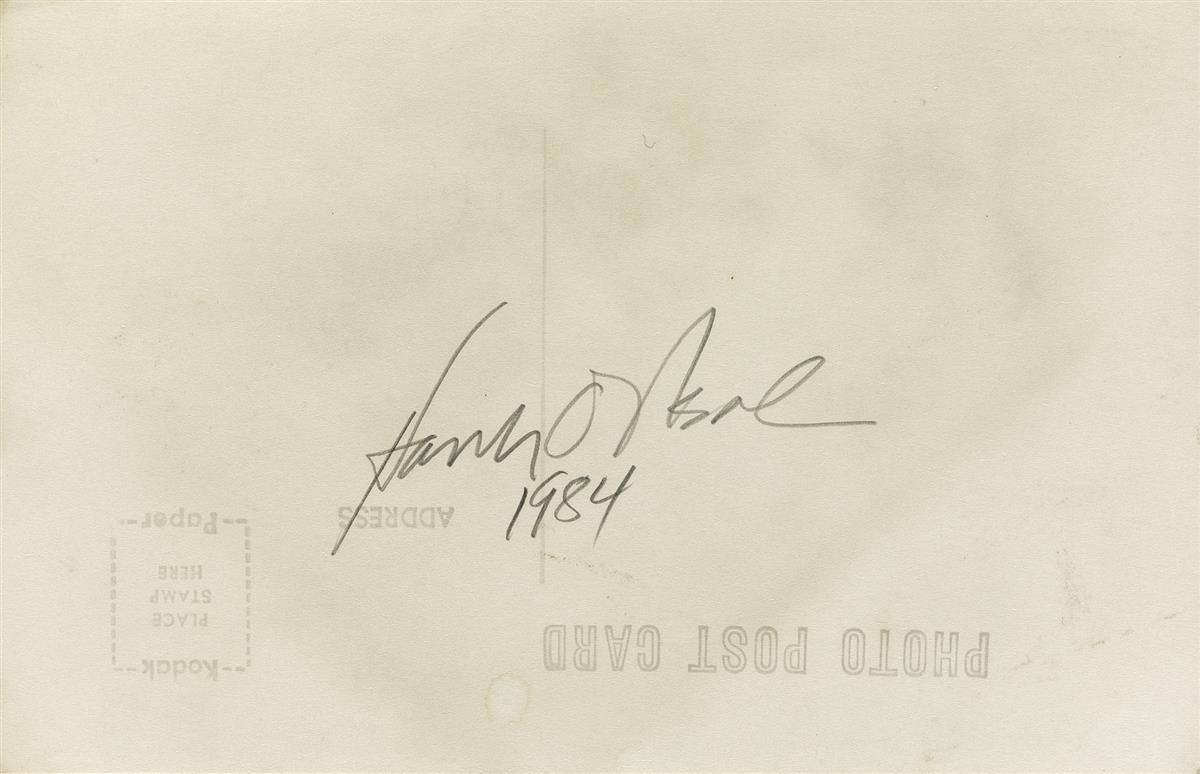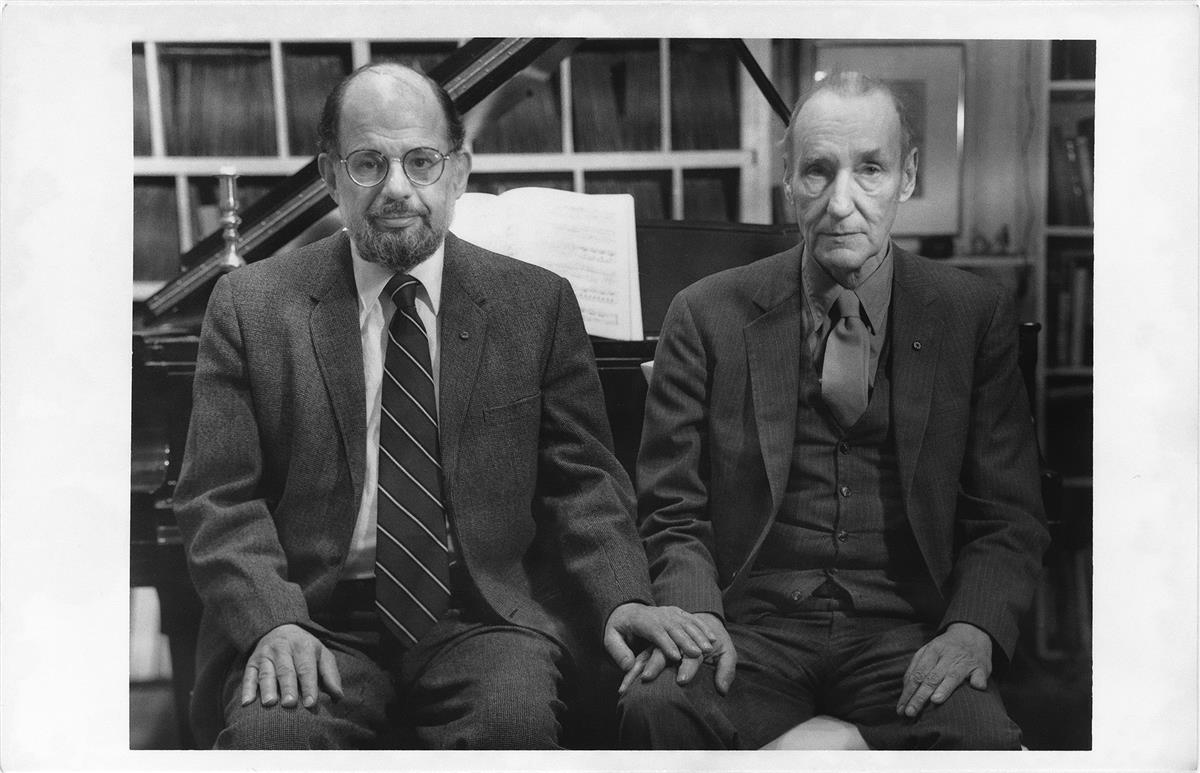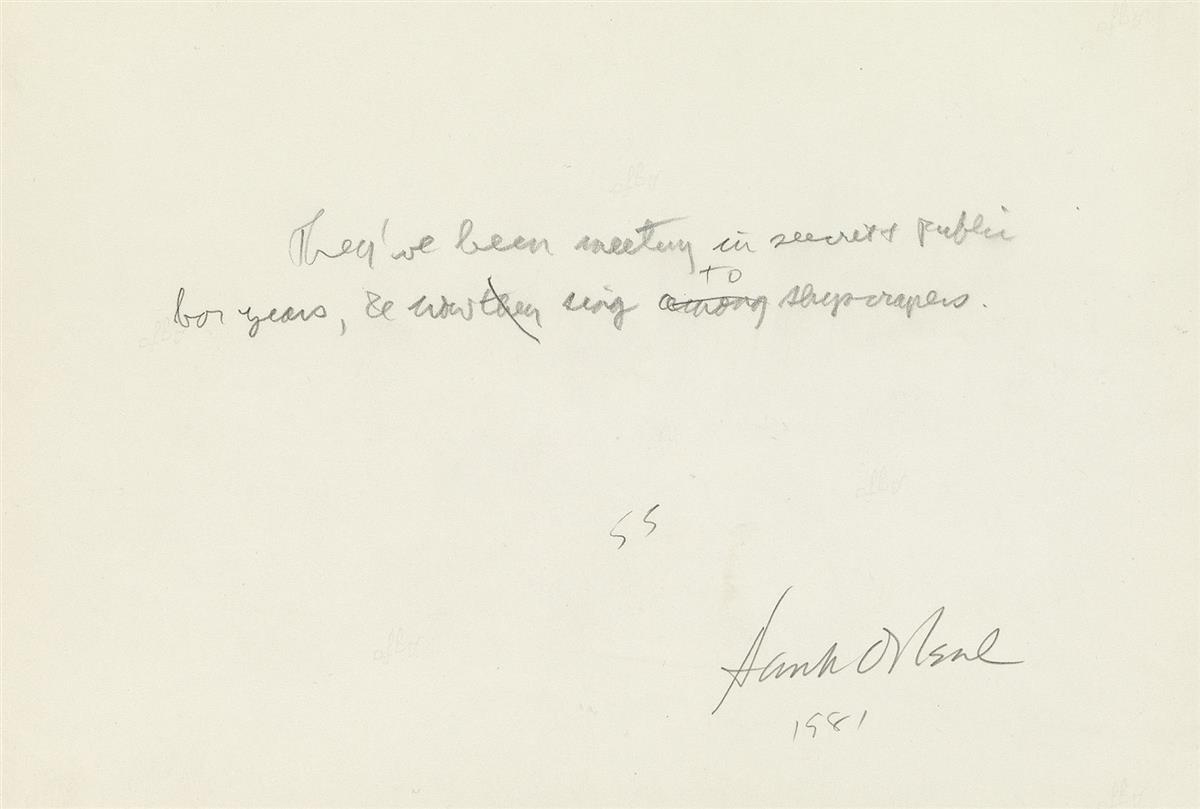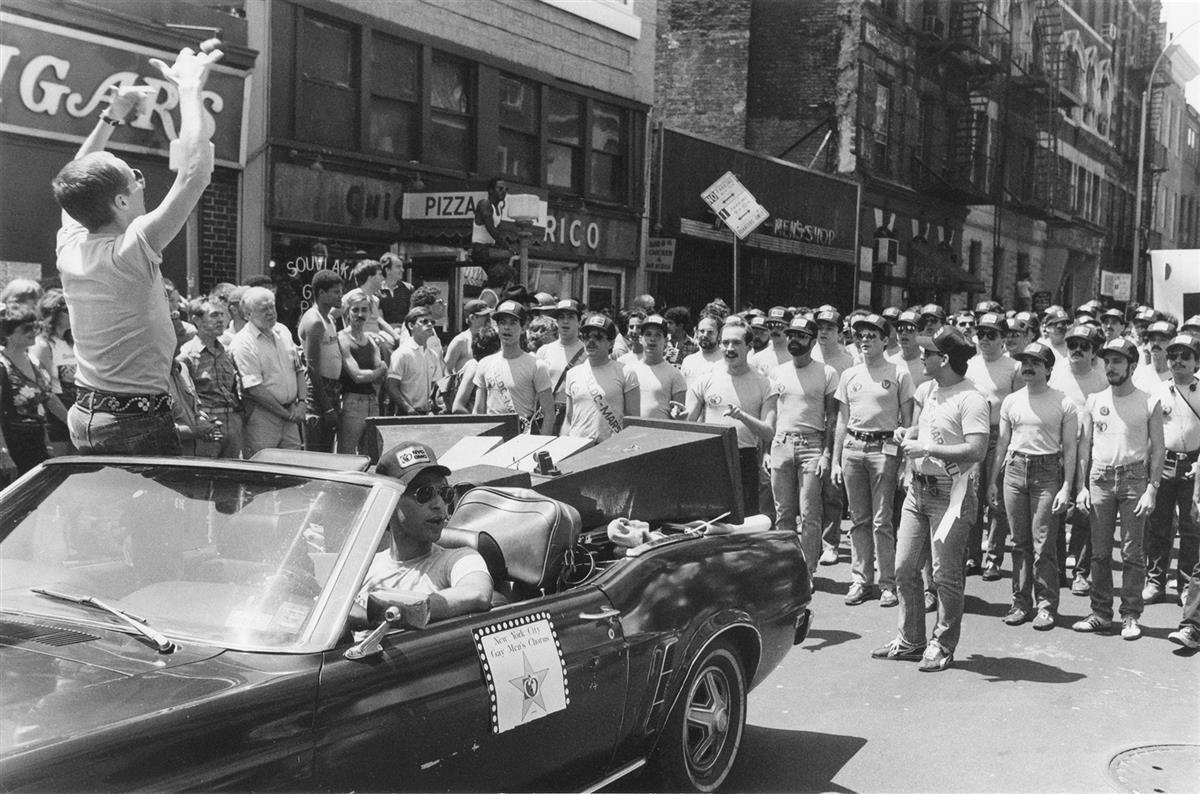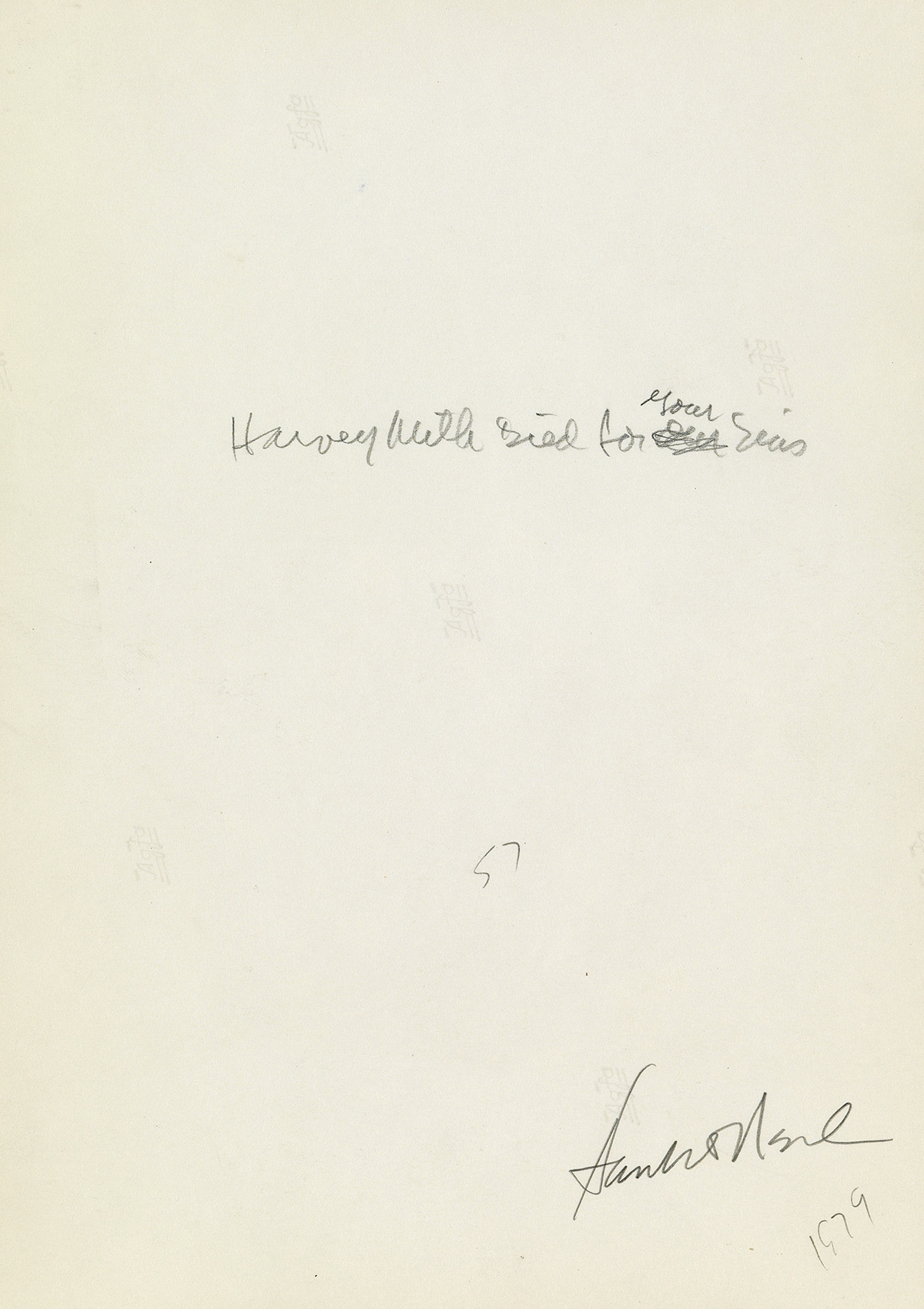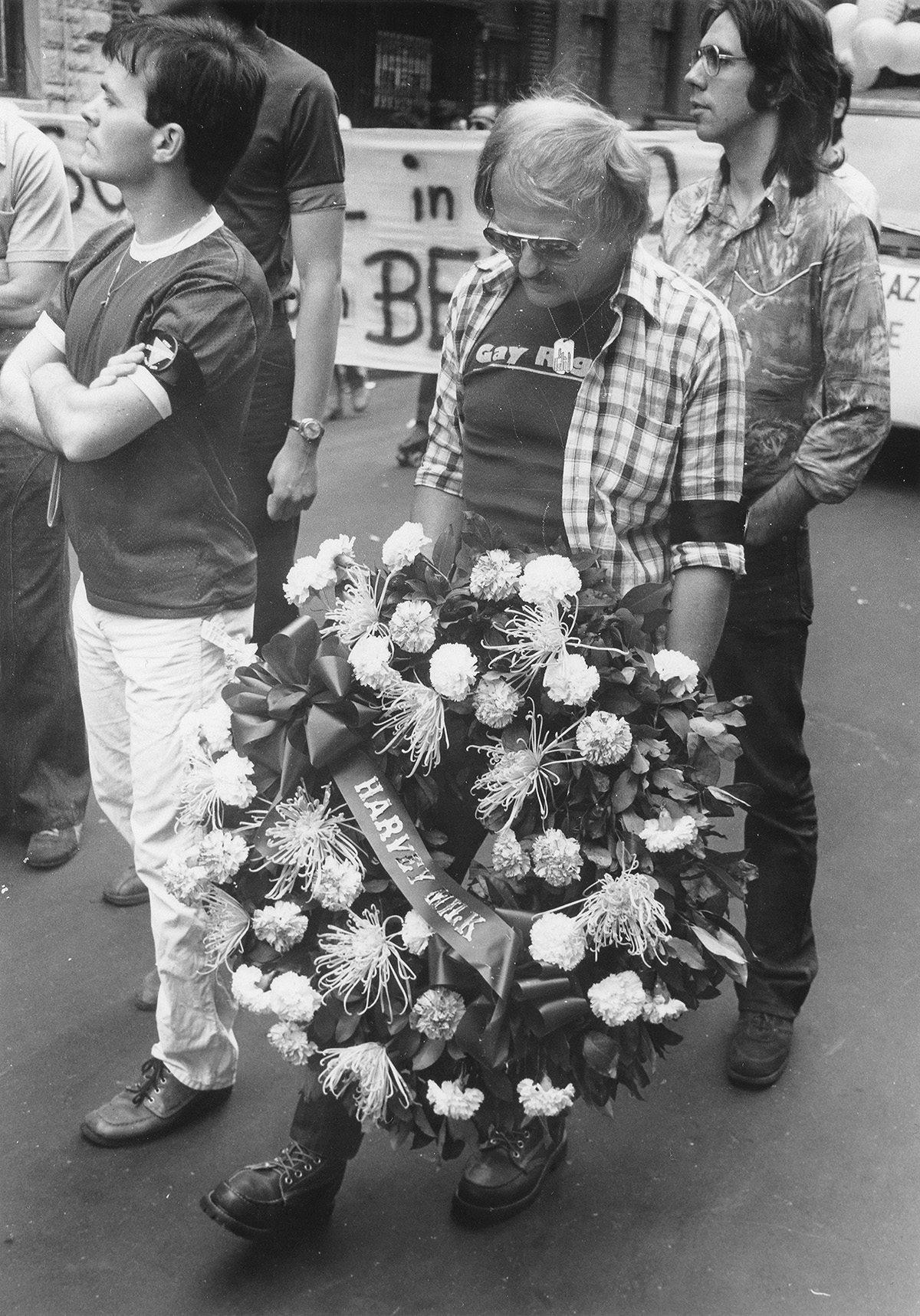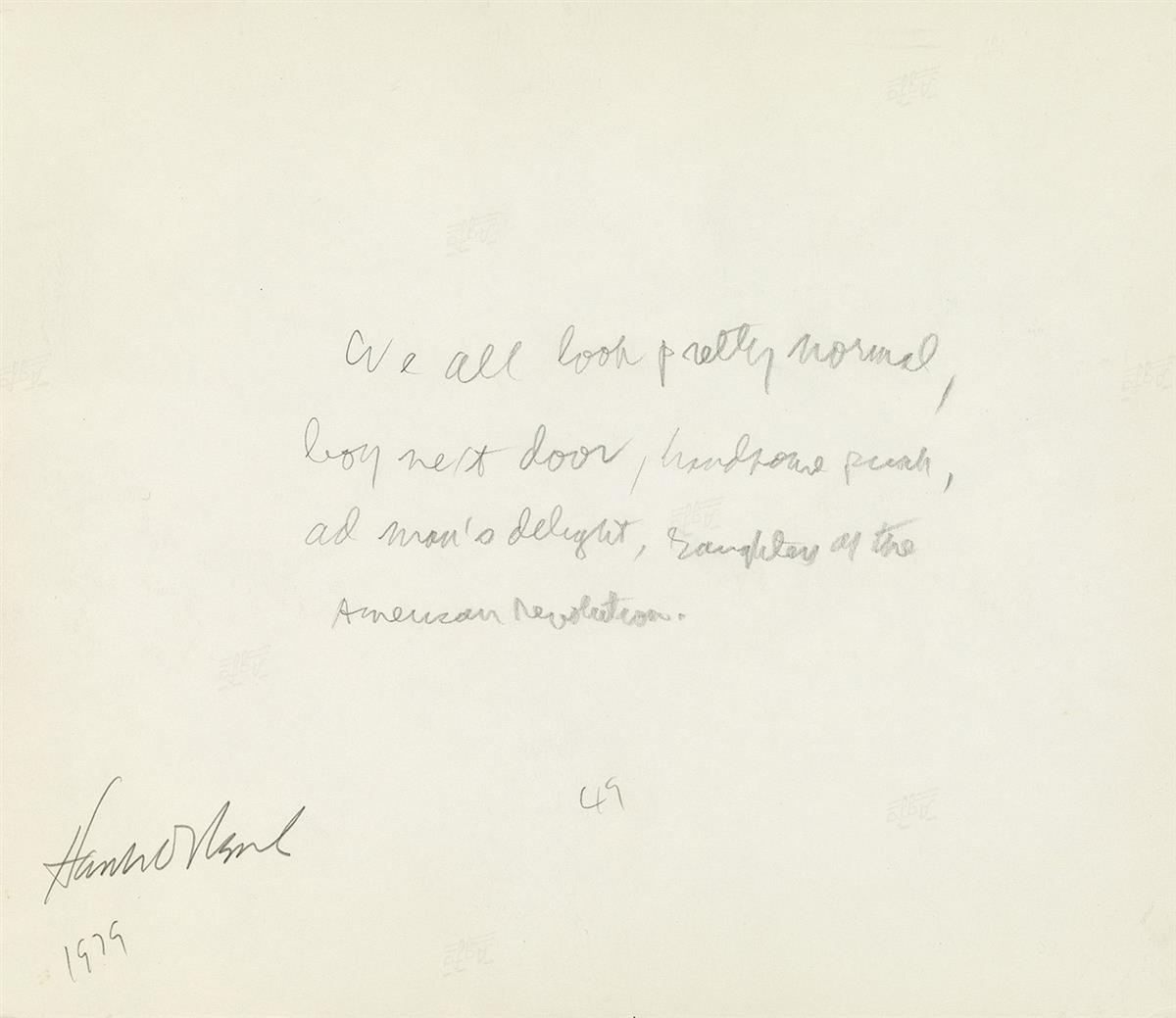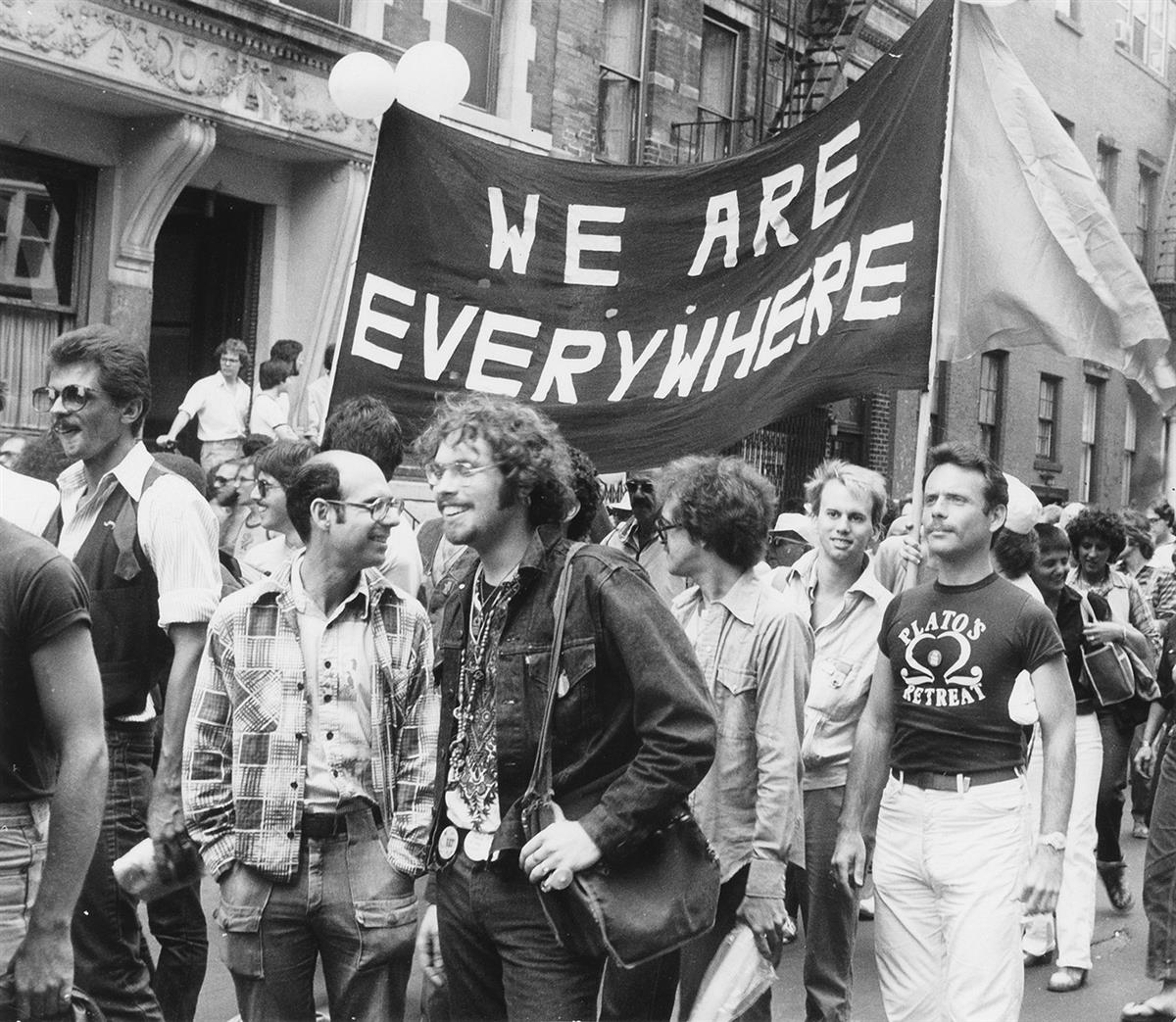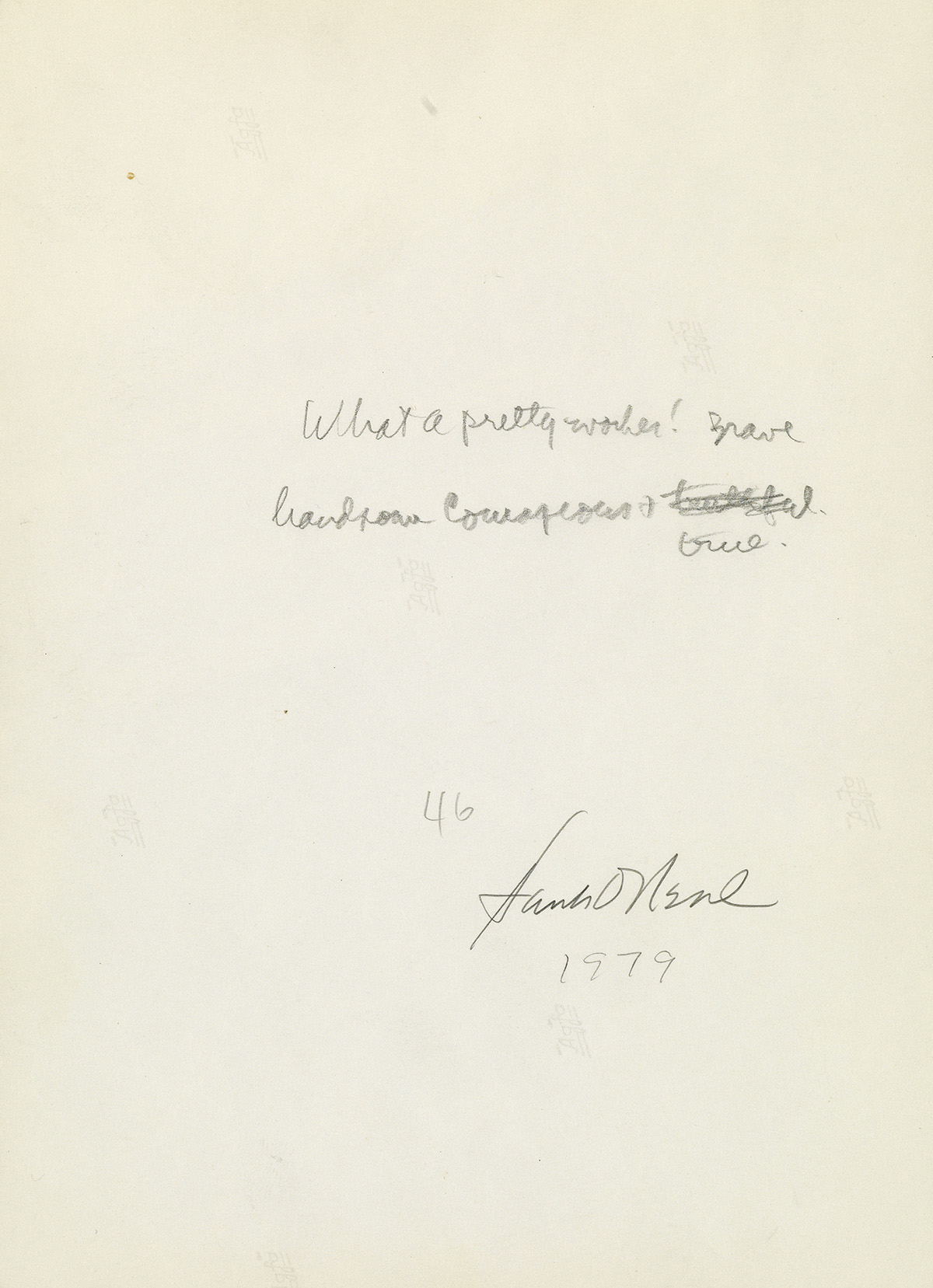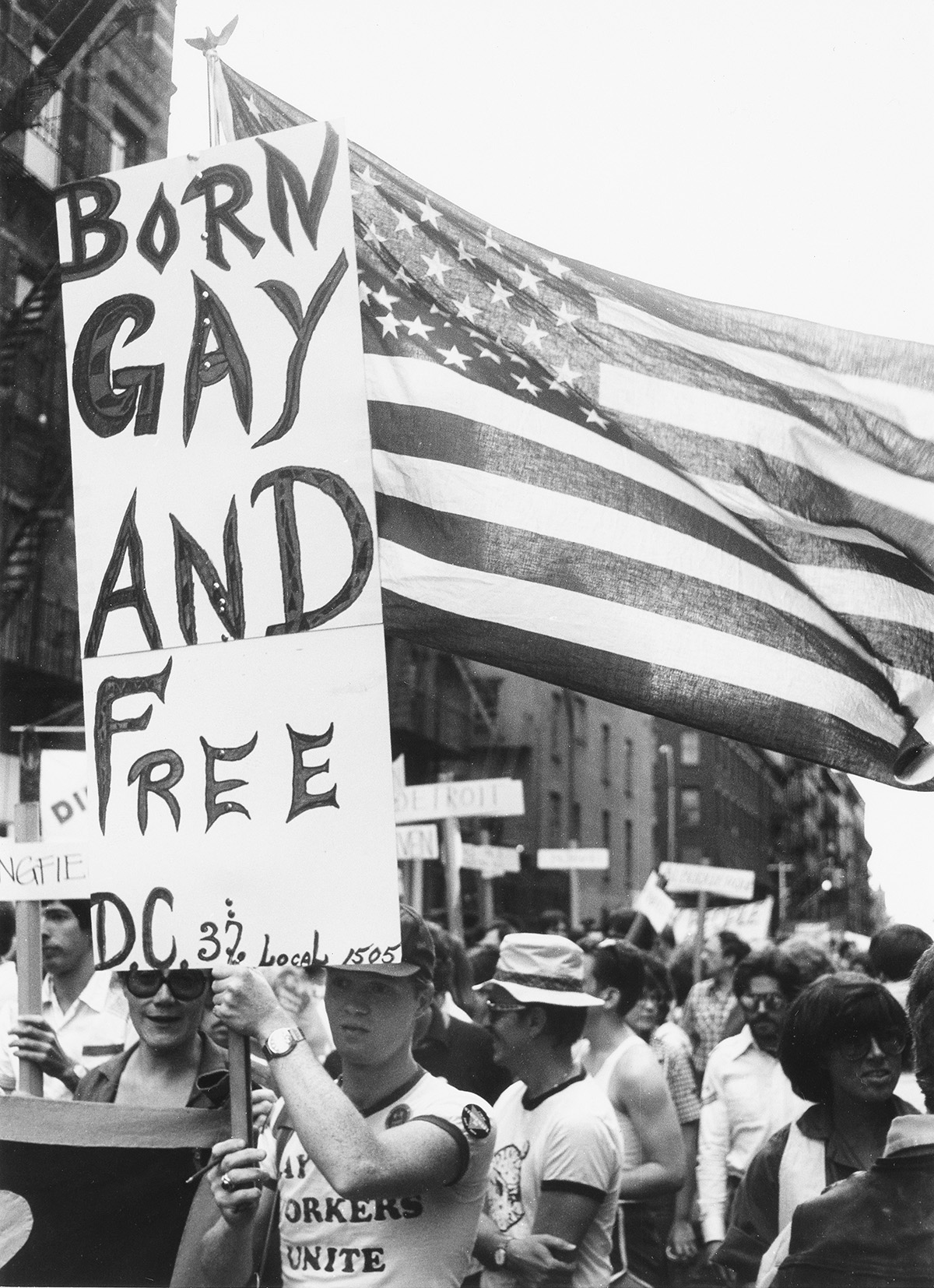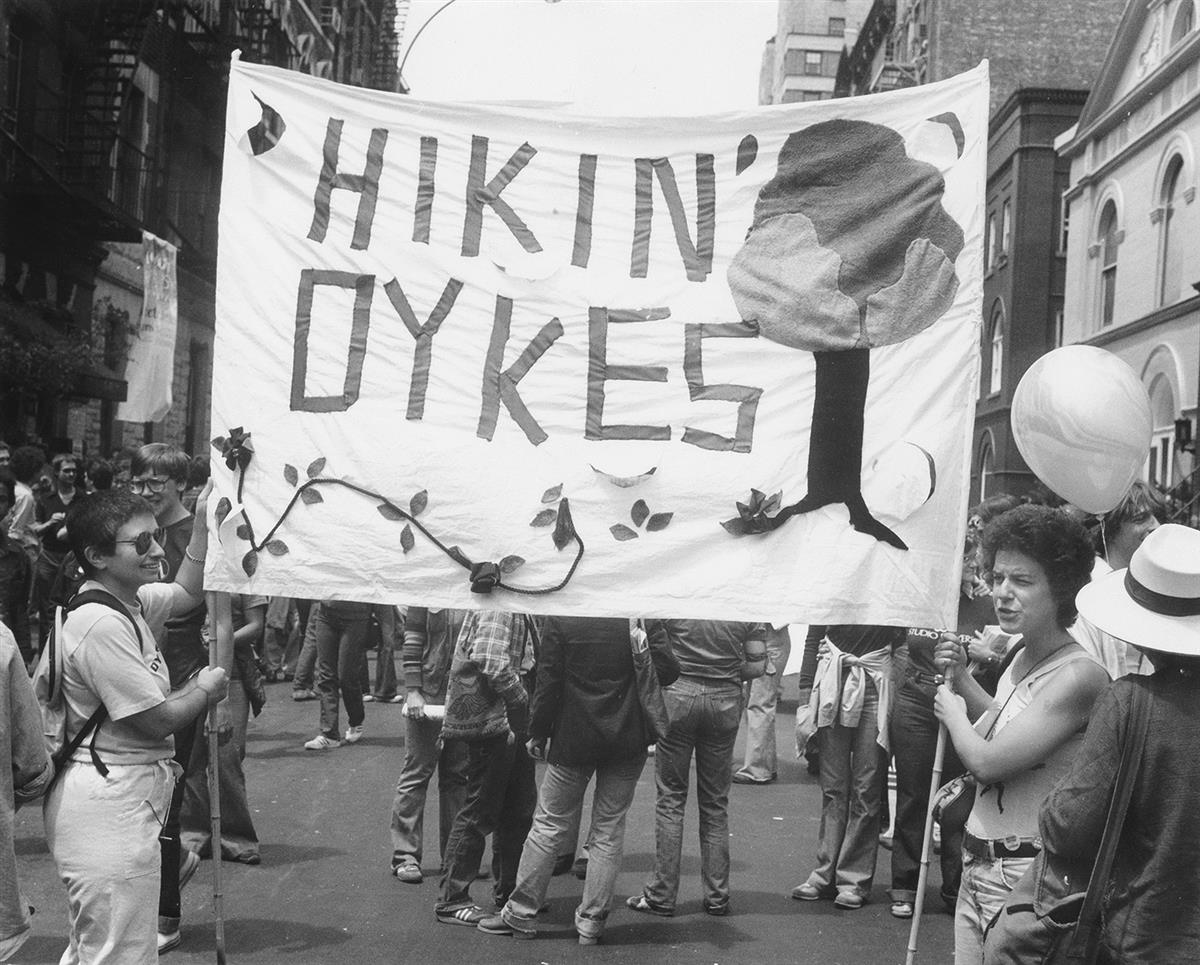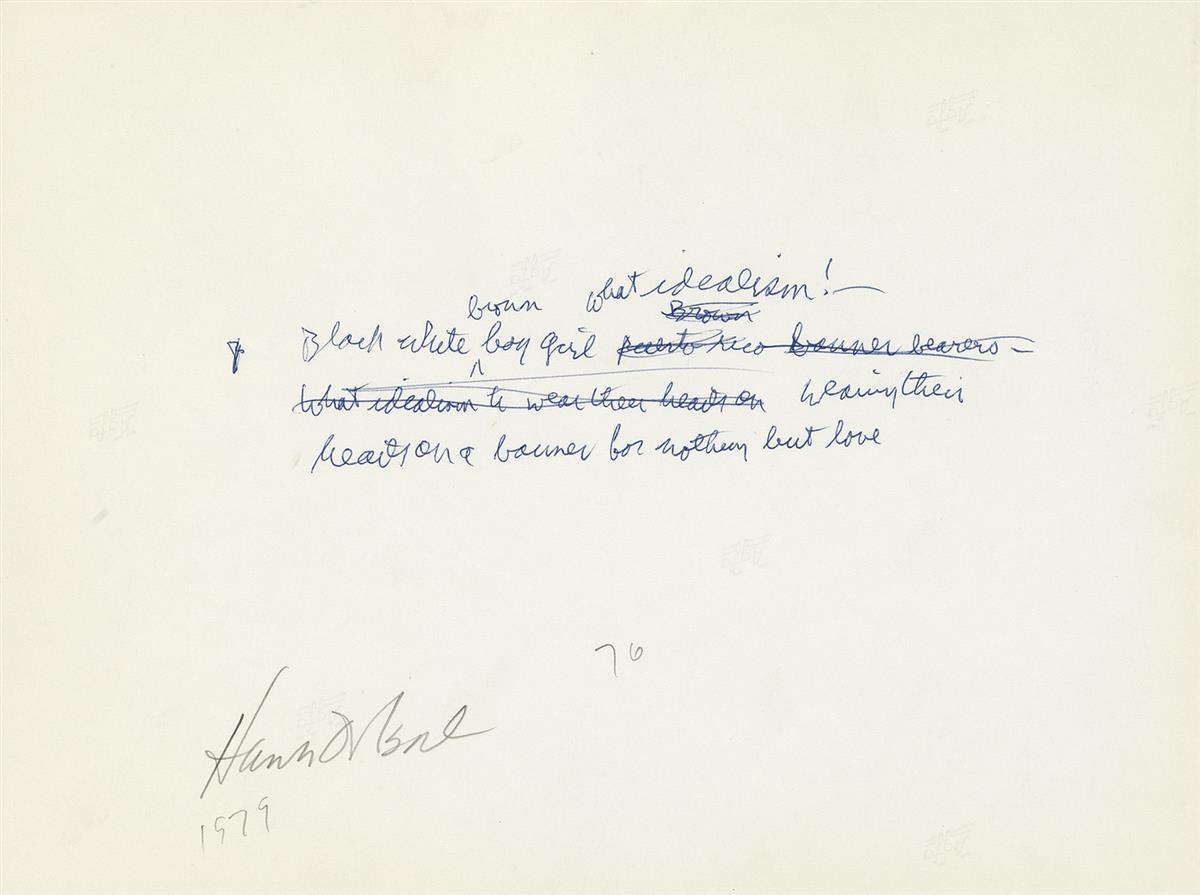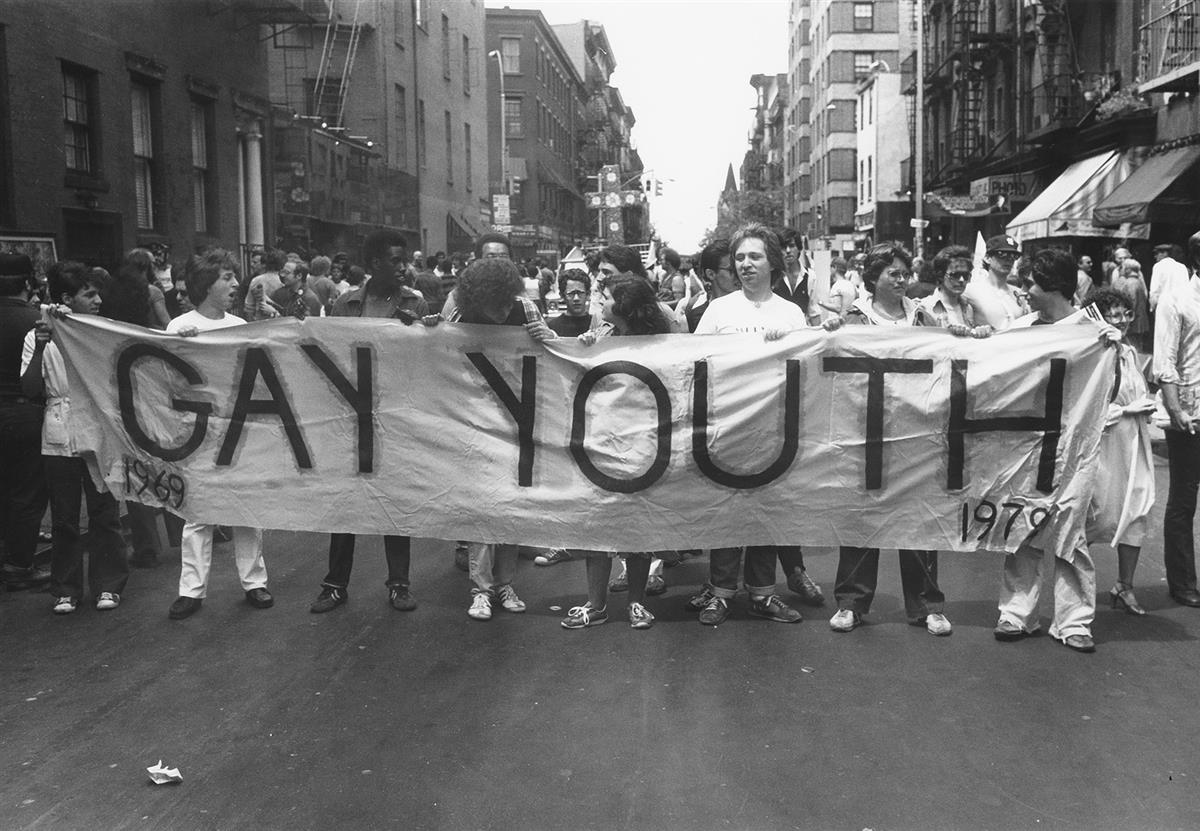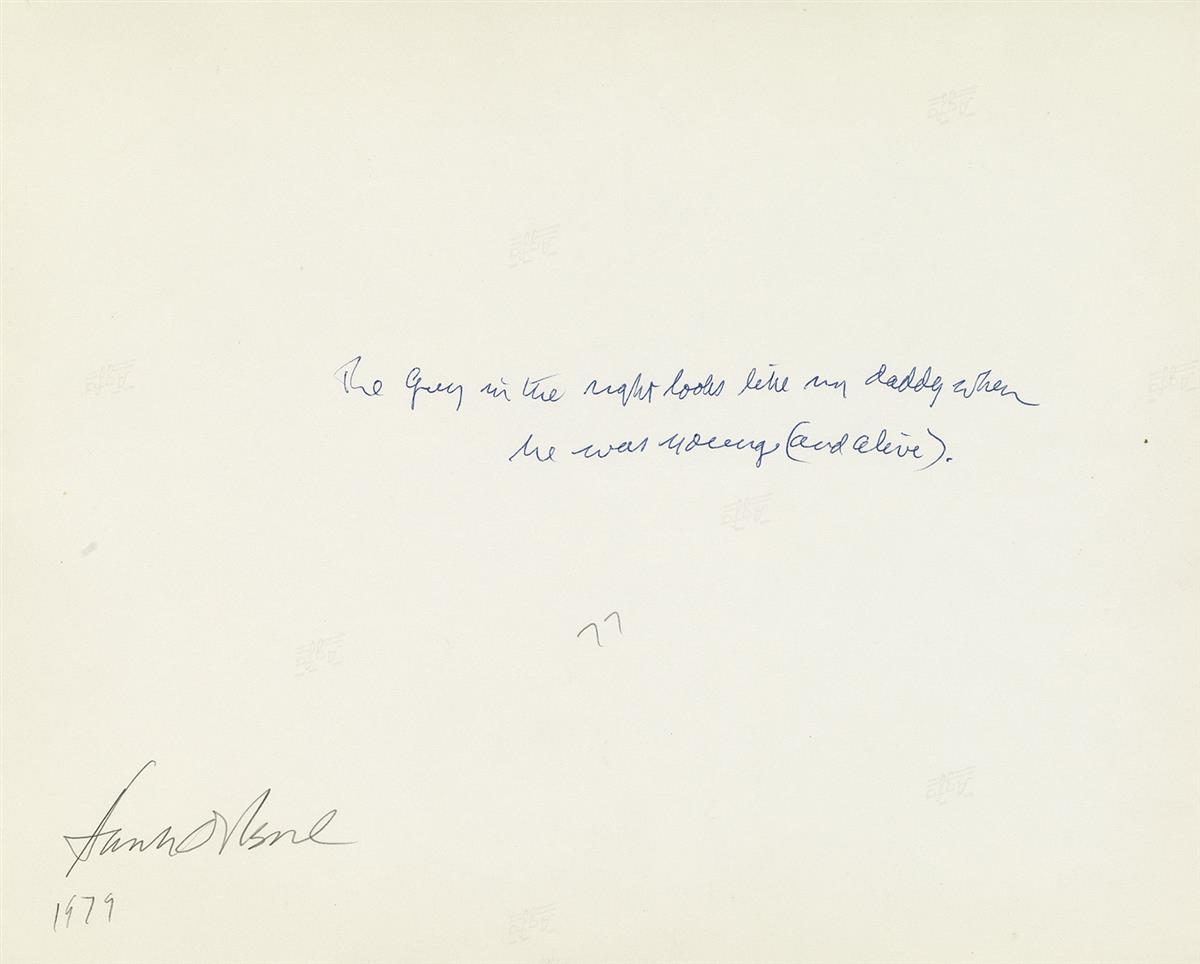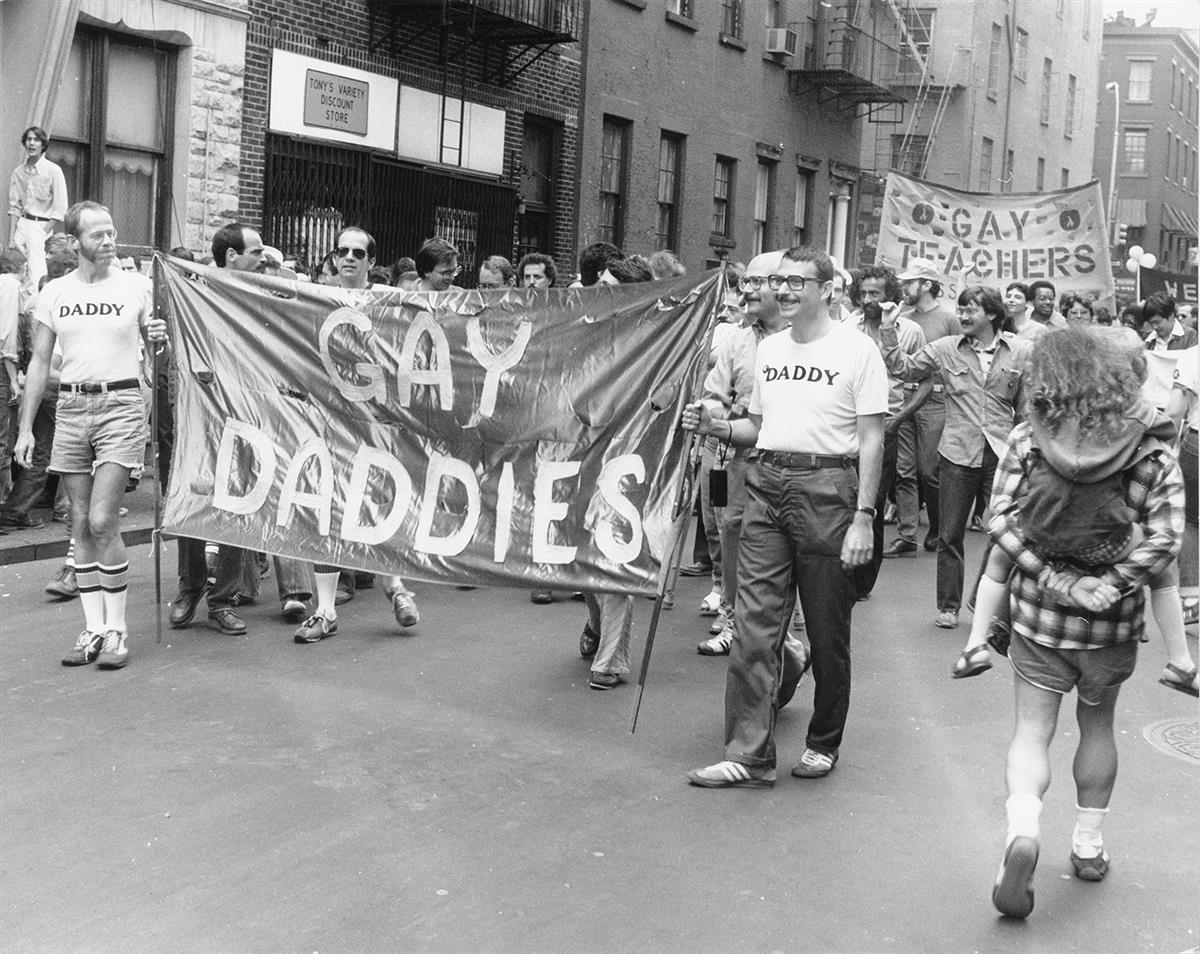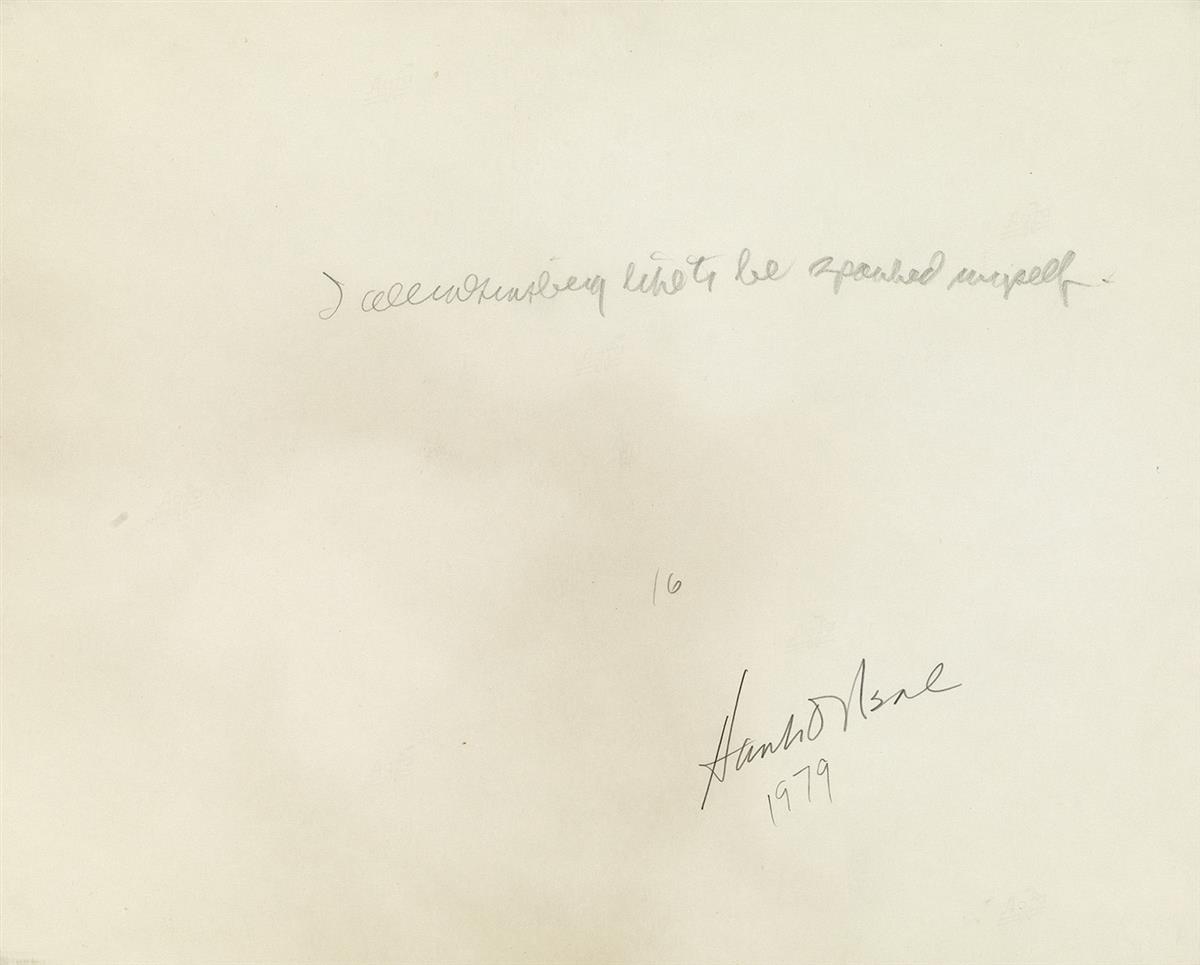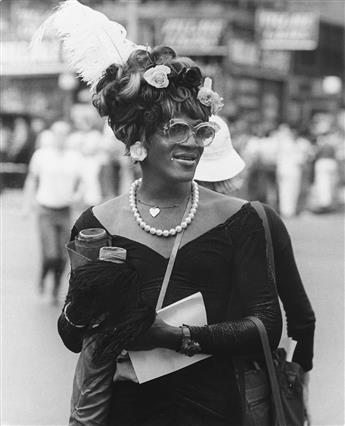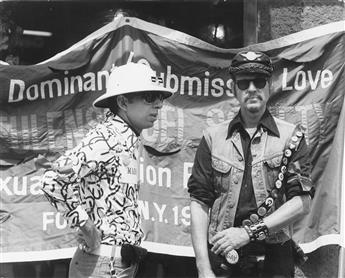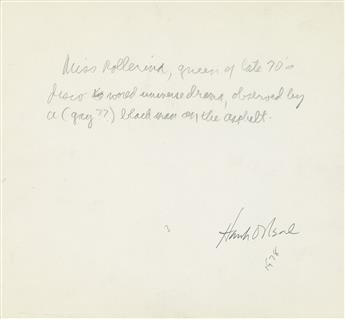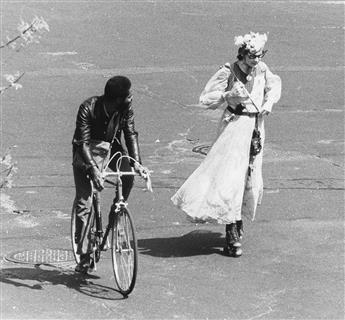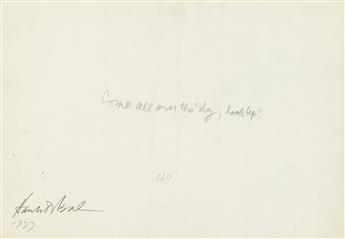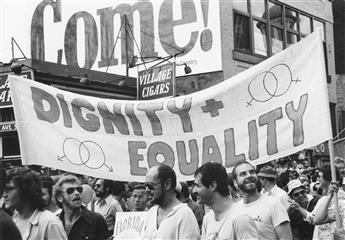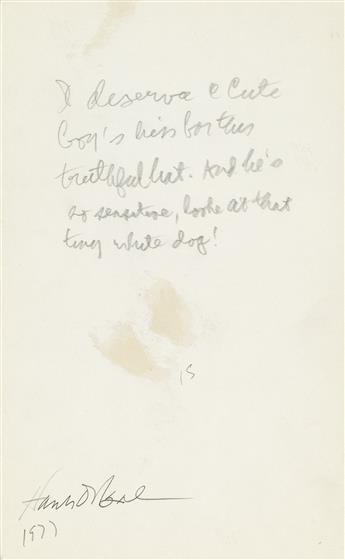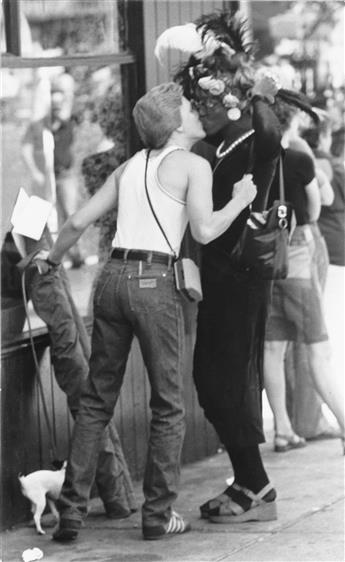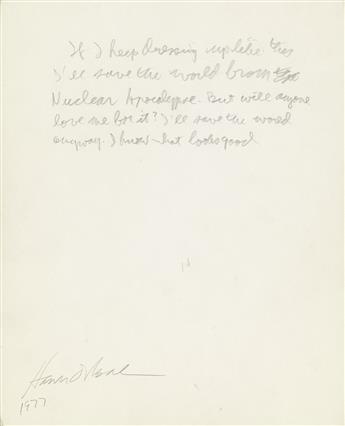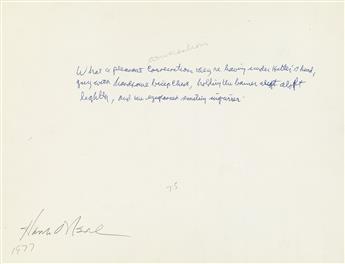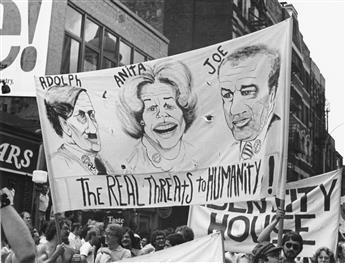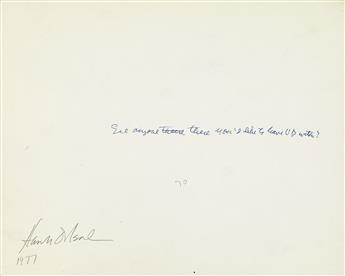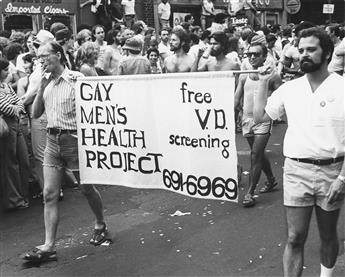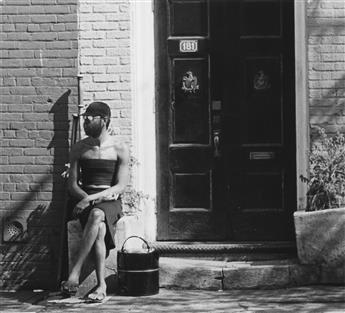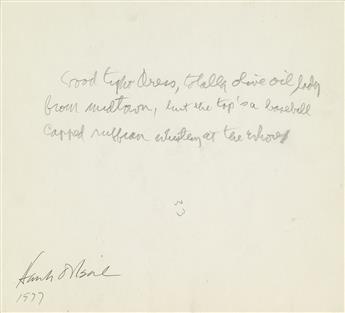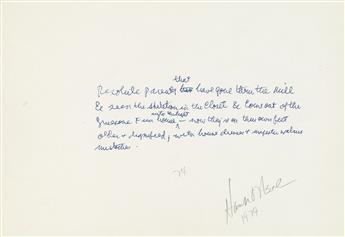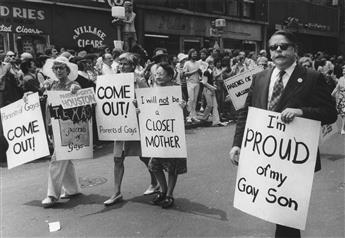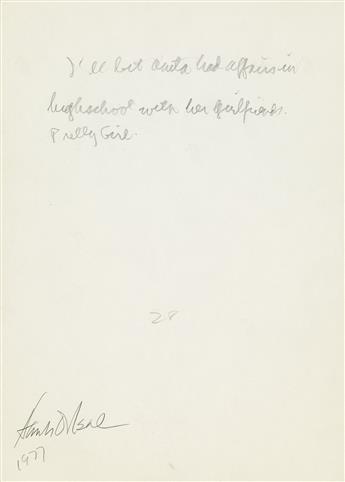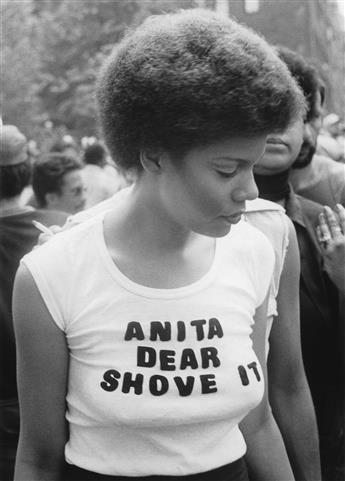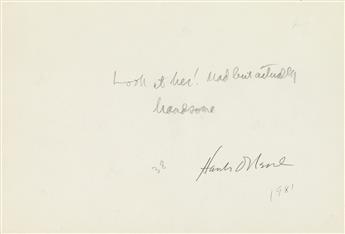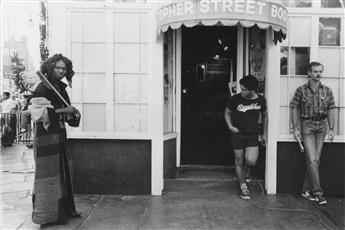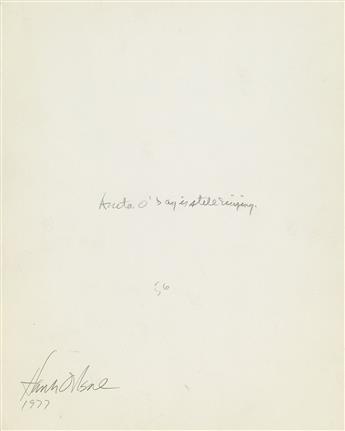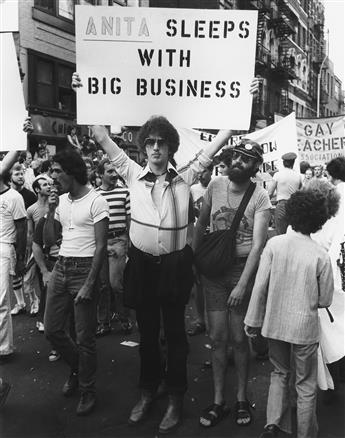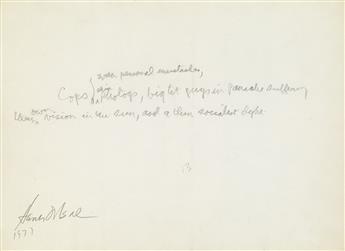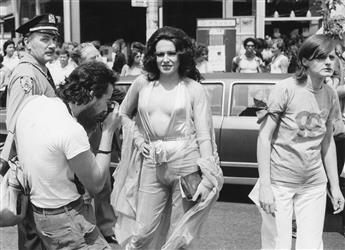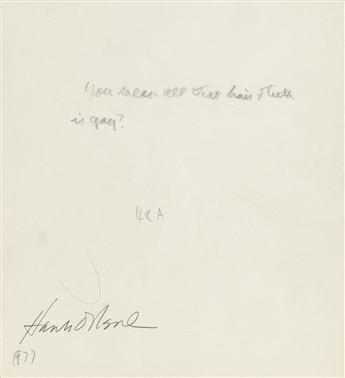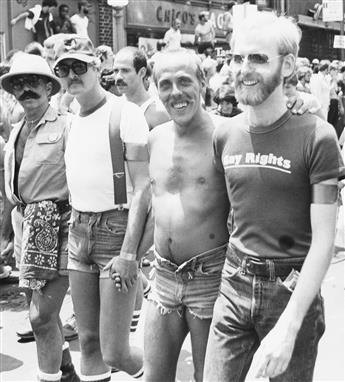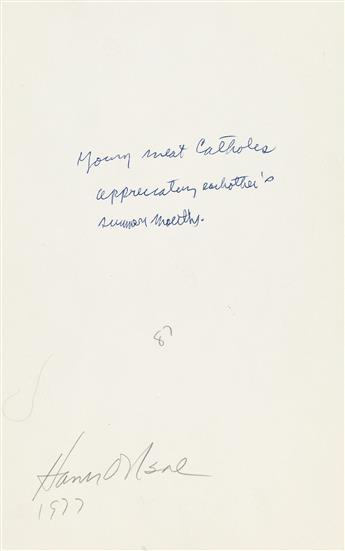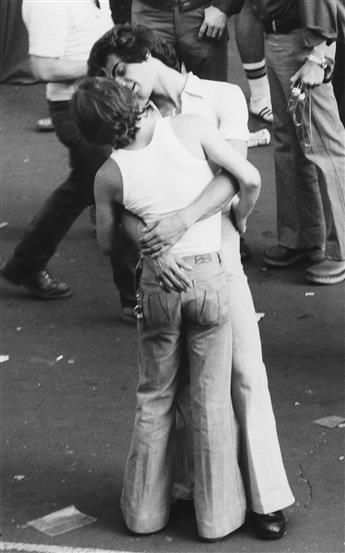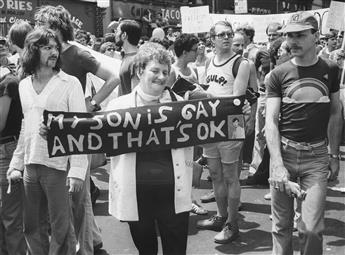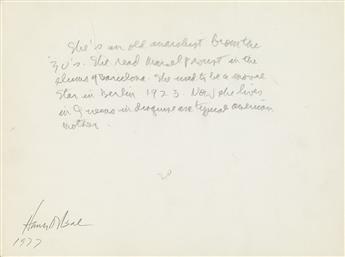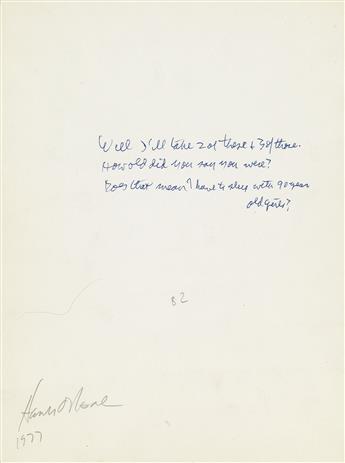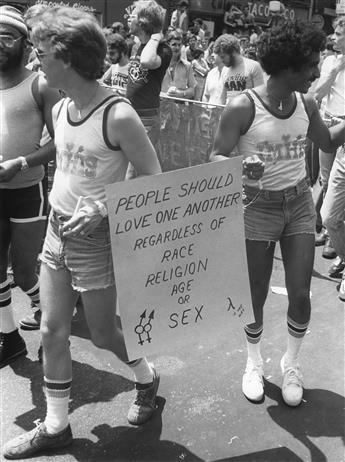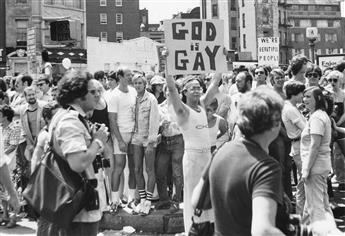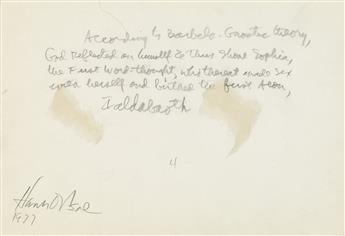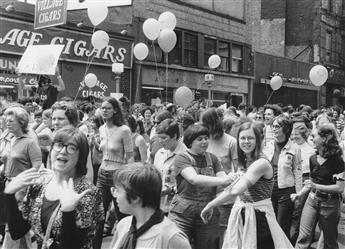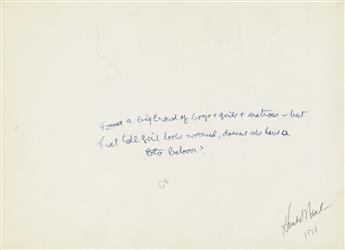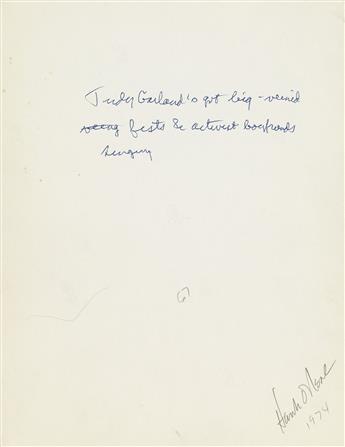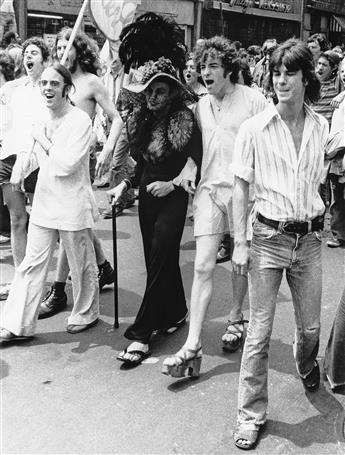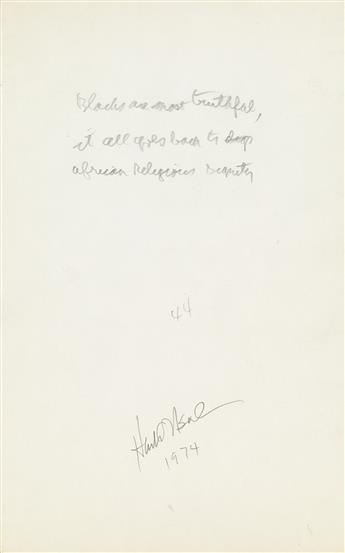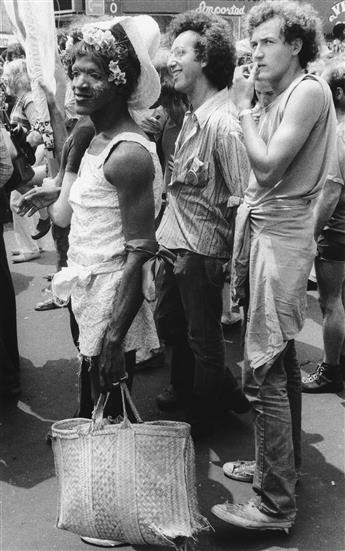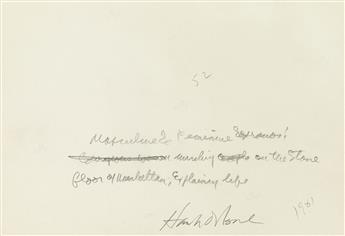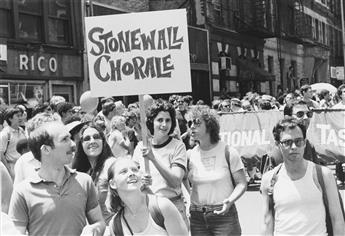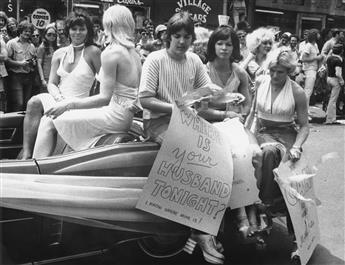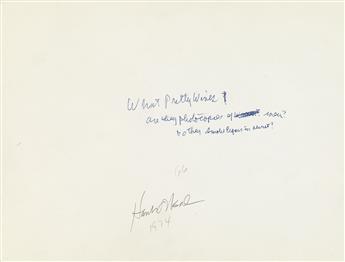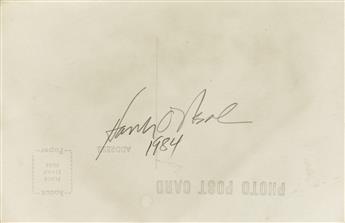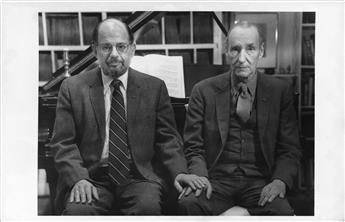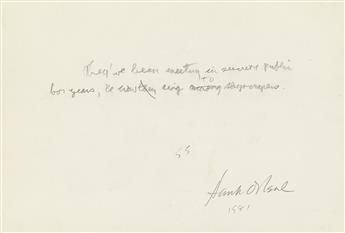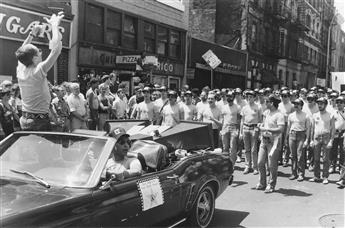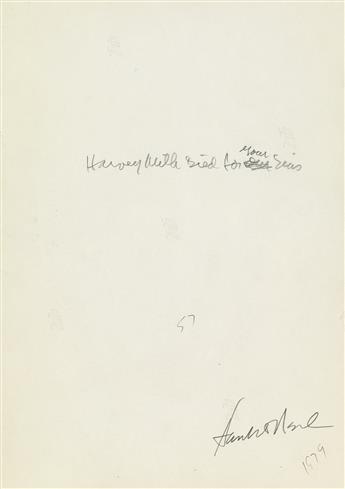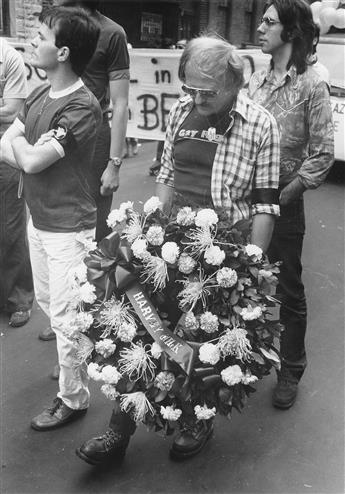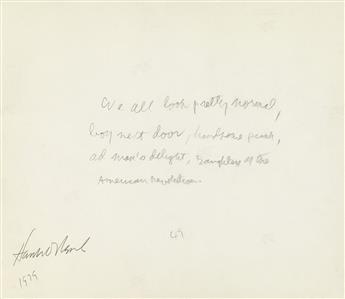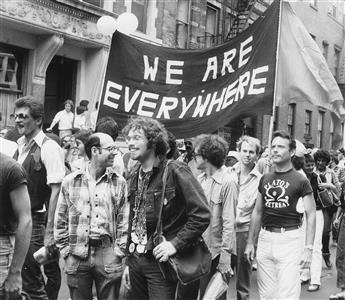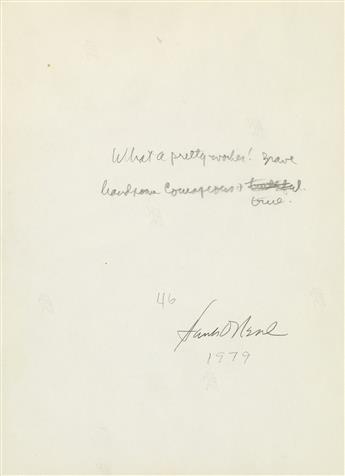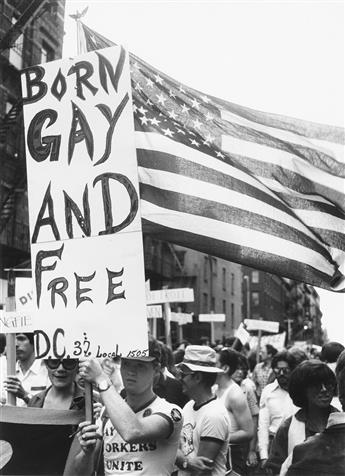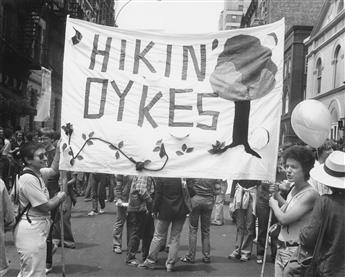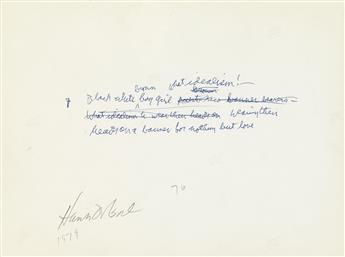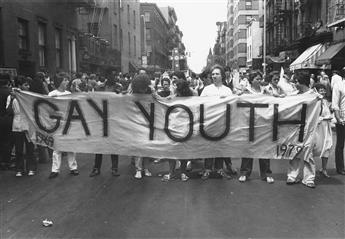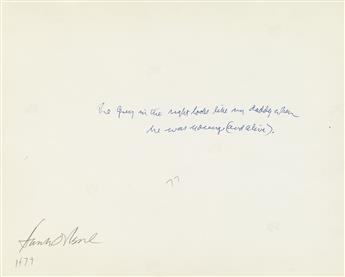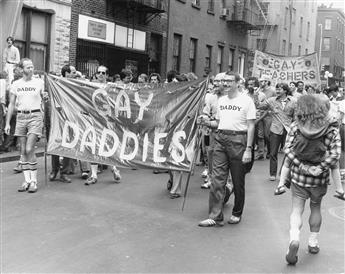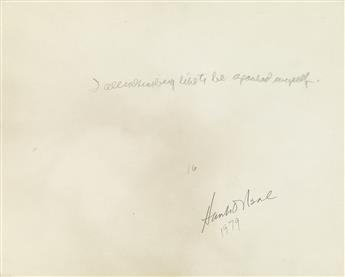Sale 2514 - Lot 117
Unsold
Estimate: $ 70,000 - $ 100,000
ALLEN GINSBERG (1926-1997) & HANK O'NEAL (1940 - )
The Gay Day Archive. With 120 photographs of New York City's Gay Pride Parades by Hank O'Neal; each annotated by Allen Ginsberg.
A festive visual compilation by the NY-based photographer and author O'Neal of the parade signifying the Gay Liberation Movement. Pictured are an array of fun-loving and politically-motivated participants, several openly displaying affection. With photographs of the transgender activist Marsha P. Johnson. Silver prints, various sizes, with most of the sheets 6x7 1/2 inches, 15.2x19 cm., or the reverse; each captioned by Ginsberg, and signed and dated by O'Neal on verso. 1974-83. AND--An additional group of approximately 165 photographs by O'Neal of the NYC parades, comprising 95 silver prints, various sizes but most 11x14 inches, 28x35.6 cm., and the reverse, 5 are signed and dated by O'Neal and contain Ginsberg's captions; and 70 smaller silver prints, various sizes to 8x10 inches, 20.3x25.4 cm., and the reverse, a few with O'Neal's hand stamp and notations and many are dated, in pencil, on verso; with duplicates and triplicates. 1974-83.
The Gay Day Archive. With 120 photographs of New York City's Gay Pride Parades by Hank O'Neal; each annotated by Allen Ginsberg.
A festive visual compilation by the NY-based photographer and author O'Neal of the parade signifying the Gay Liberation Movement. Pictured are an array of fun-loving and politically-motivated participants, several openly displaying affection. With photographs of the transgender activist Marsha P. Johnson. Silver prints, various sizes, with most of the sheets 6x7 1/2 inches, 15.2x19 cm., or the reverse; each captioned by Ginsberg, and signed and dated by O'Neal on verso. 1974-83. AND--An additional group of approximately 165 photographs by O'Neal of the NYC parades, comprising 95 silver prints, various sizes but most 11x14 inches, 28x35.6 cm., and the reverse, 5 are signed and dated by O'Neal and contain Ginsberg's captions; and 70 smaller silver prints, various sizes to 8x10 inches, 20.3x25.4 cm., and the reverse, a few with O'Neal's hand stamp and notations and many are dated, in pencil, on verso; with duplicates and triplicates. 1974-83.
Additional Details
Today, at least a million spectators line the Pride parade route along Fifth Avenue. But, in its earliest days, the celebration was a much smaller event characterized by NY-style high energy, pithy signage, raucous crowd chants, extensive cruising and great music (remember disco?). Most of O'Neal's photographs focused on NY's West Village or Christopher Street, the epicenter of gaydom. A range of sub-cultures associated with the LGBTQ+ community are depicted: young and longhaired post-hippies, bare-chested muscle men, drag queens, fairies, leather-ites, Gay Daddies, protestors, pastors, parents of gays and the hikin' dykes.
Some participants hold placards, including those protesting Anita Bryant, the once popular singer, who emerged as an strident anti-gay crusader in the late 1970s and teamed up with the divisive evangelical figure Jerry Falwell. A banner for the Gay Men's Health Project is a harbinger of the tragic era to come.
Ginsberg first saw the photographs in 1982 and, according to O'Neal, was inspired to add his distinctive captions to the backs of the prints. His brief handwritten notes, which often reflect personal or historic observations, strike a wonderful tone. A caption that accompanies a picture of a group of men holding the banner WE ARE EVERYWHERE reads, "We all look pretty normal, boy next door, handsome punk, ad man's delight, daughters of the American Revolution." A shot depicting two men dressed in ancient Roman costume reads, "Clark Gable and Nero on a date, smiling for the 1920s Hollywood photogs." His lengthy caption for the Johnson print (featured on the catalog cover) reads: "If I keep dressing up like this I'll save the world from nuclear apocalypse. But will anyone love me for it? I'll save the world anyway I know that looks good." And still others honor the courageous and brave: one participant holds a wreath bearing the name Harvey Milk; Ginsberg wrote, "Harvey Milk died for your sins." (He had initially written "our" but crossed it out).
O'Neal's photographs were reproduced in the book, Gay Day: The Golden Age of the Christopher Street Parade, 1974-1983 (Abrams, 2006), with a Preface by William Burroughs. Interestingly during this same period Ginsberg had revisited his own Beat-era photographs, which were shot in the 1950s and processed at a local drugstore. He developed a unique hybrid picture-text style, adding detailed, handwritten mini-narratives to the lower margins of the prints, which captured his vivid, visual memories.
Some participants hold placards, including those protesting Anita Bryant, the once popular singer, who emerged as an strident anti-gay crusader in the late 1970s and teamed up with the divisive evangelical figure Jerry Falwell. A banner for the Gay Men's Health Project is a harbinger of the tragic era to come.
Ginsberg first saw the photographs in 1982 and, according to O'Neal, was inspired to add his distinctive captions to the backs of the prints. His brief handwritten notes, which often reflect personal or historic observations, strike a wonderful tone. A caption that accompanies a picture of a group of men holding the banner WE ARE EVERYWHERE reads, "We all look pretty normal, boy next door, handsome punk, ad man's delight, daughters of the American Revolution." A shot depicting two men dressed in ancient Roman costume reads, "Clark Gable and Nero on a date, smiling for the 1920s Hollywood photogs." His lengthy caption for the Johnson print (featured on the catalog cover) reads: "If I keep dressing up like this I'll save the world from nuclear apocalypse. But will anyone love me for it? I'll save the world anyway I know that looks good." And still others honor the courageous and brave: one participant holds a wreath bearing the name Harvey Milk; Ginsberg wrote, "Harvey Milk died for your sins." (He had initially written "our" but crossed it out).
O'Neal's photographs were reproduced in the book, Gay Day: The Golden Age of the Christopher Street Parade, 1974-1983 (Abrams, 2006), with a Preface by William Burroughs. Interestingly during this same period Ginsberg had revisited his own Beat-era photographs, which were shot in the 1950s and processed at a local drugstore. He developed a unique hybrid picture-text style, adding detailed, handwritten mini-narratives to the lower margins of the prints, which captured his vivid, visual memories.
Exhibition Hours
Exhibition Hours
Aliquam vulputate ornare congue. Vestibulum maximus, libero in placerat faucibus, risus nisl molestie massa, ut maximus metus lectus vel lorem.



